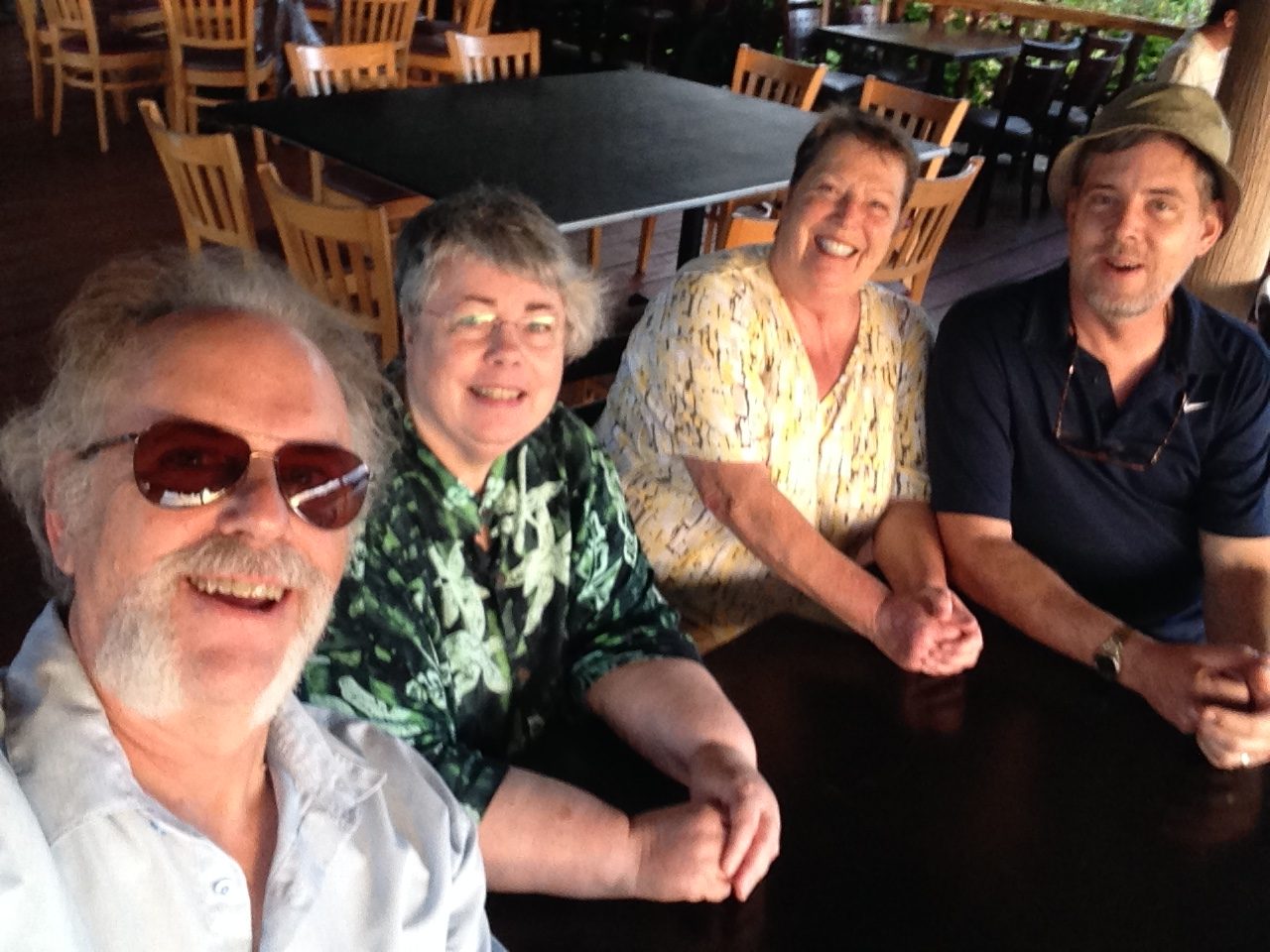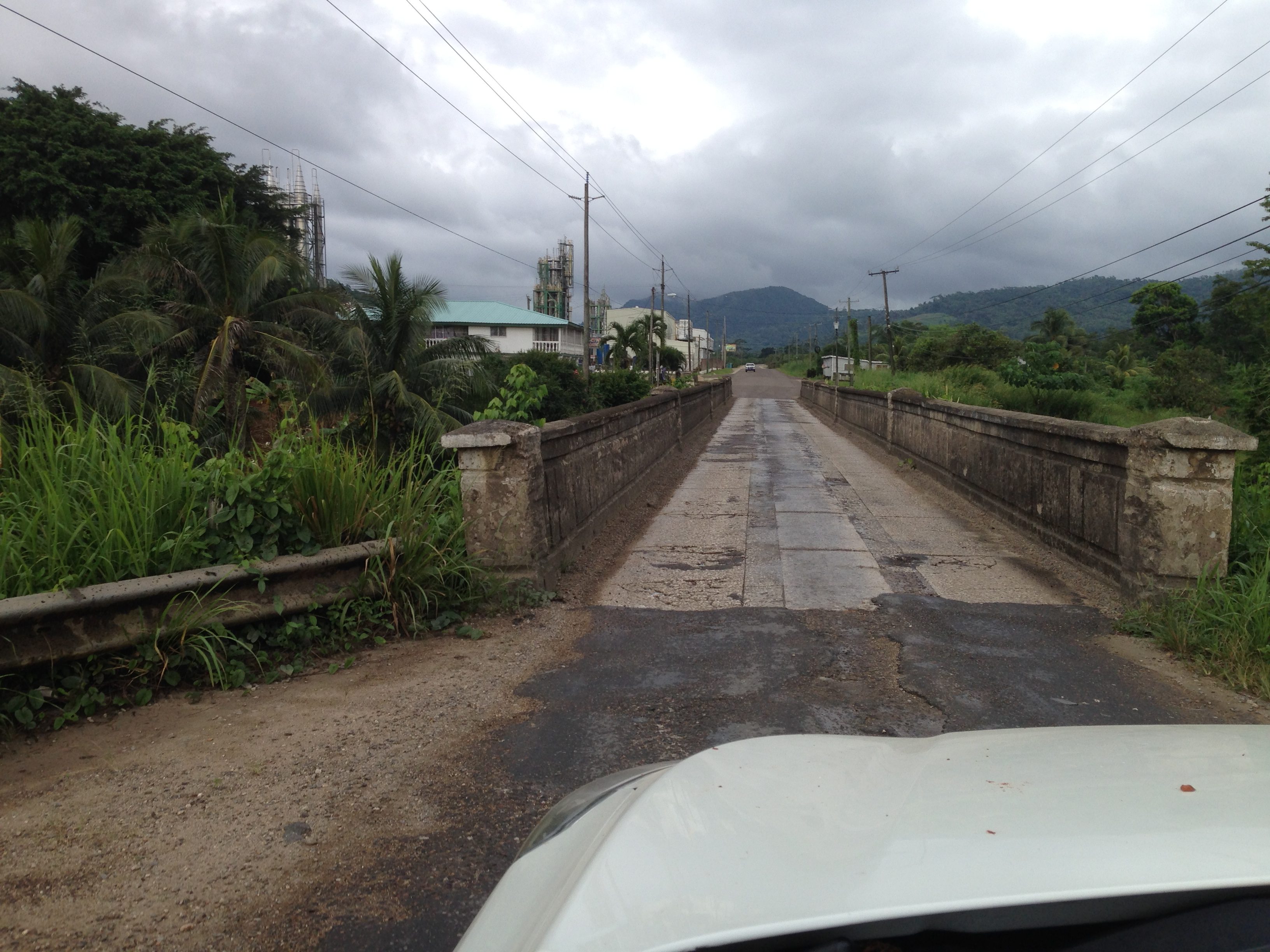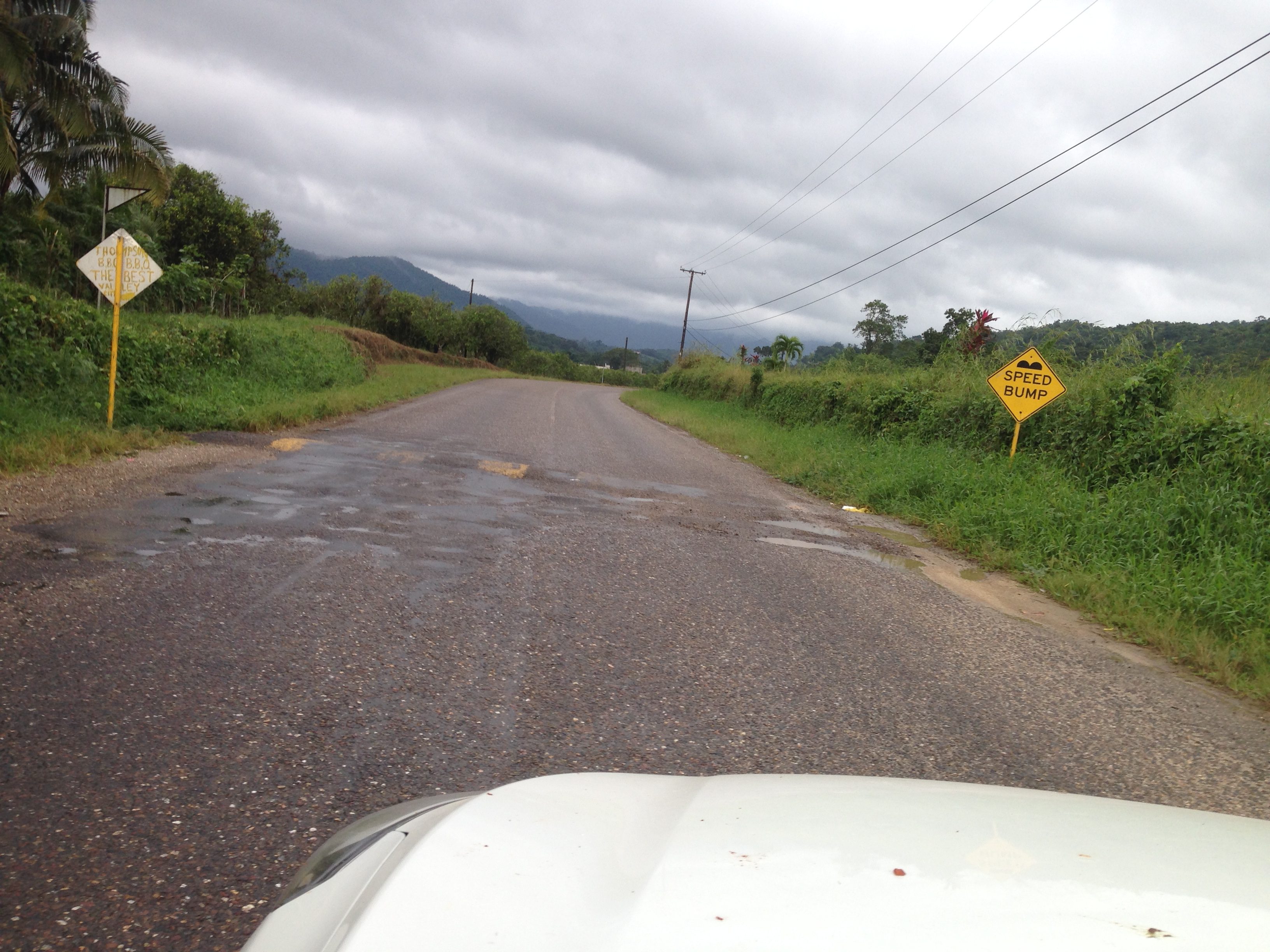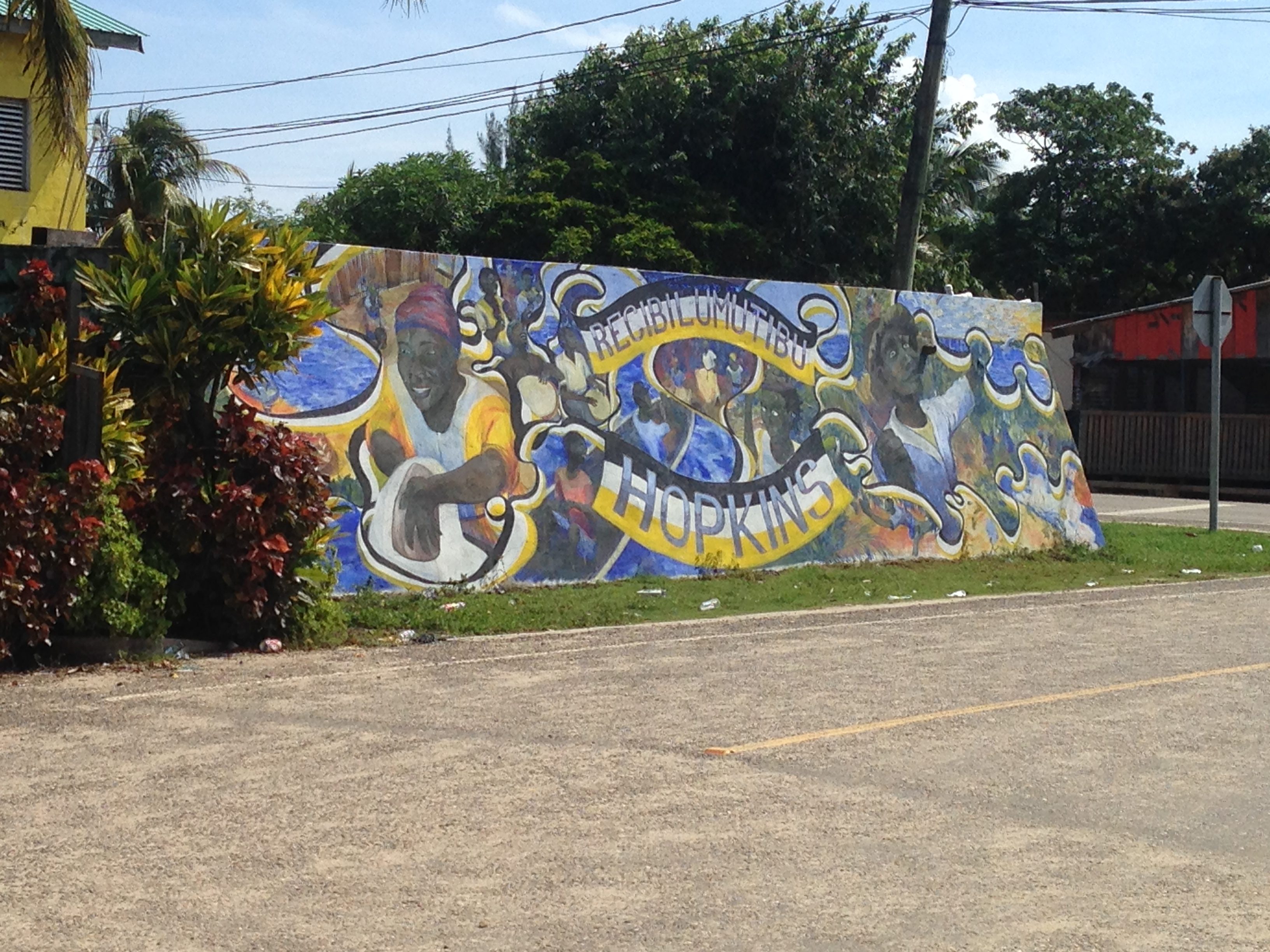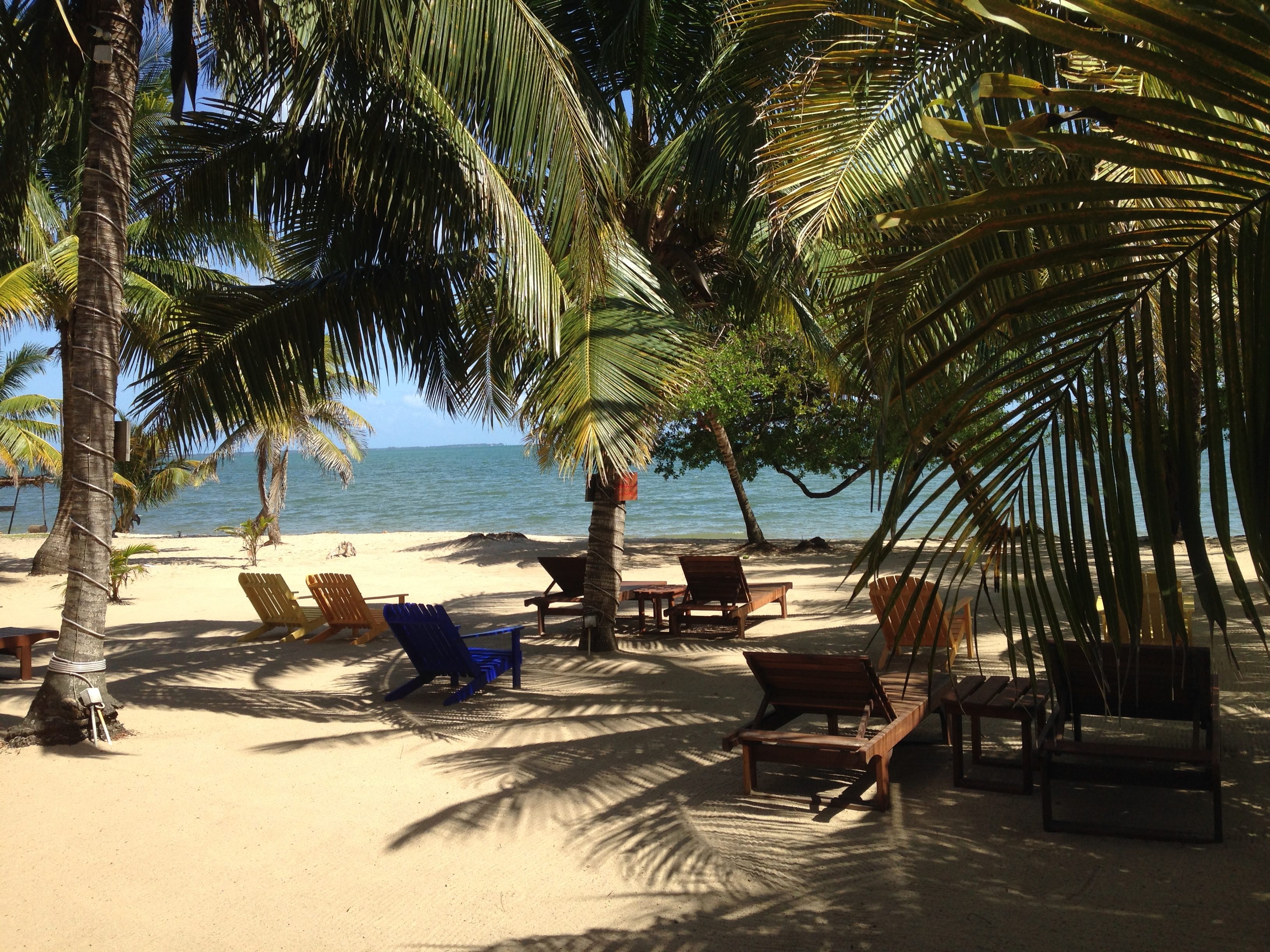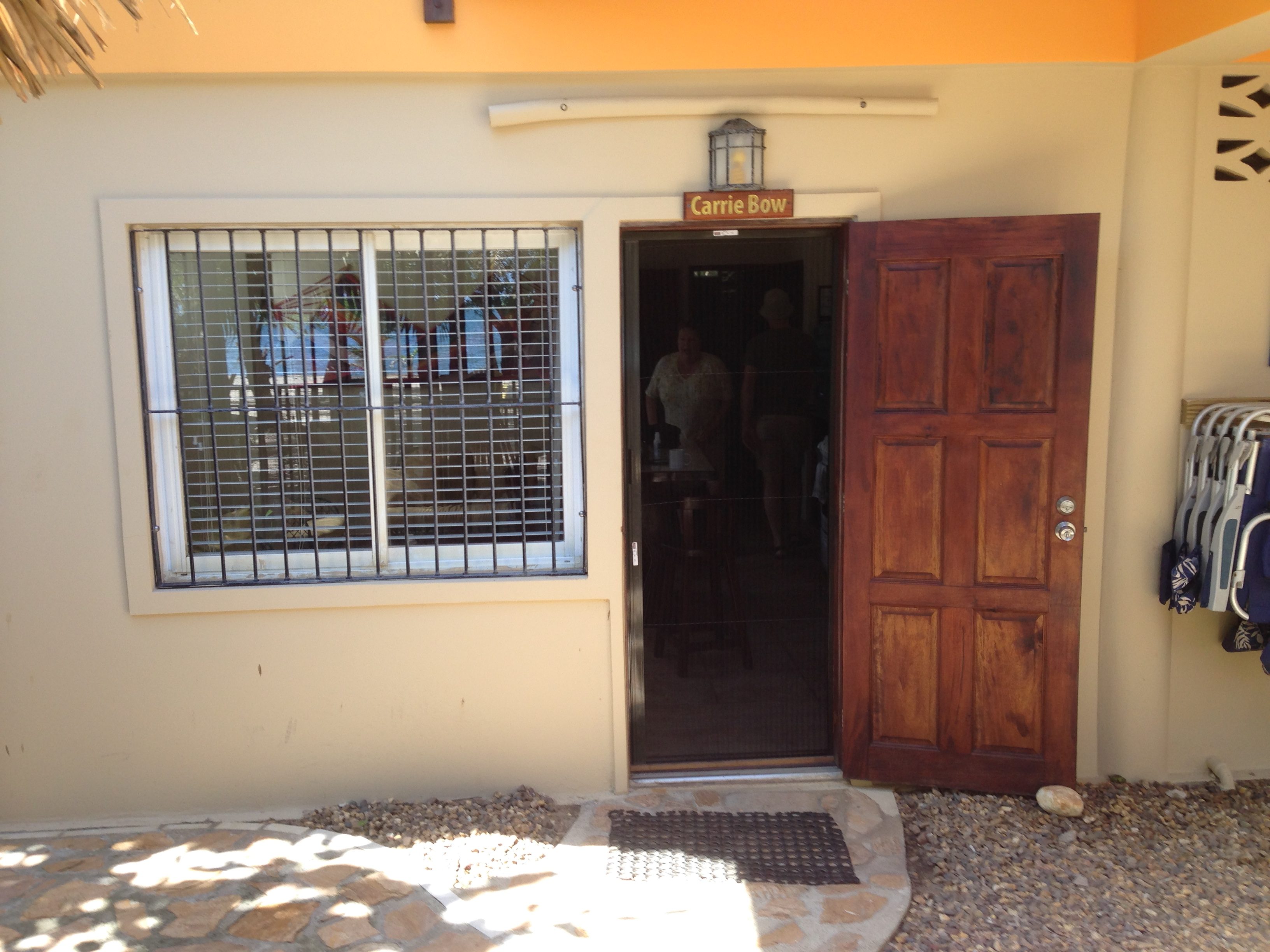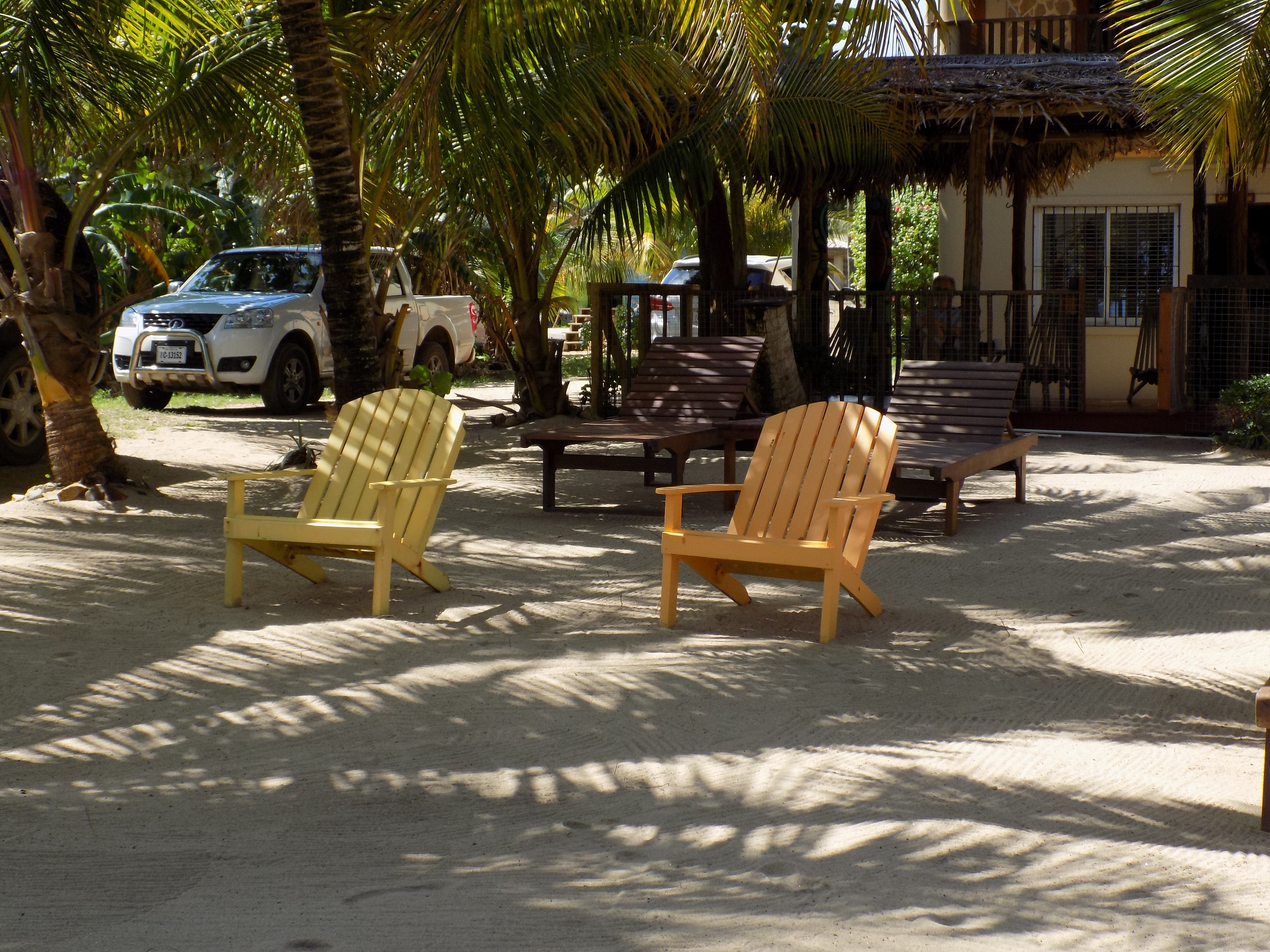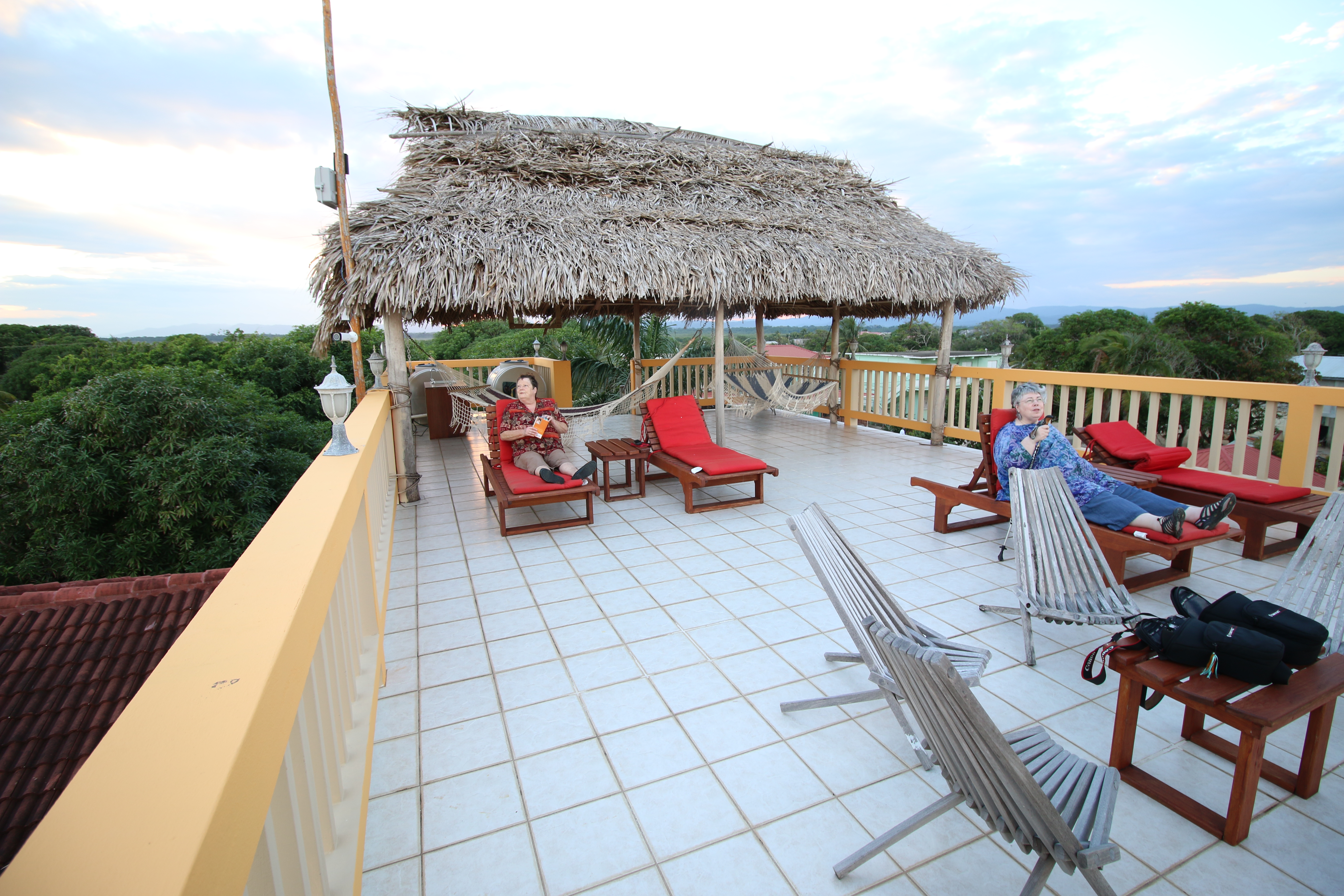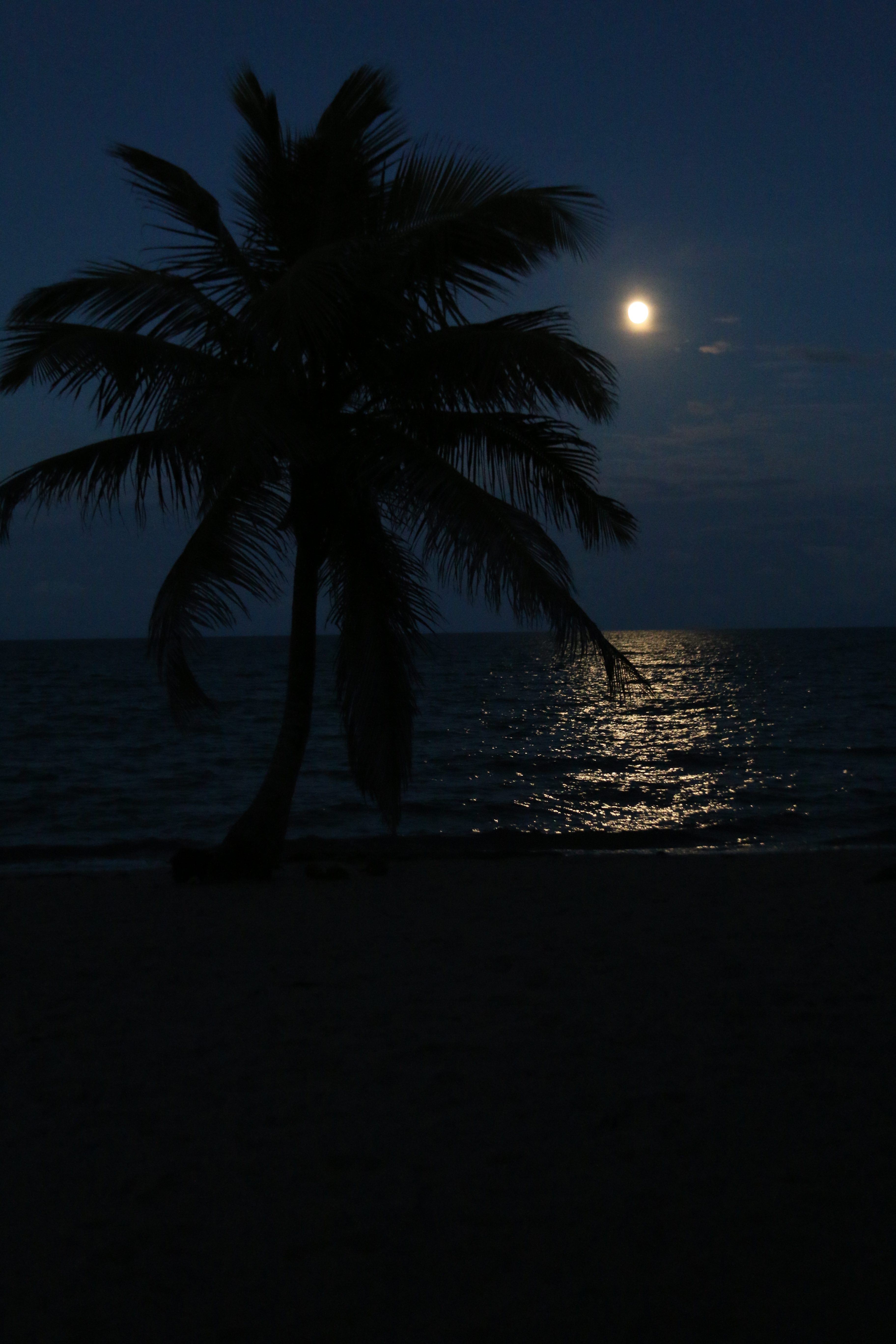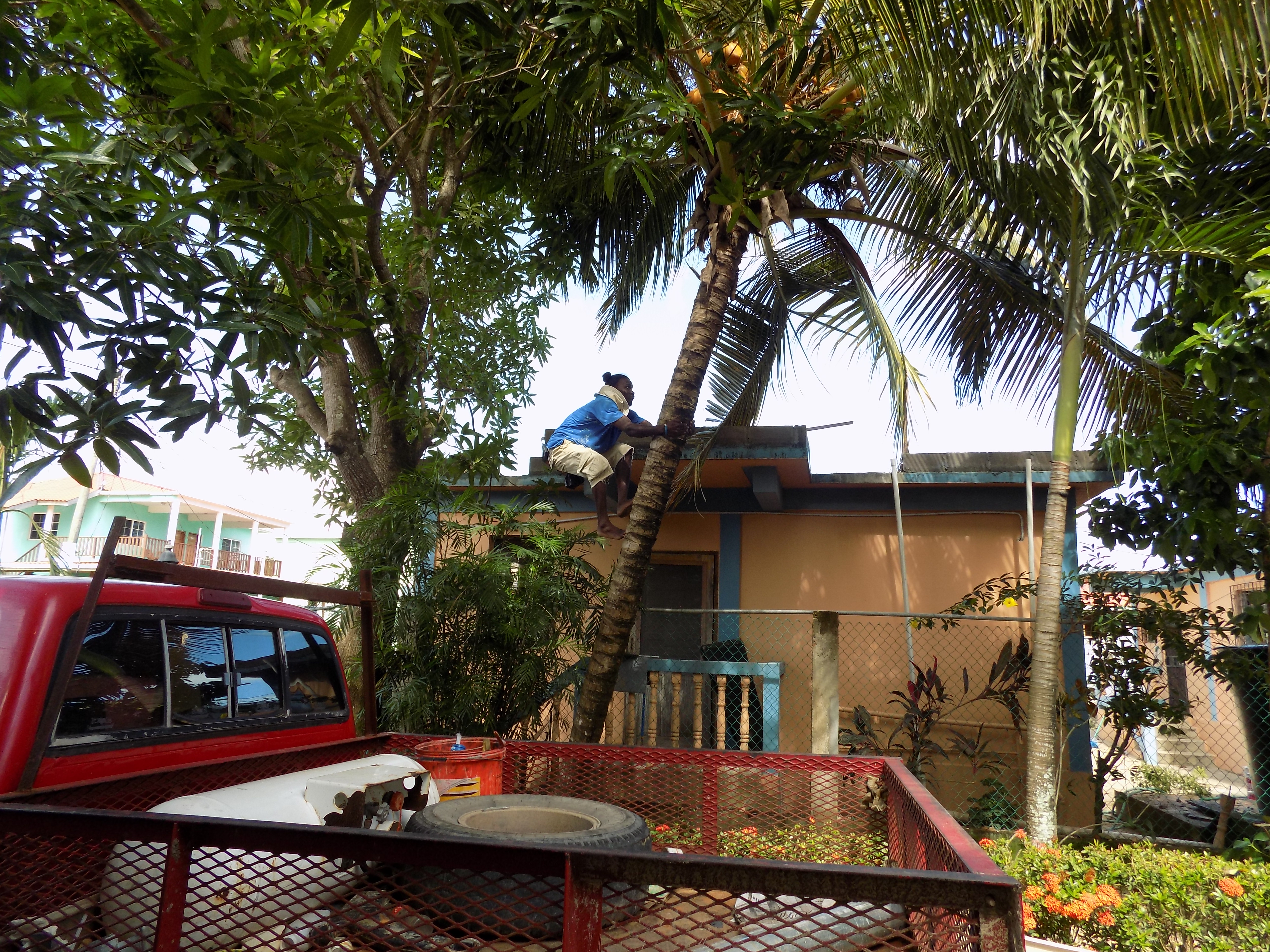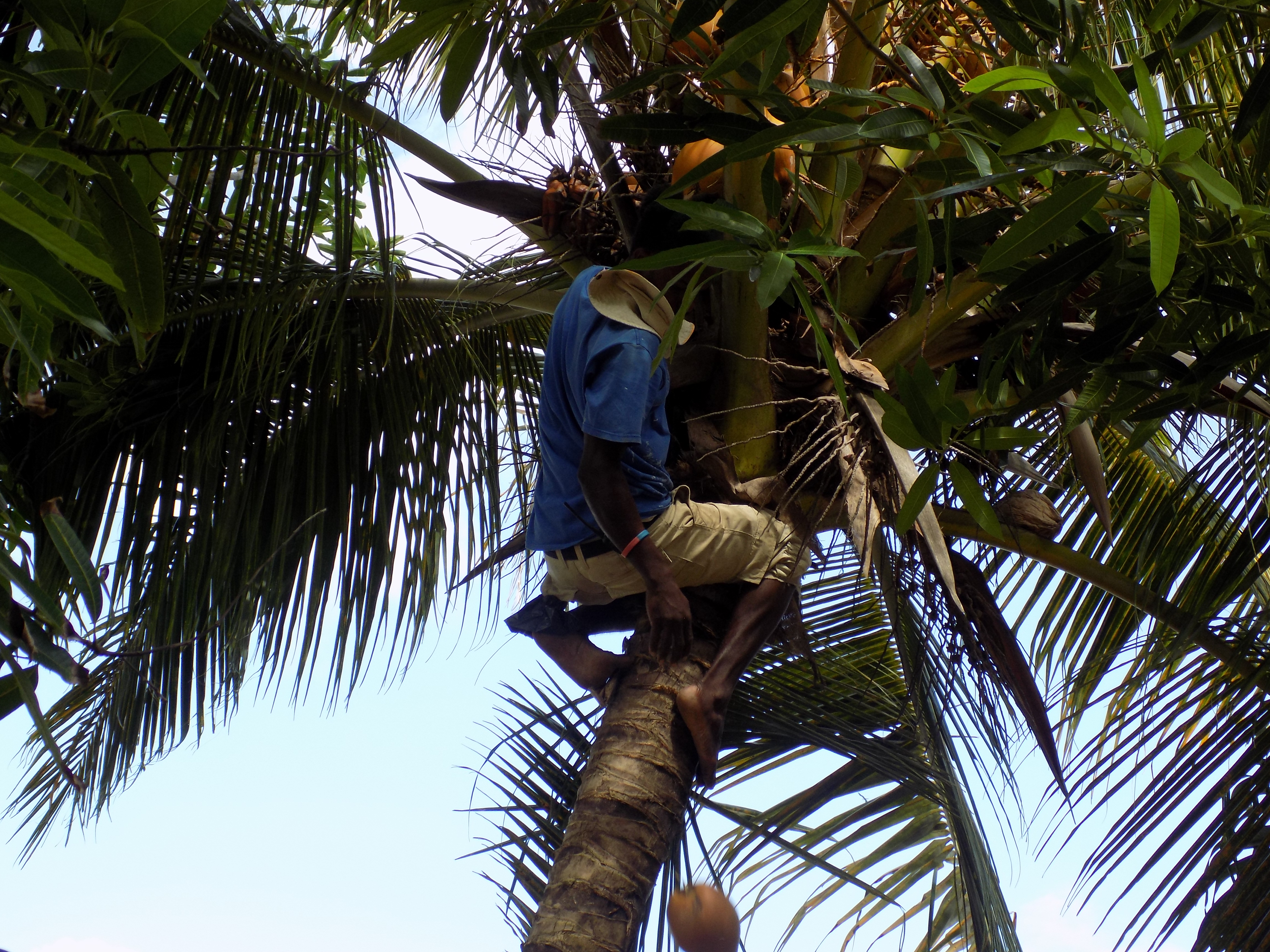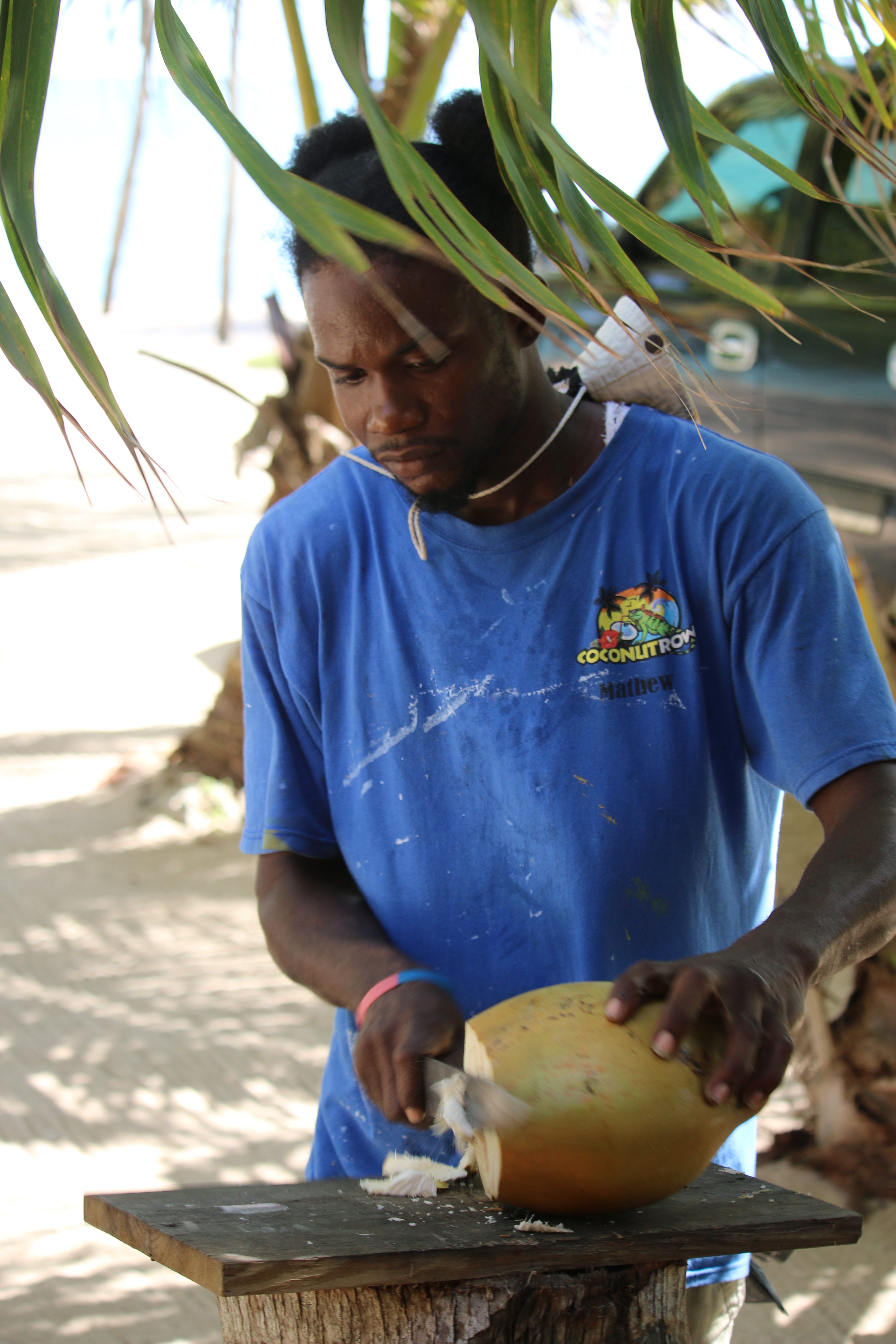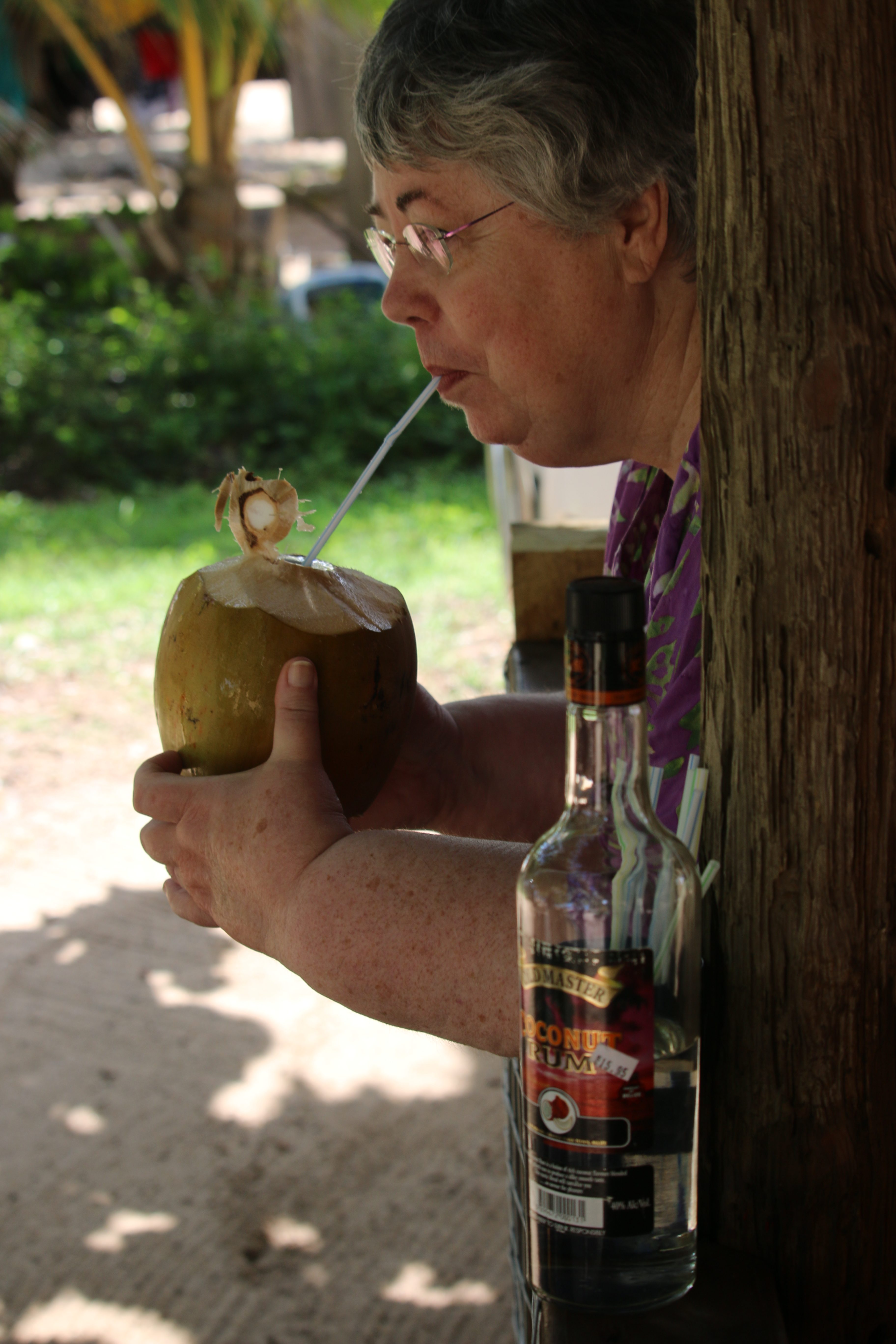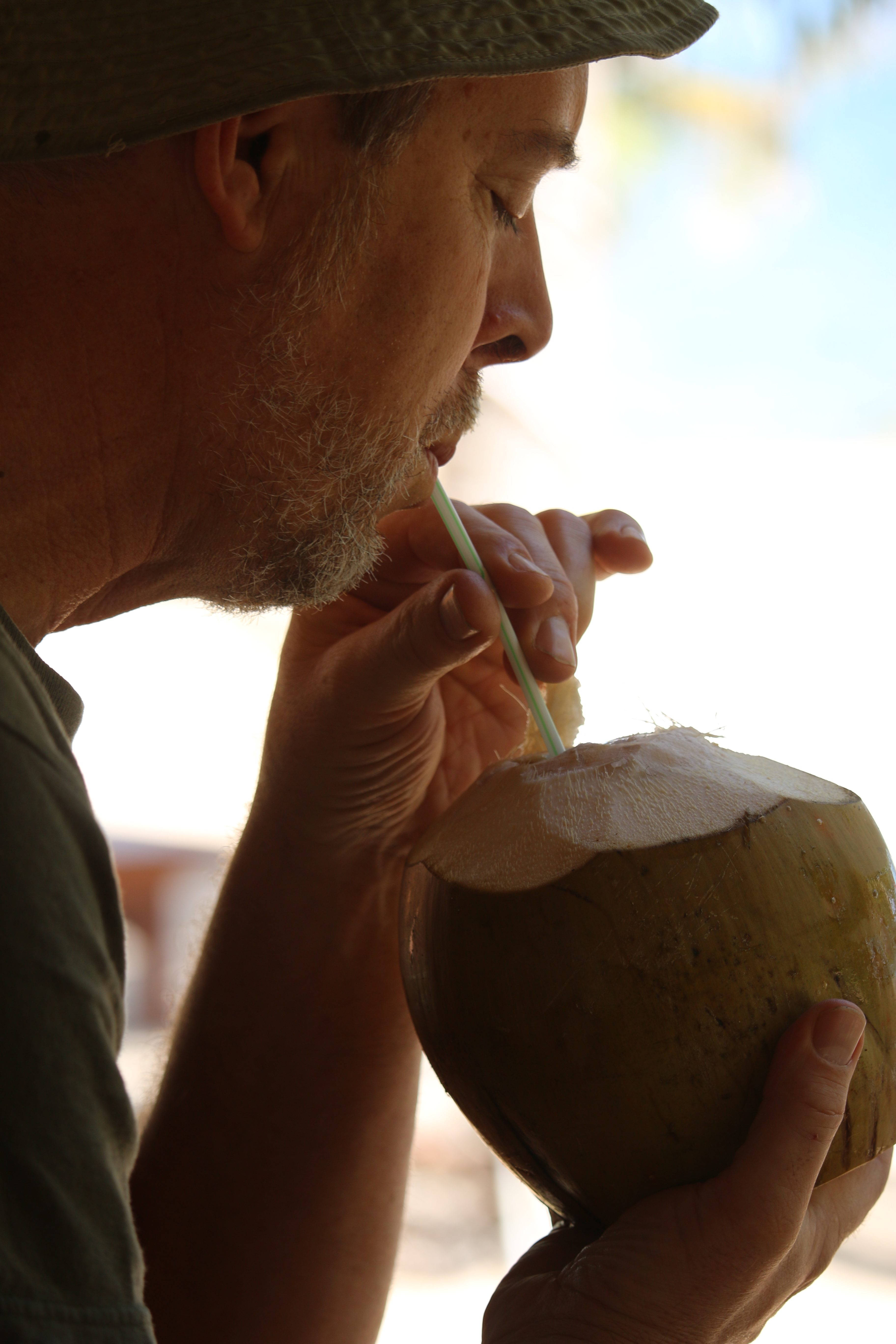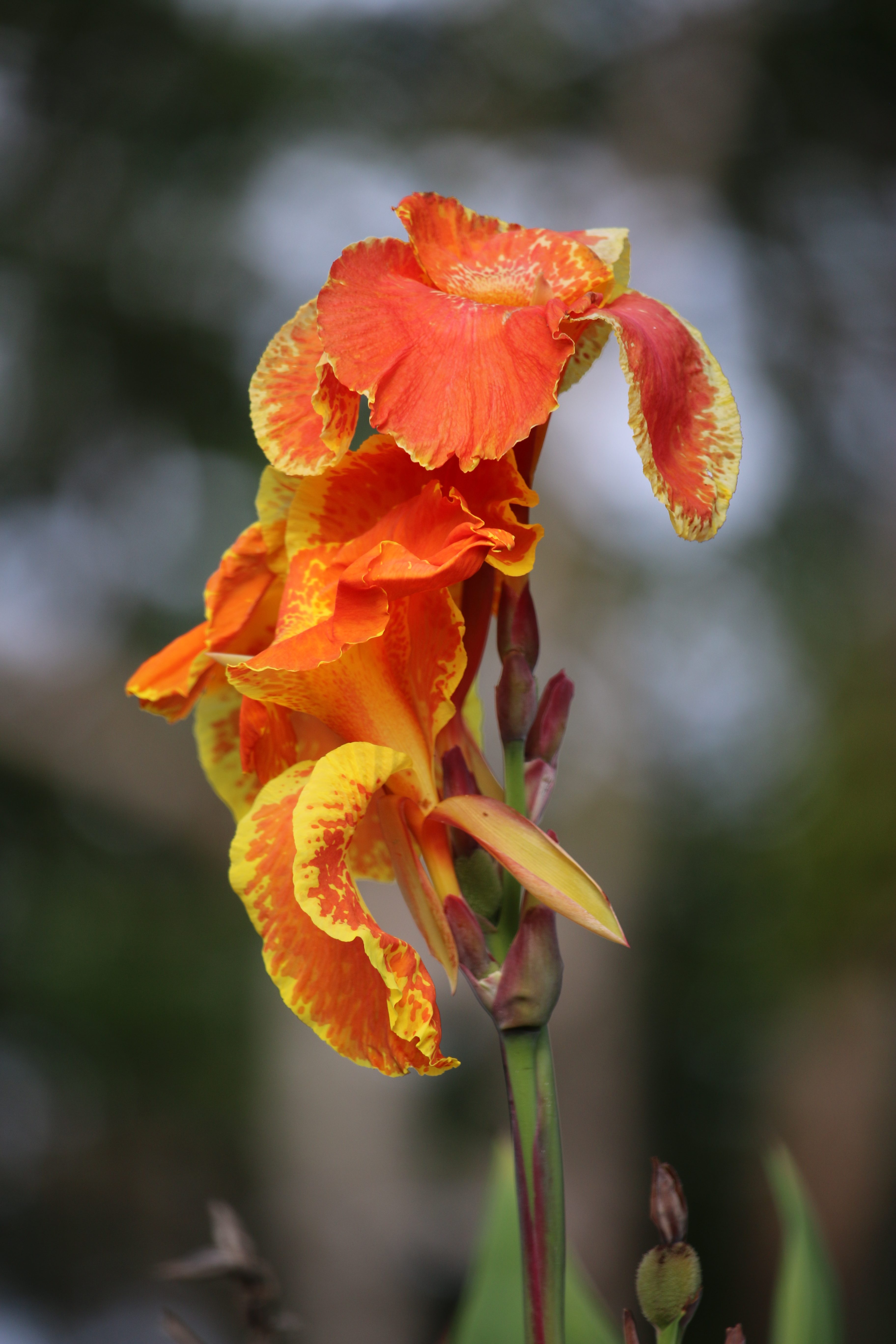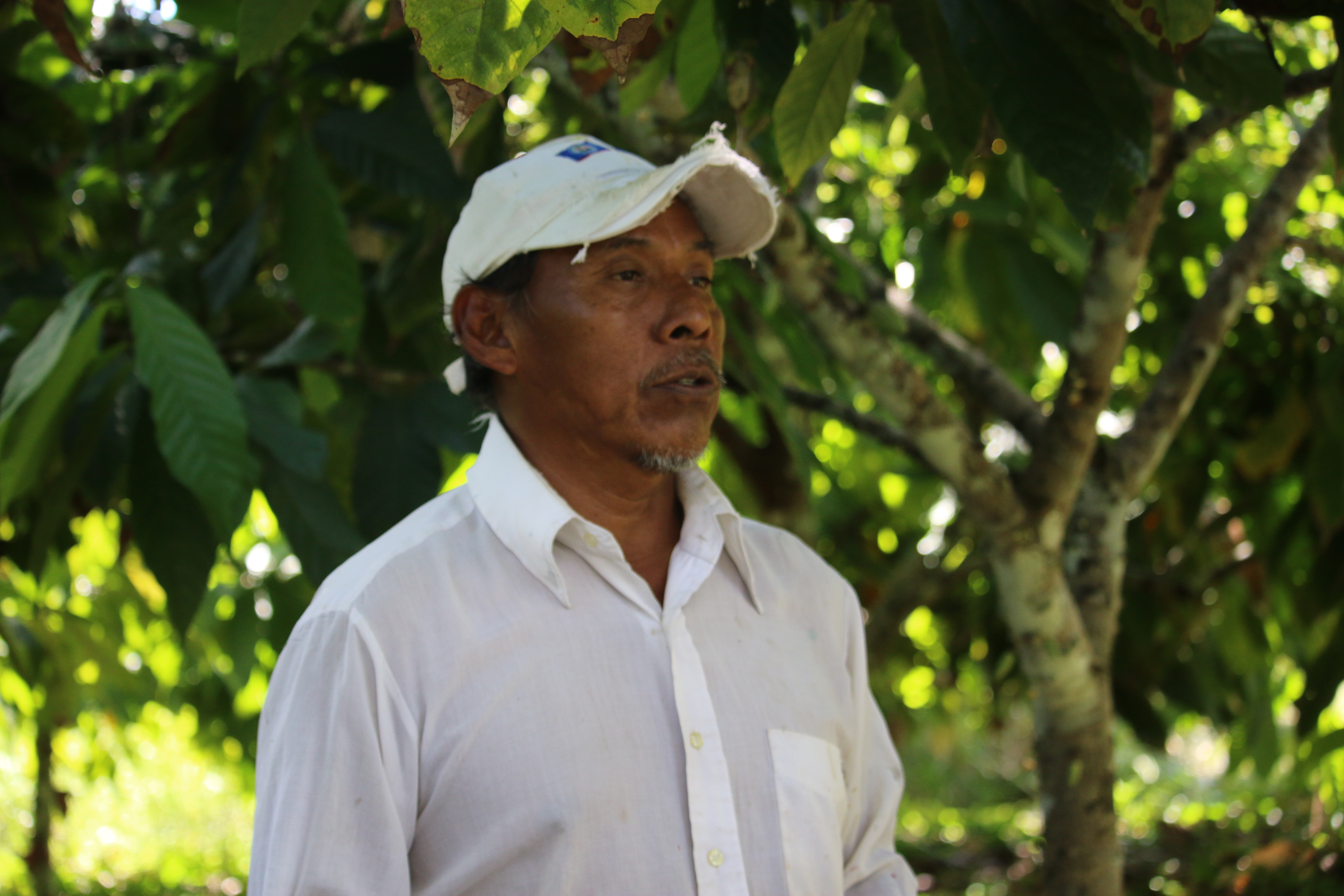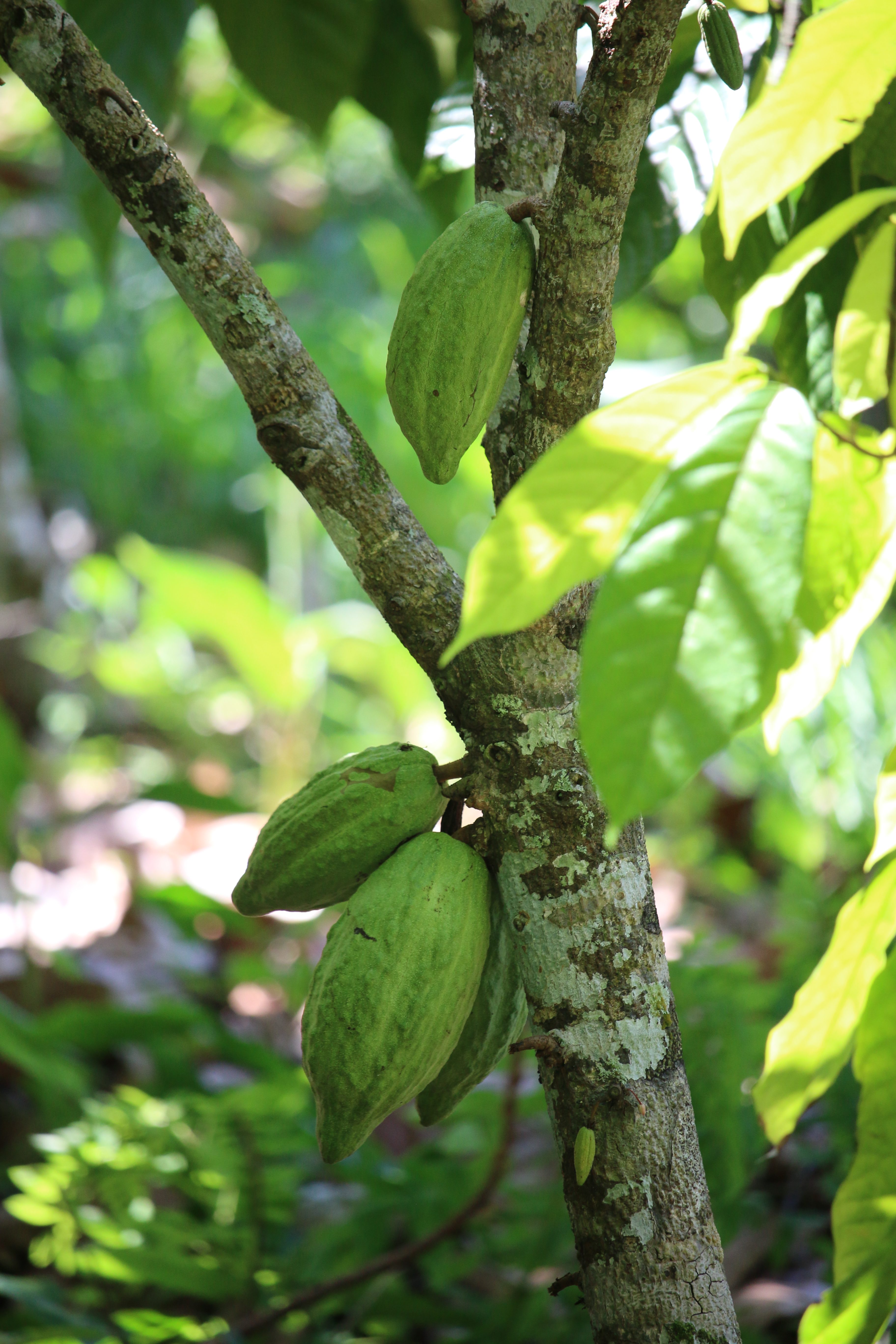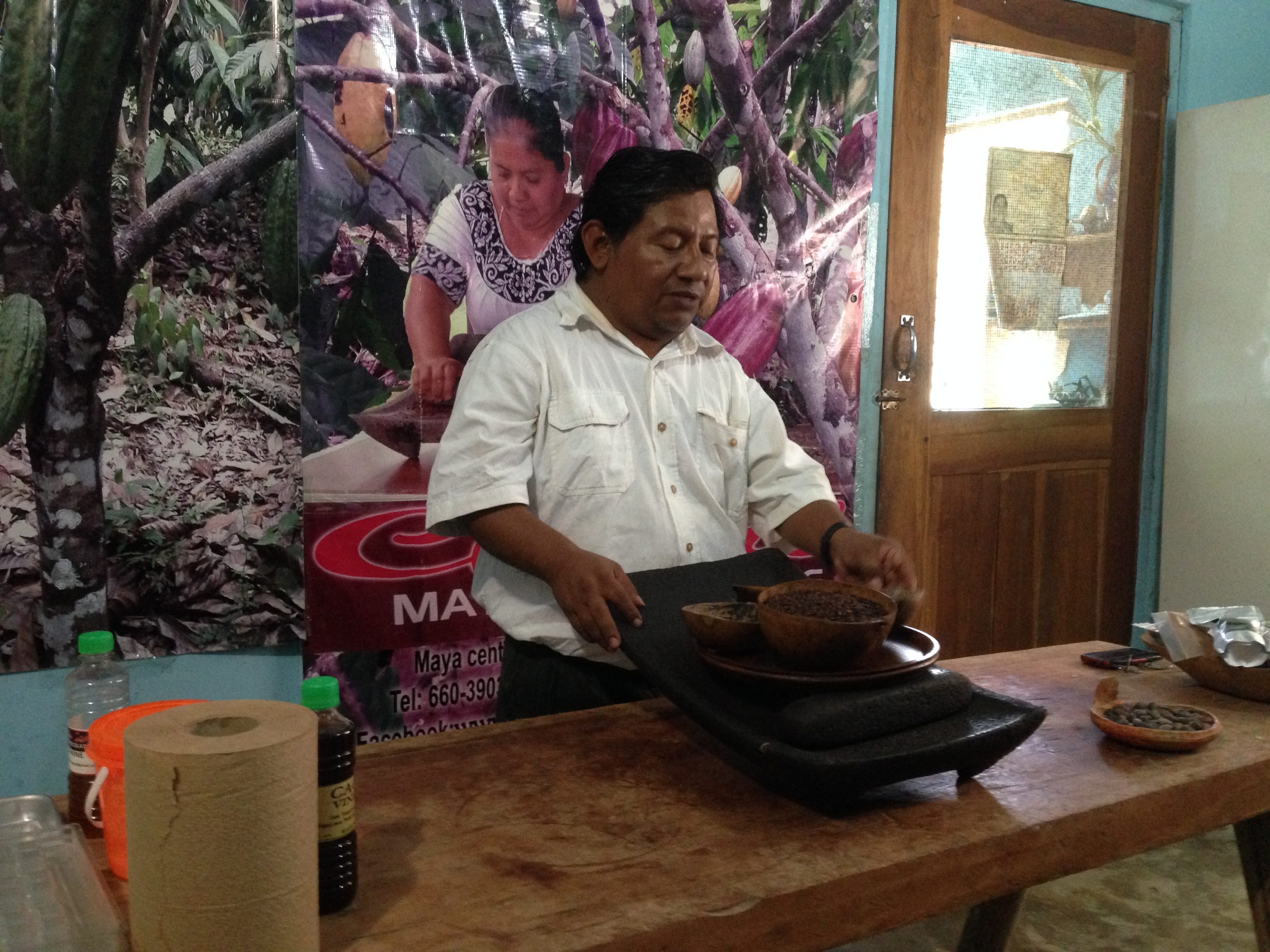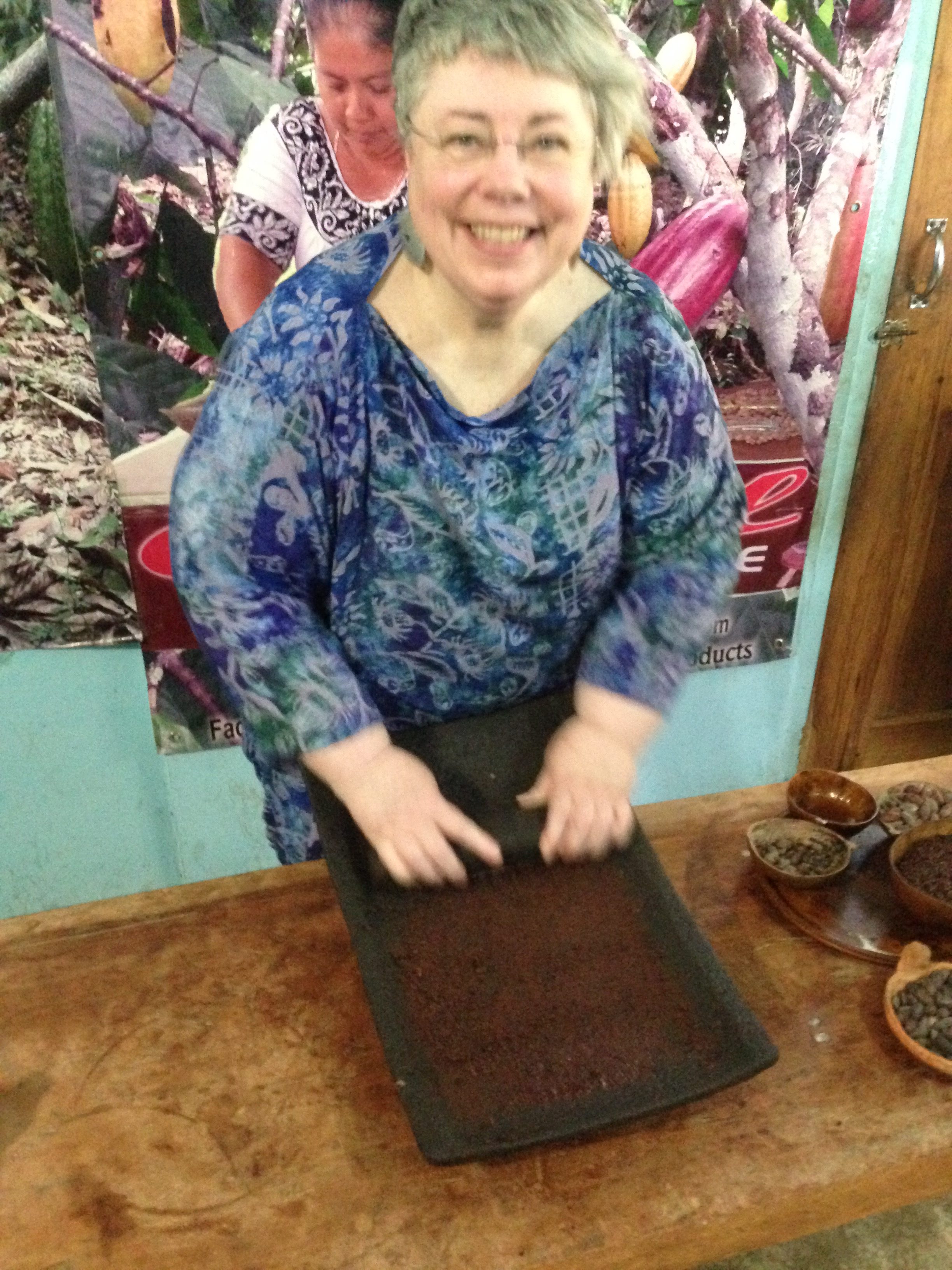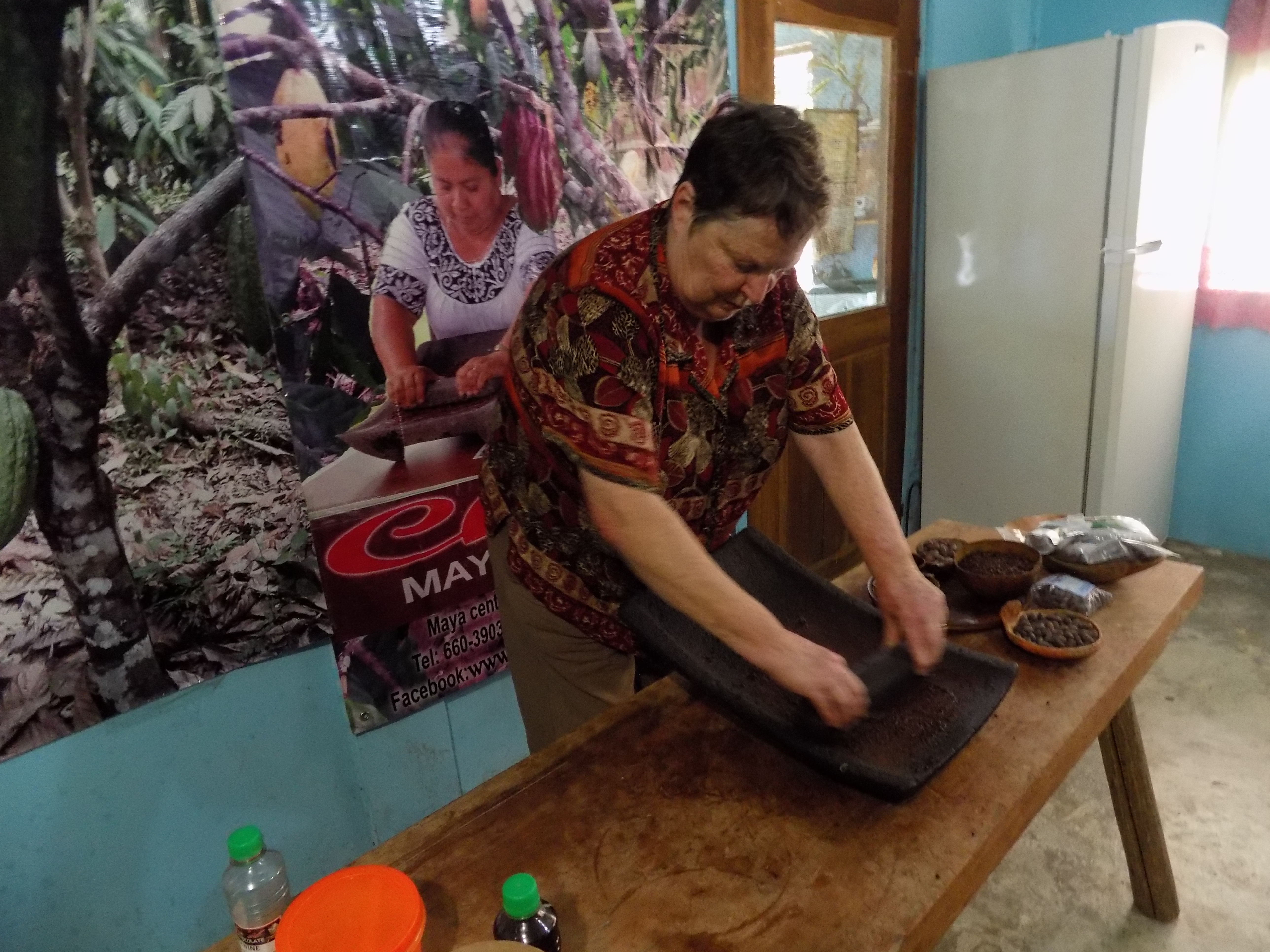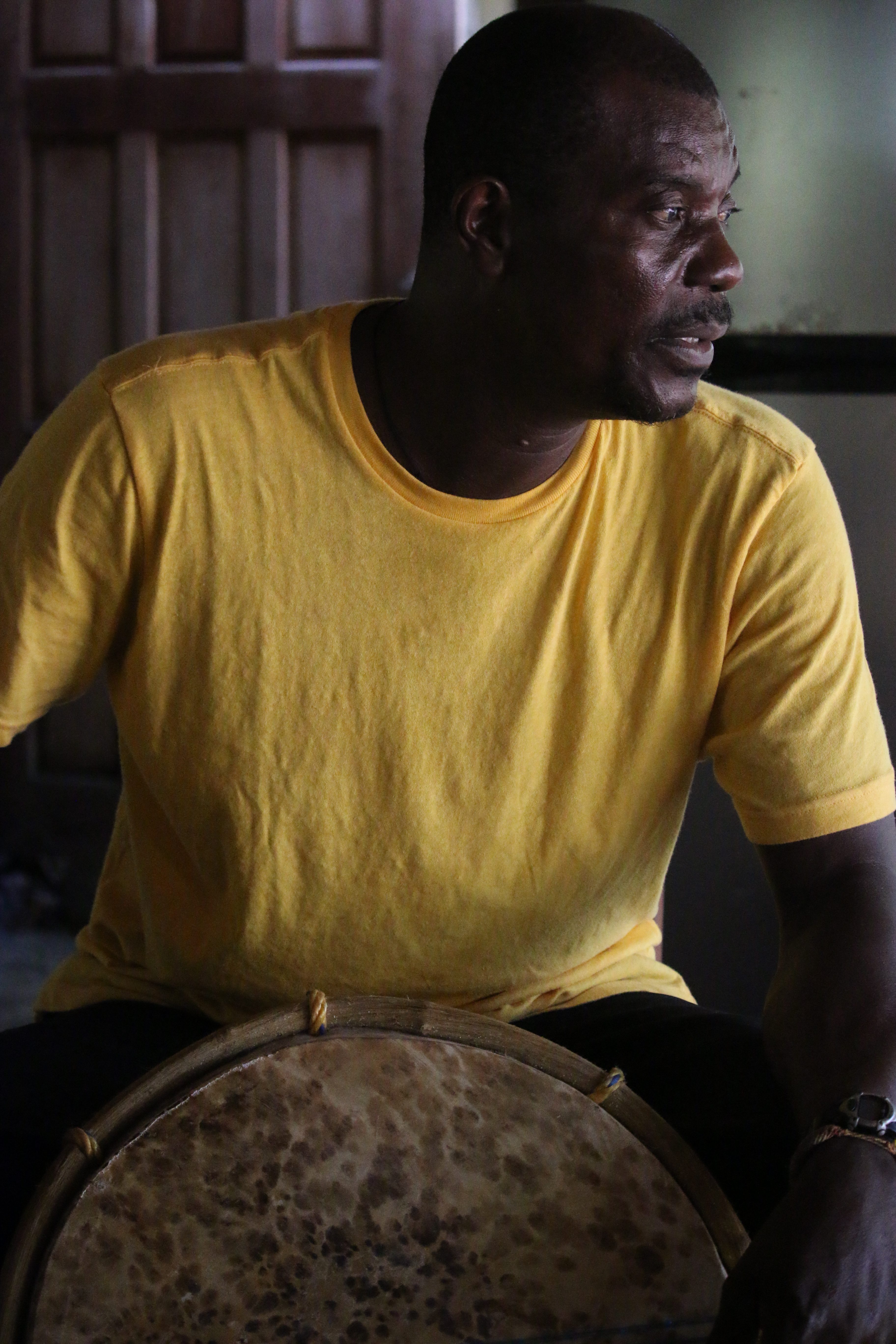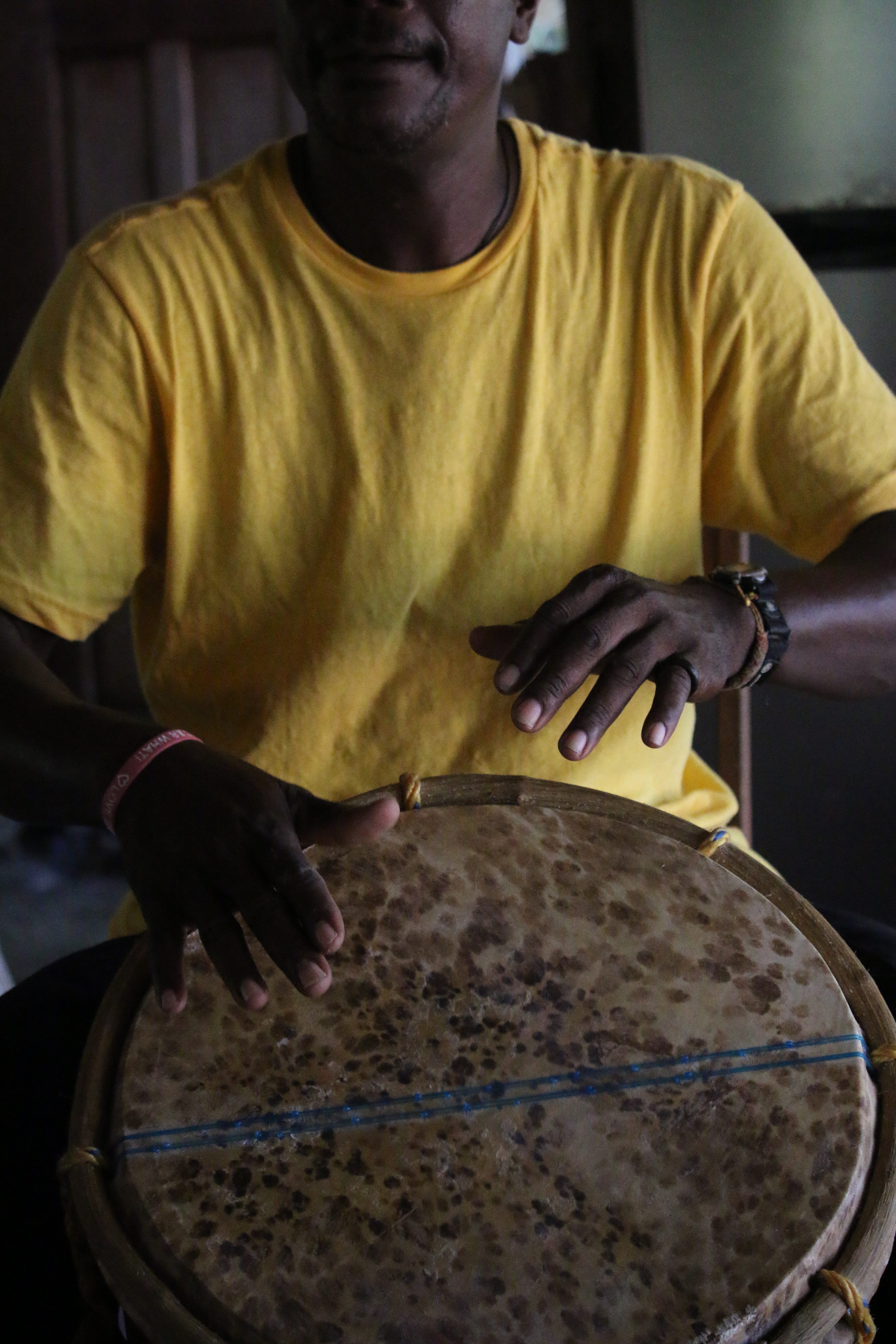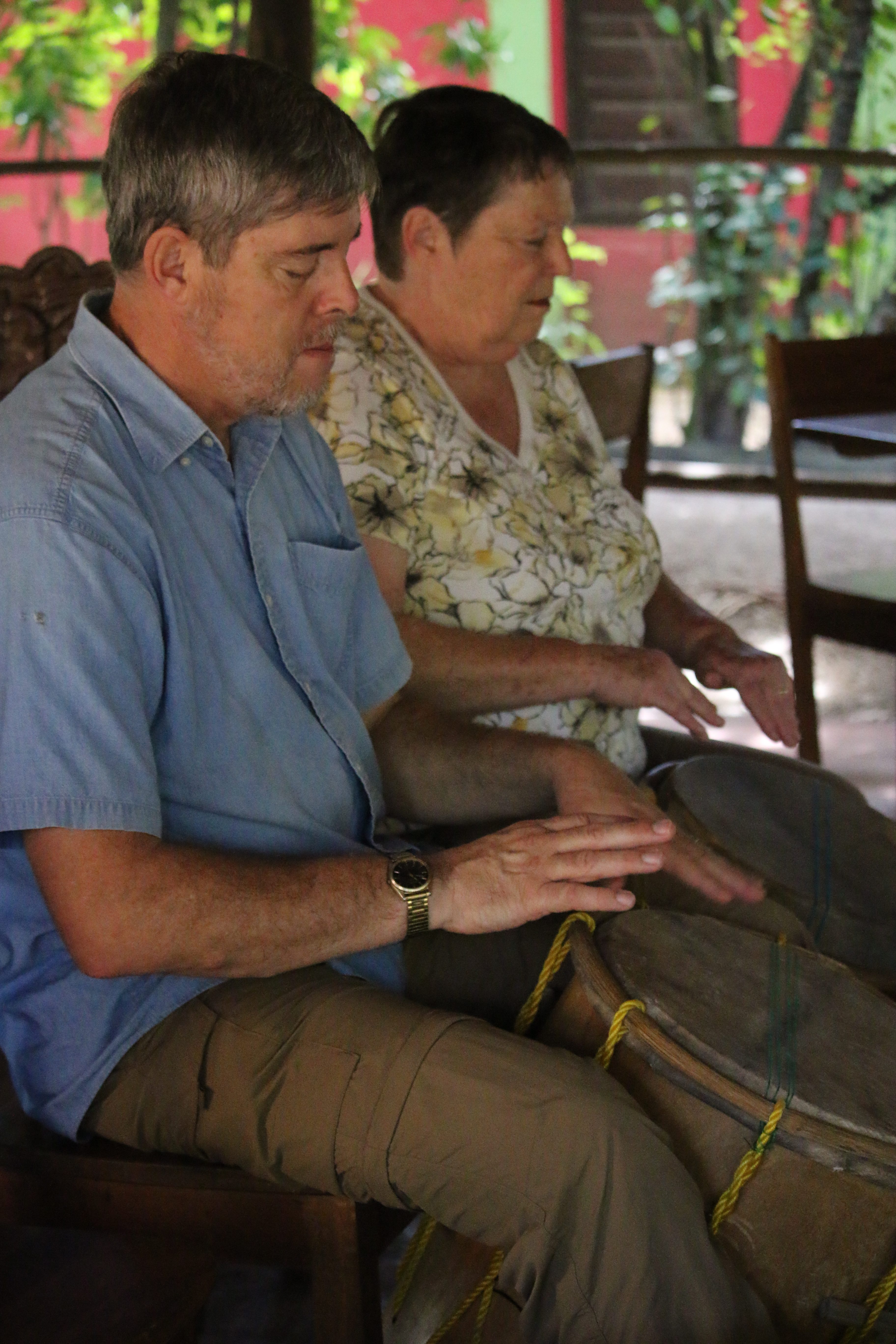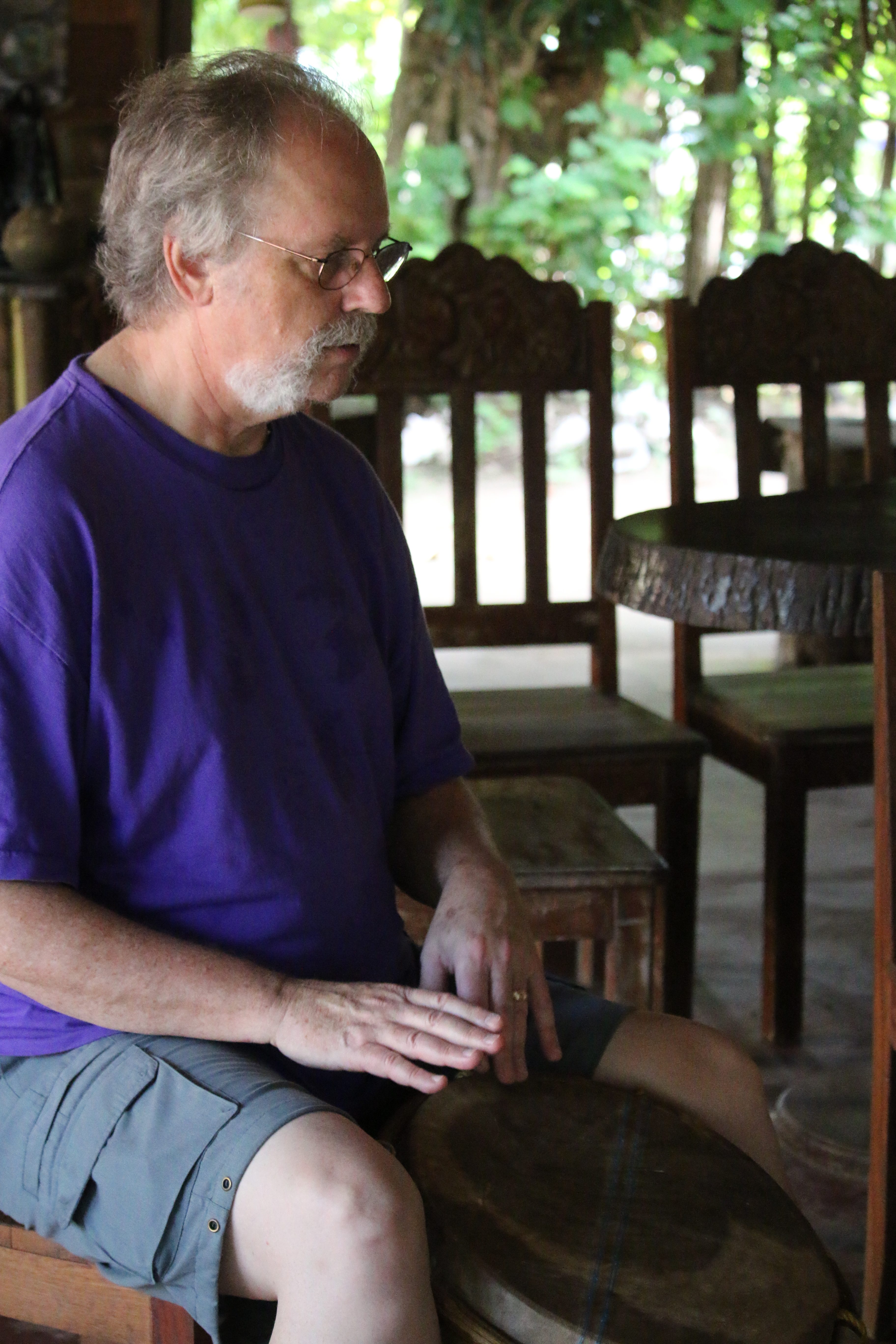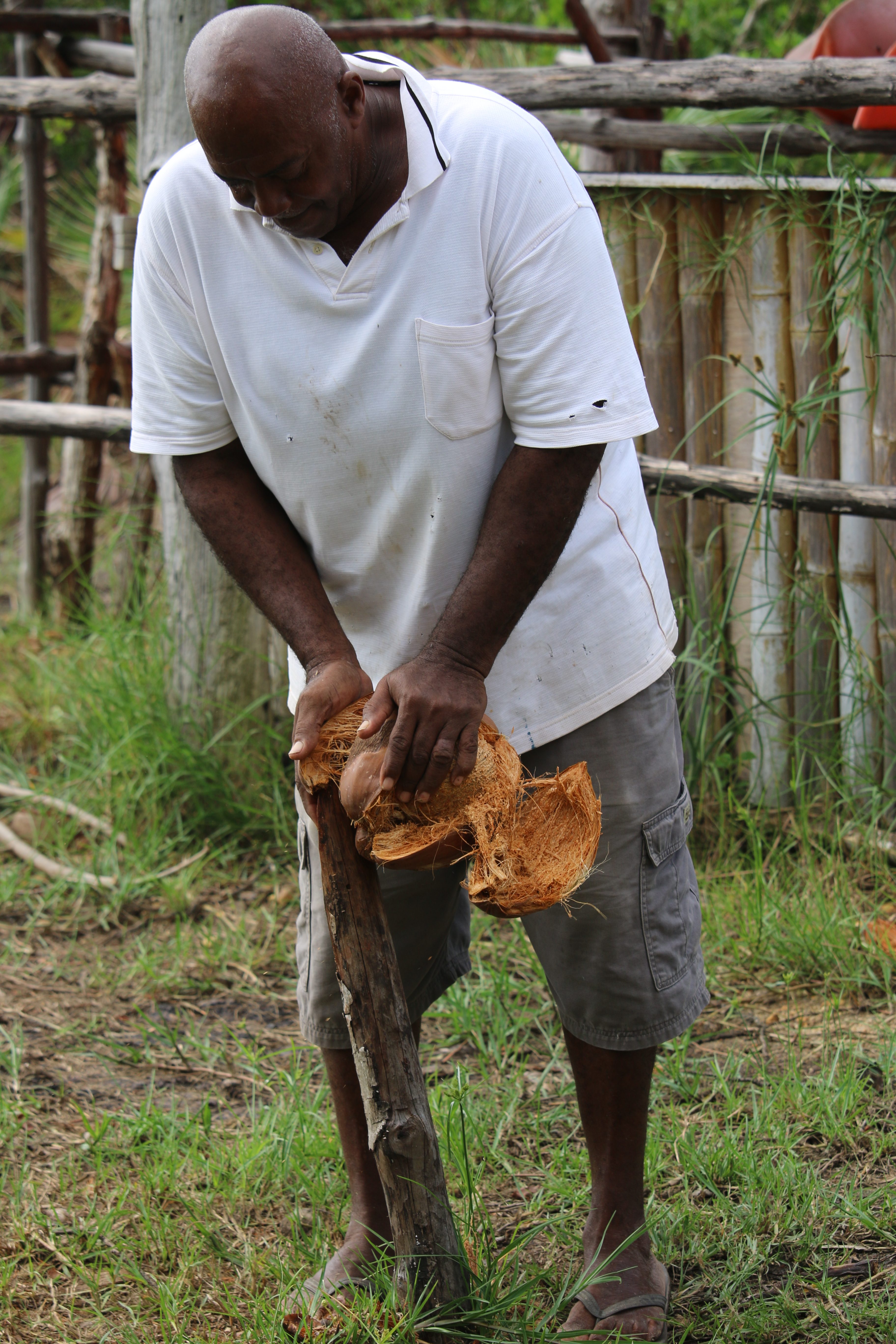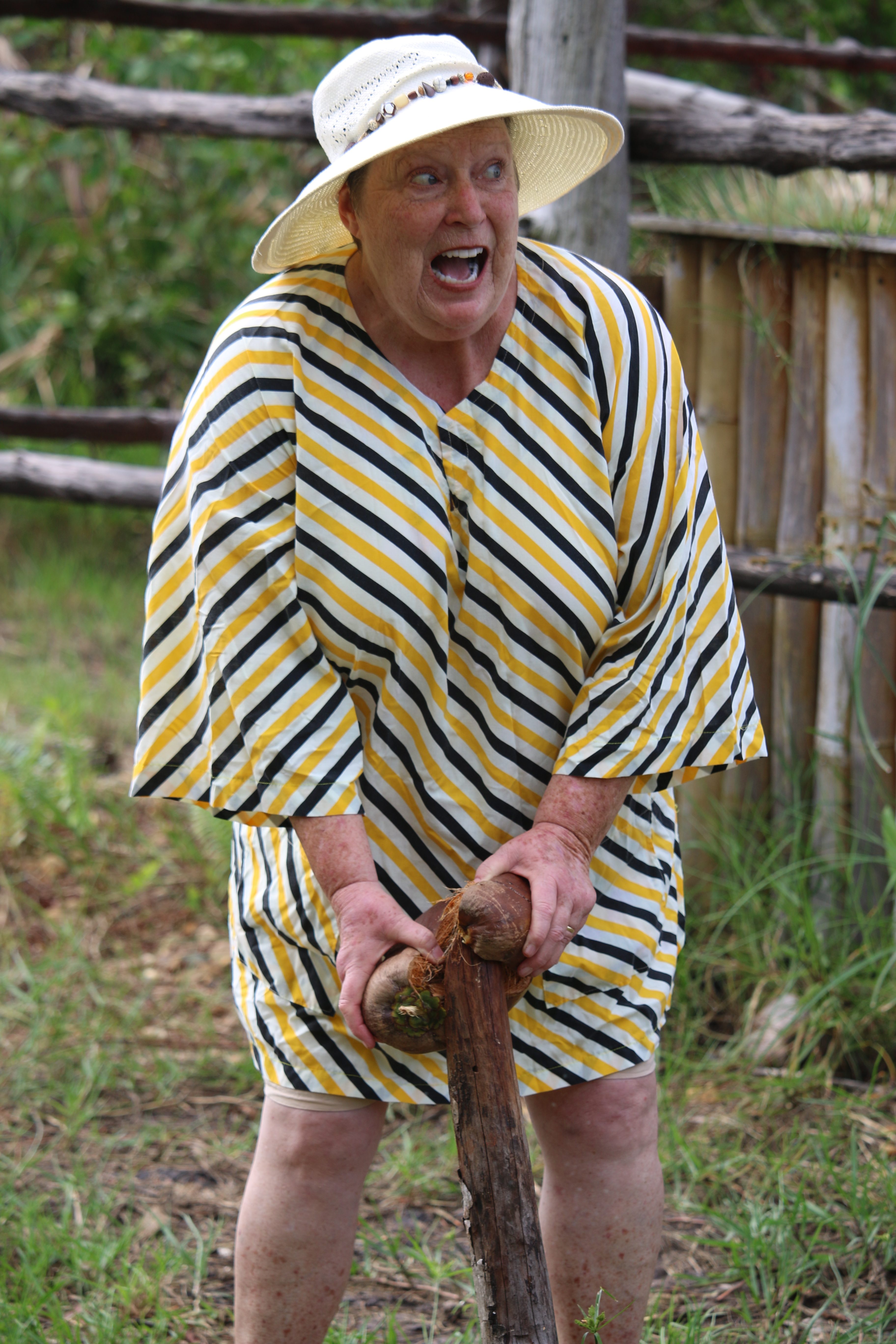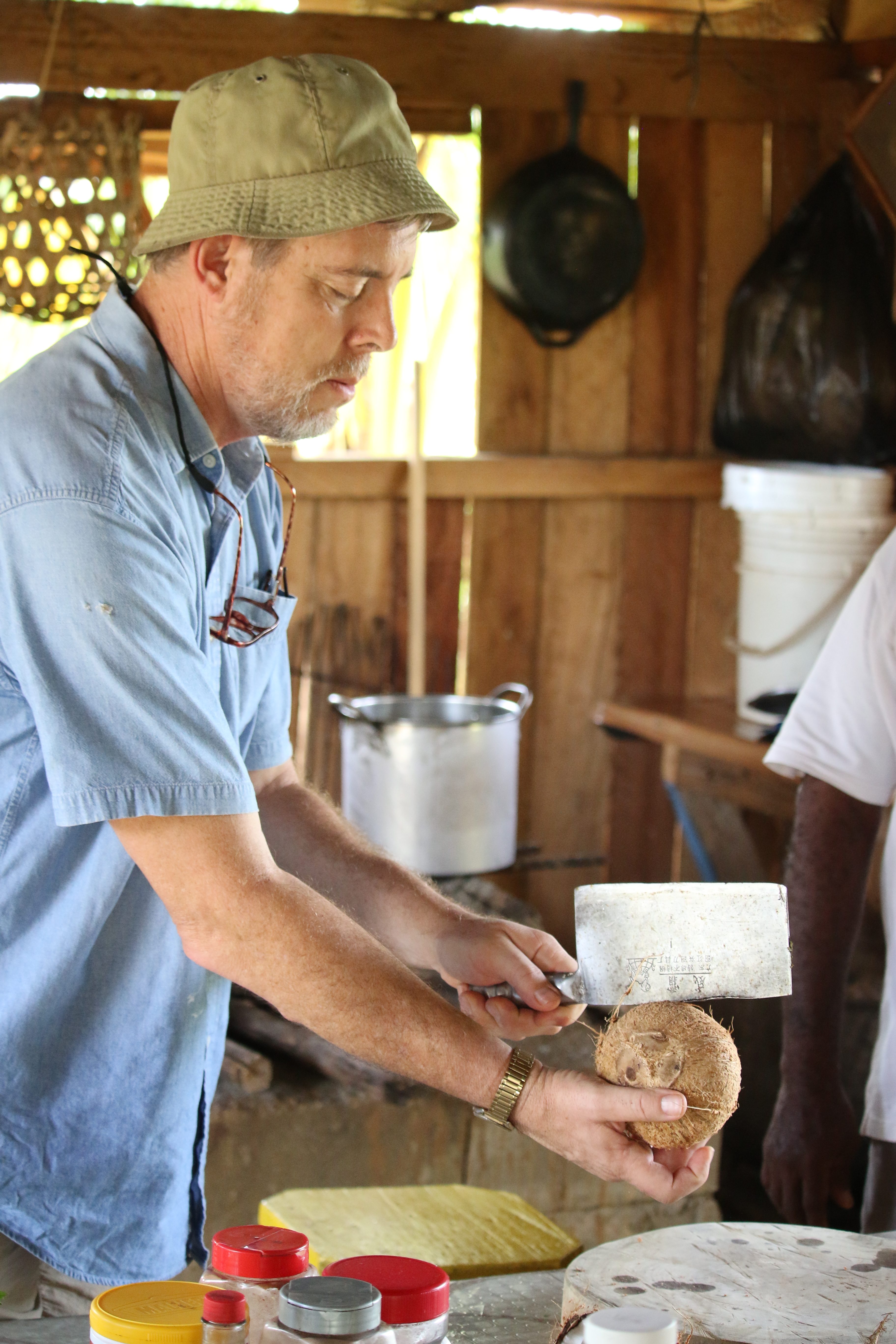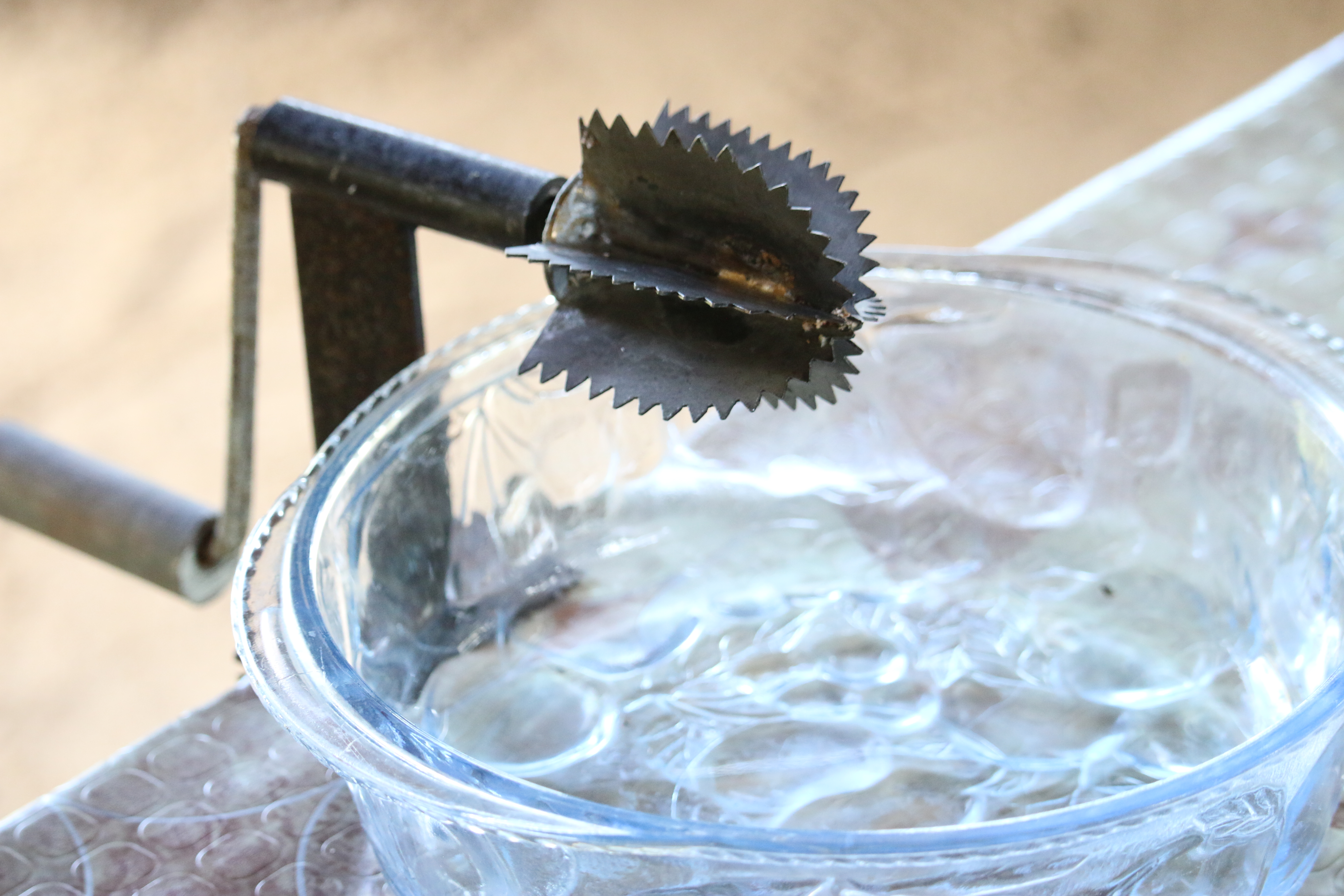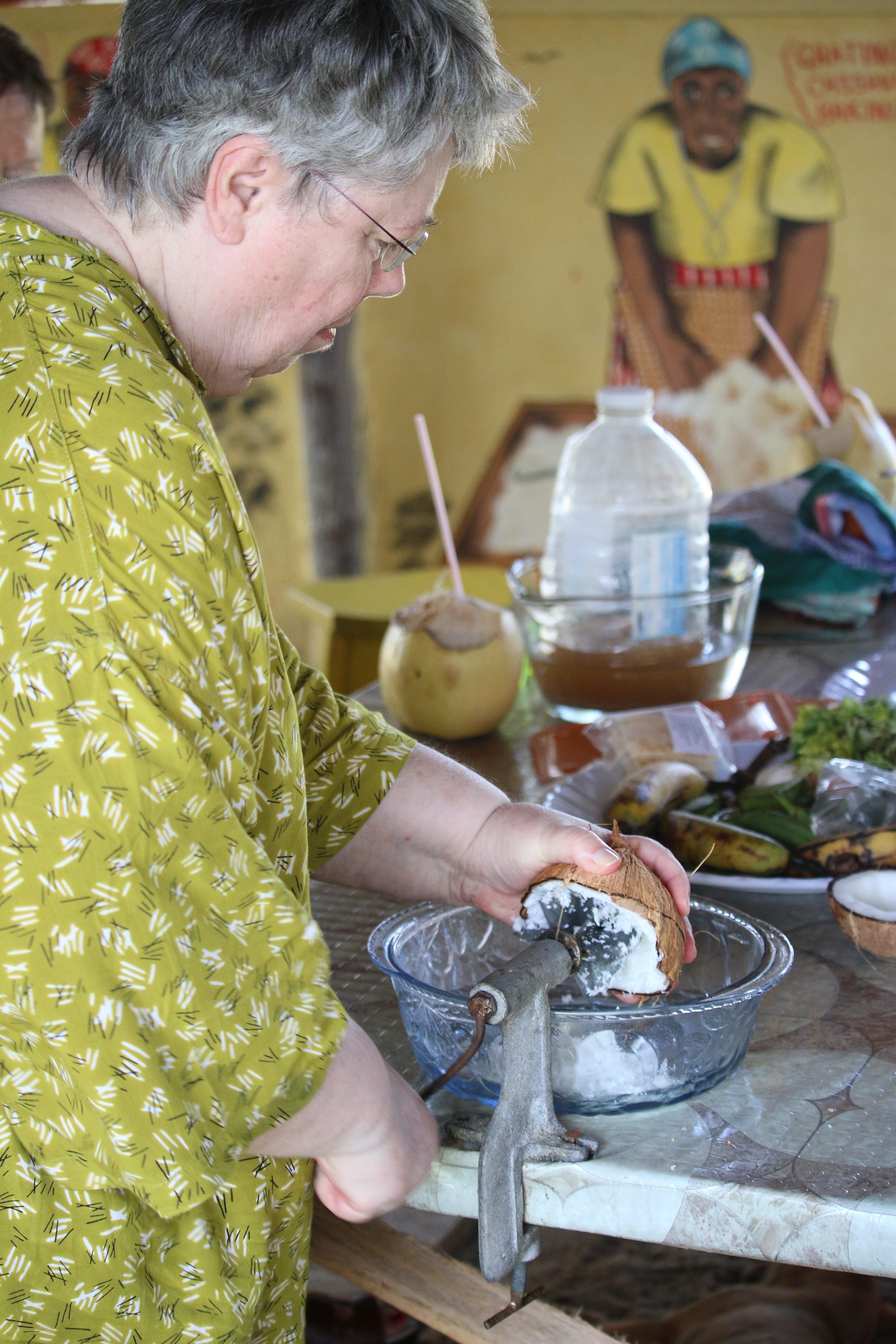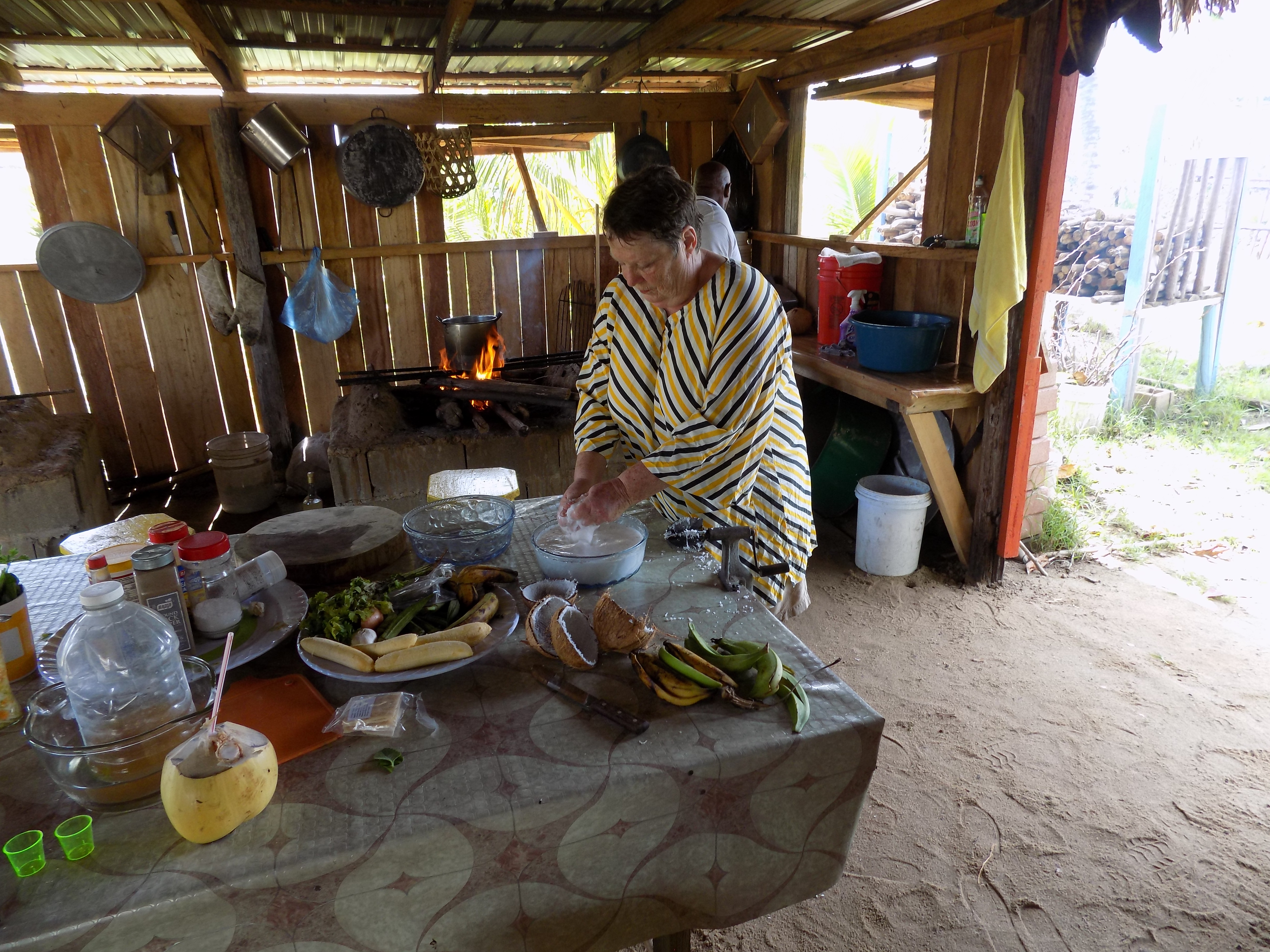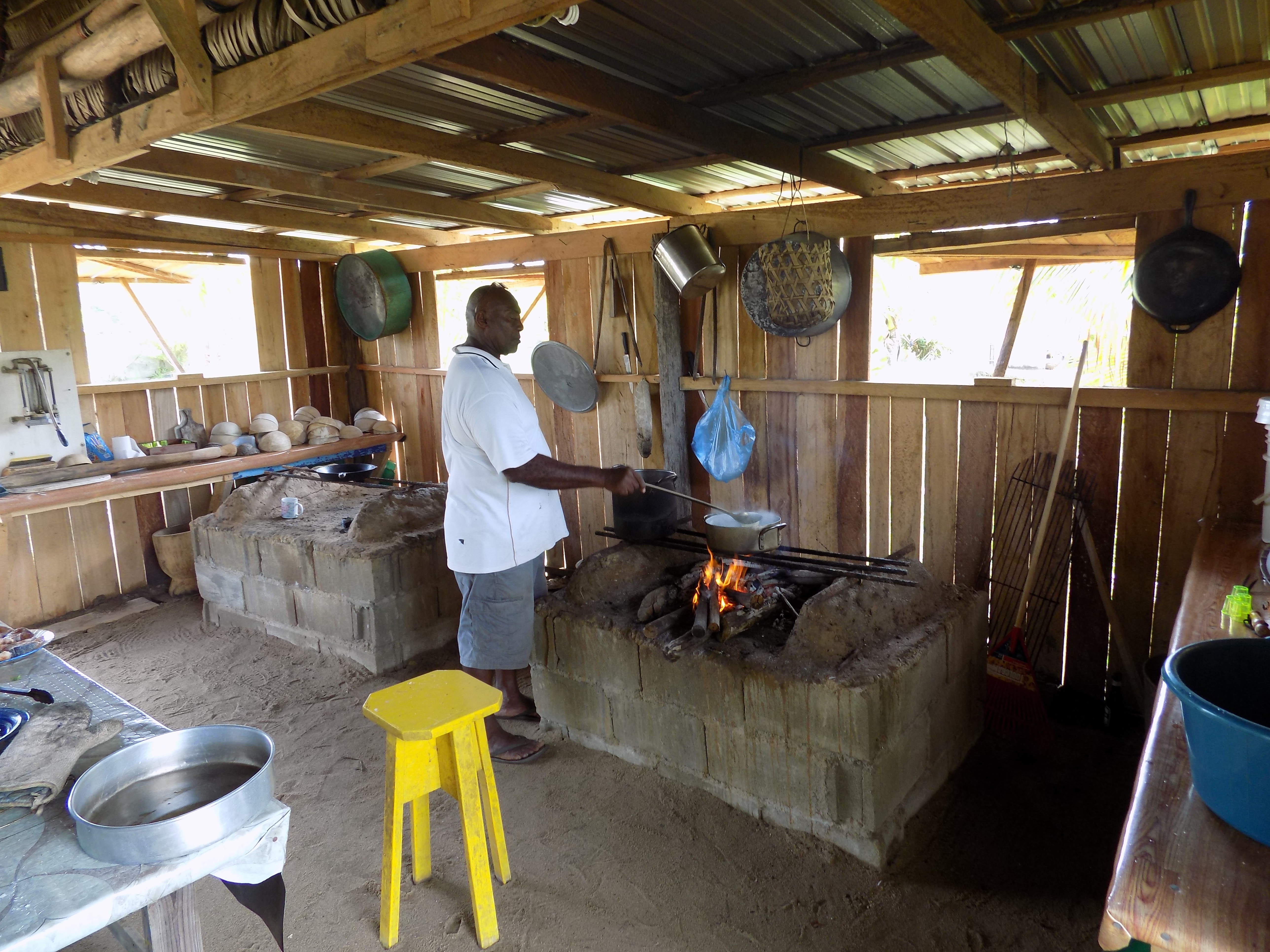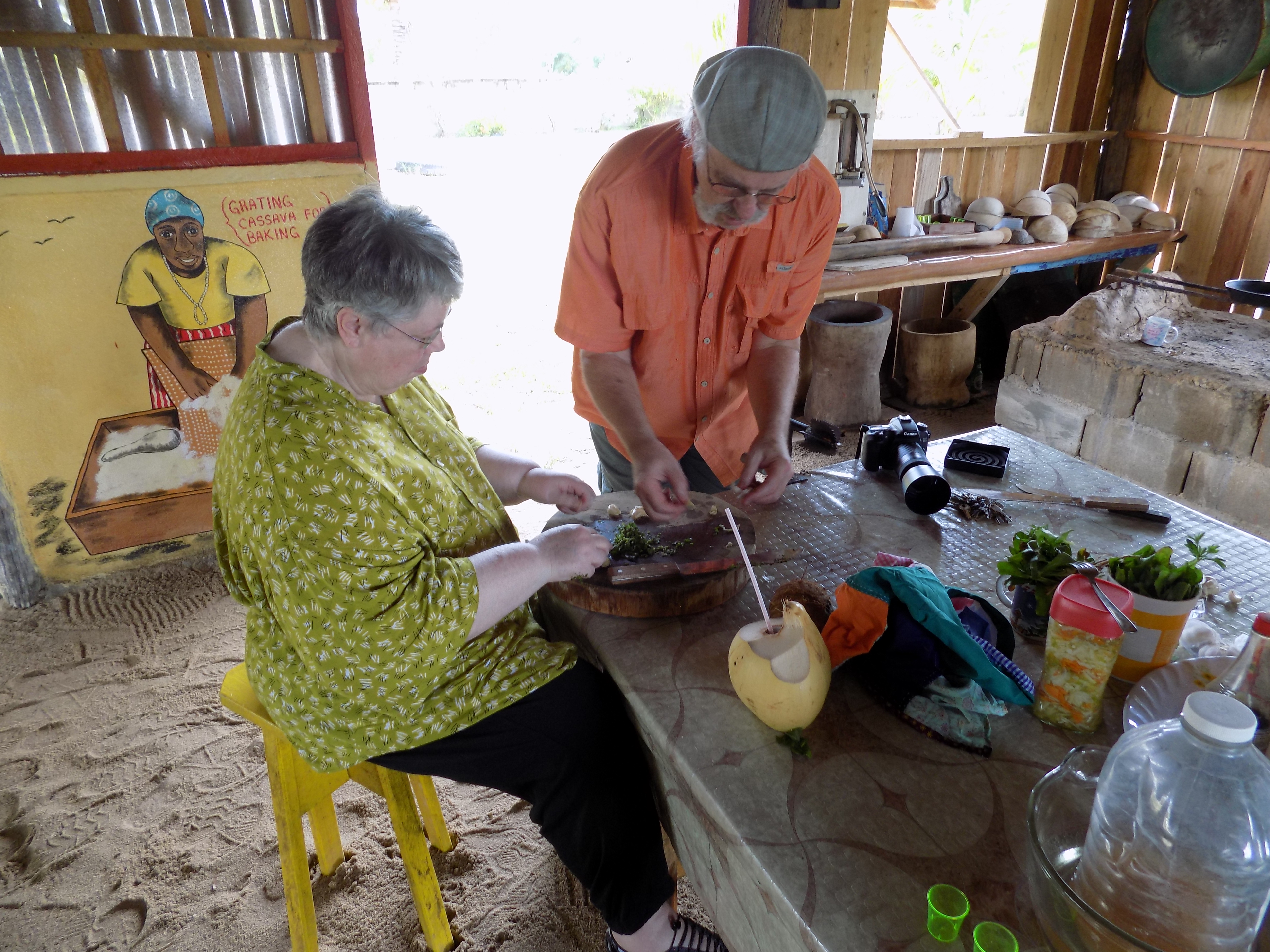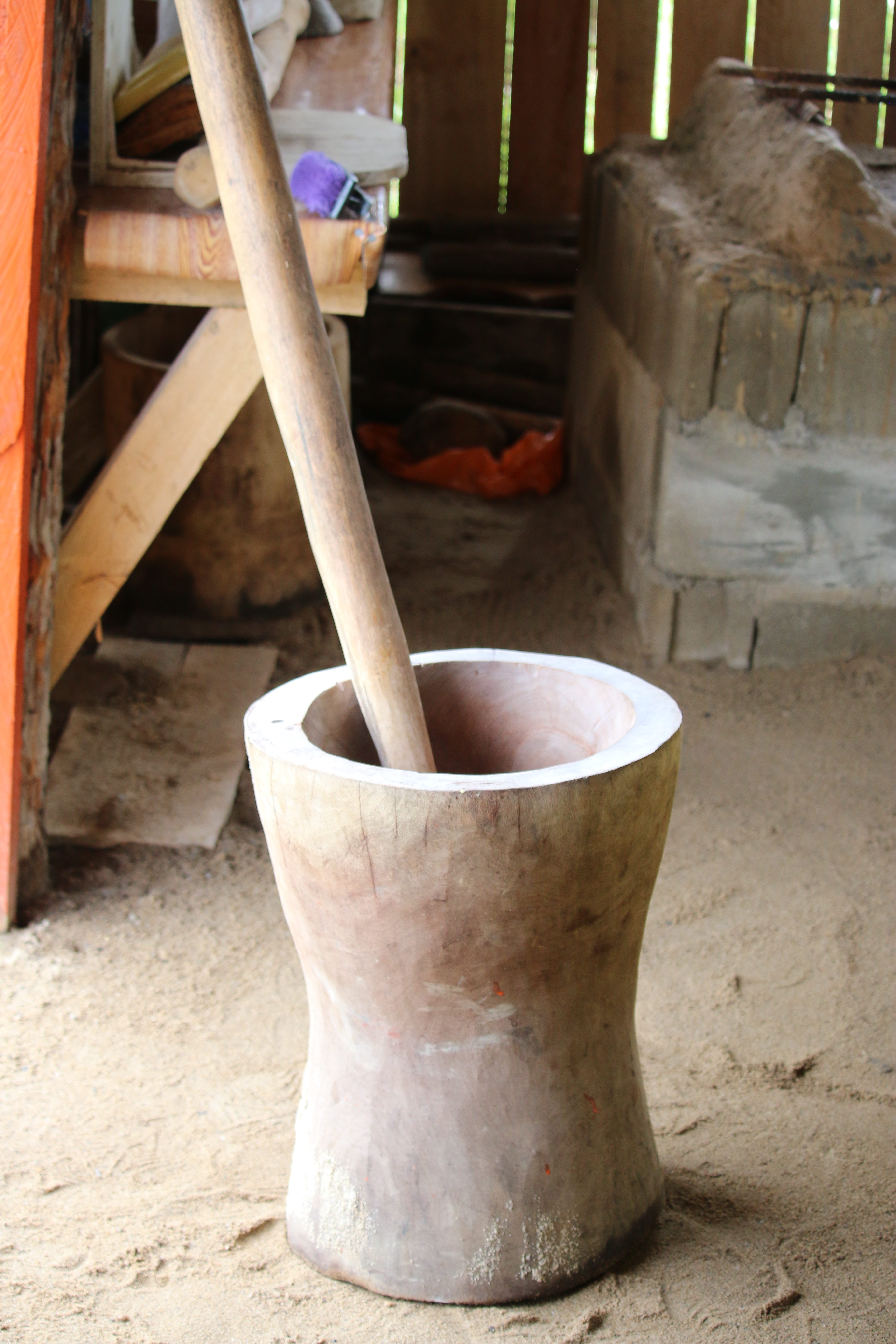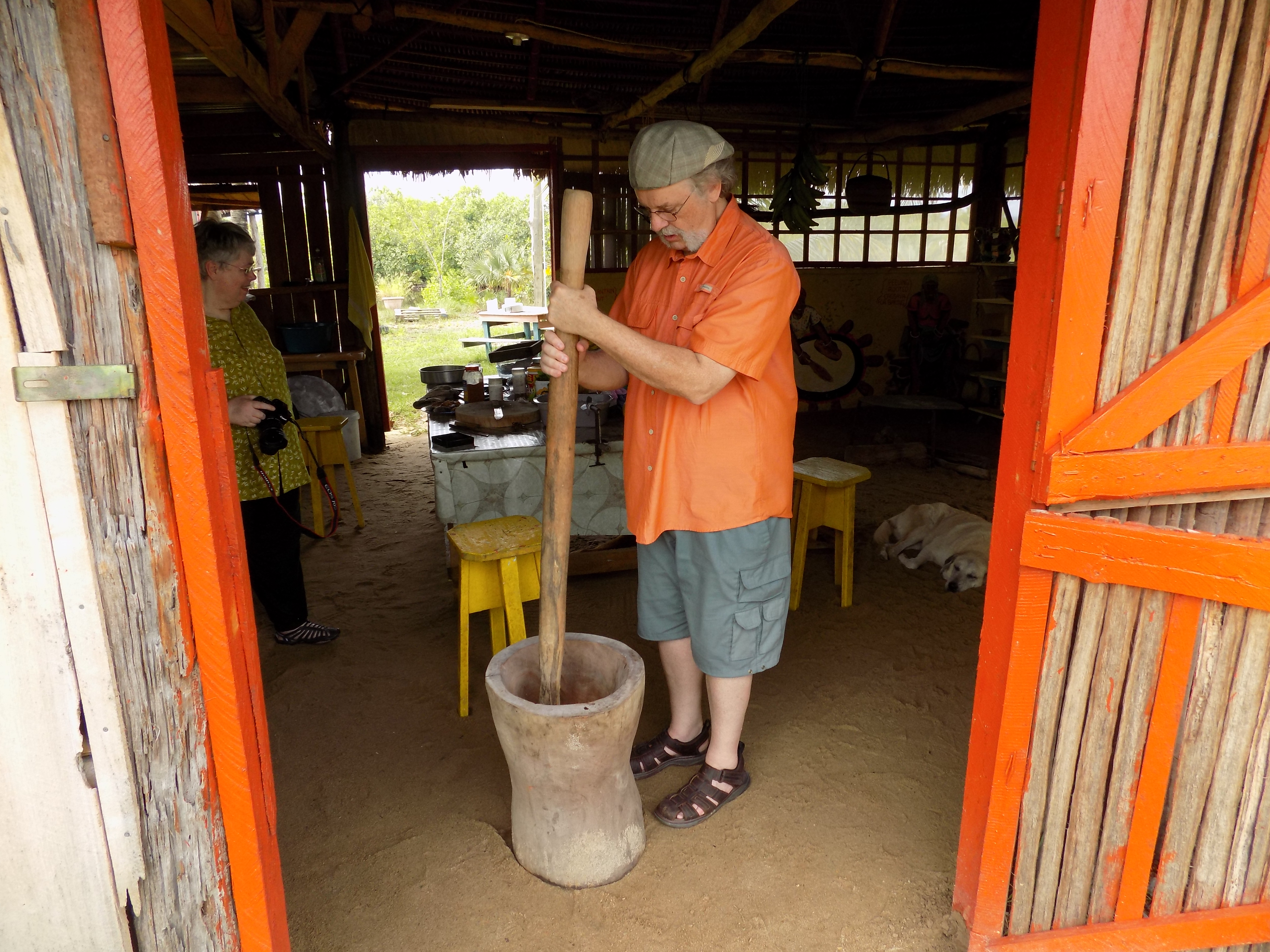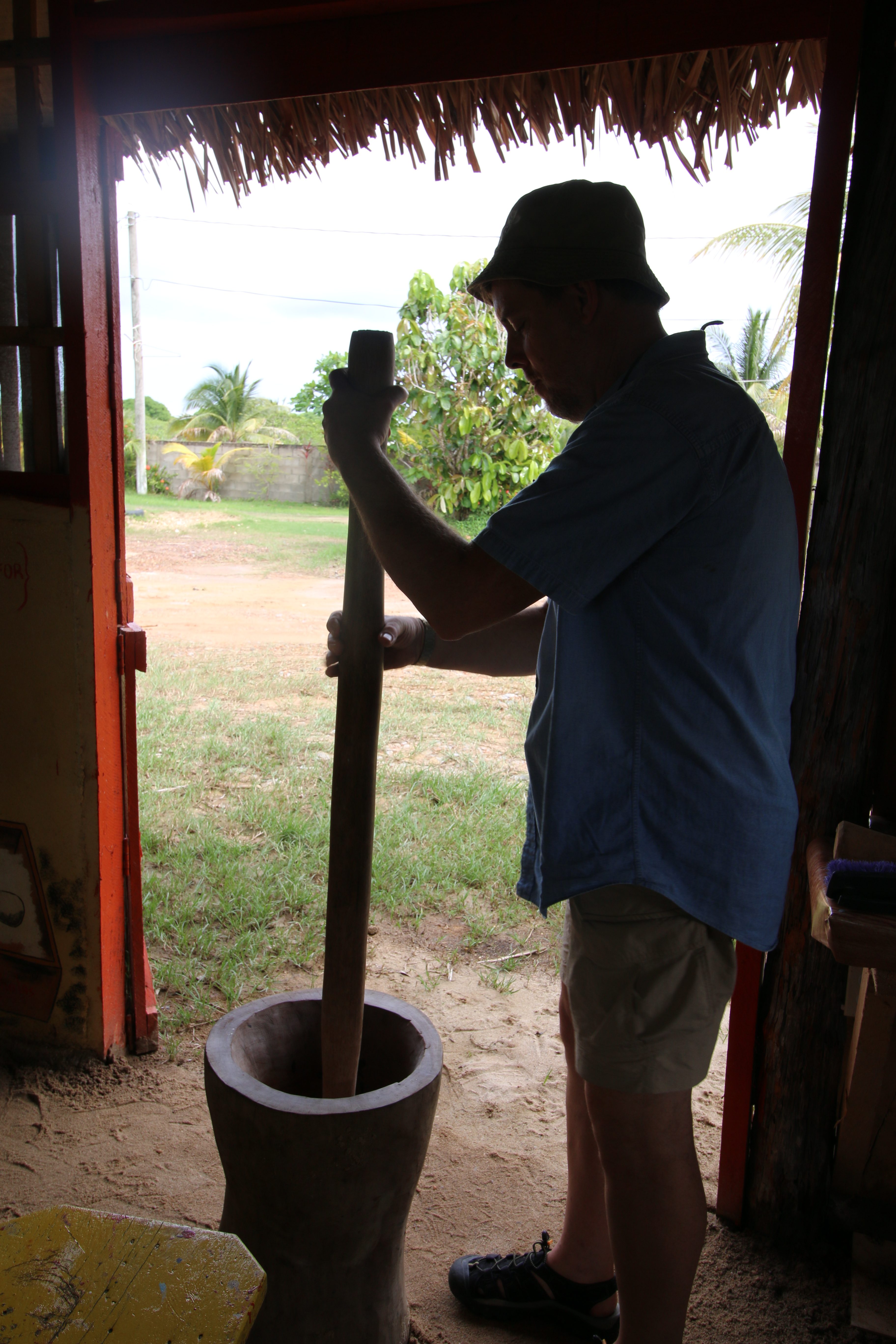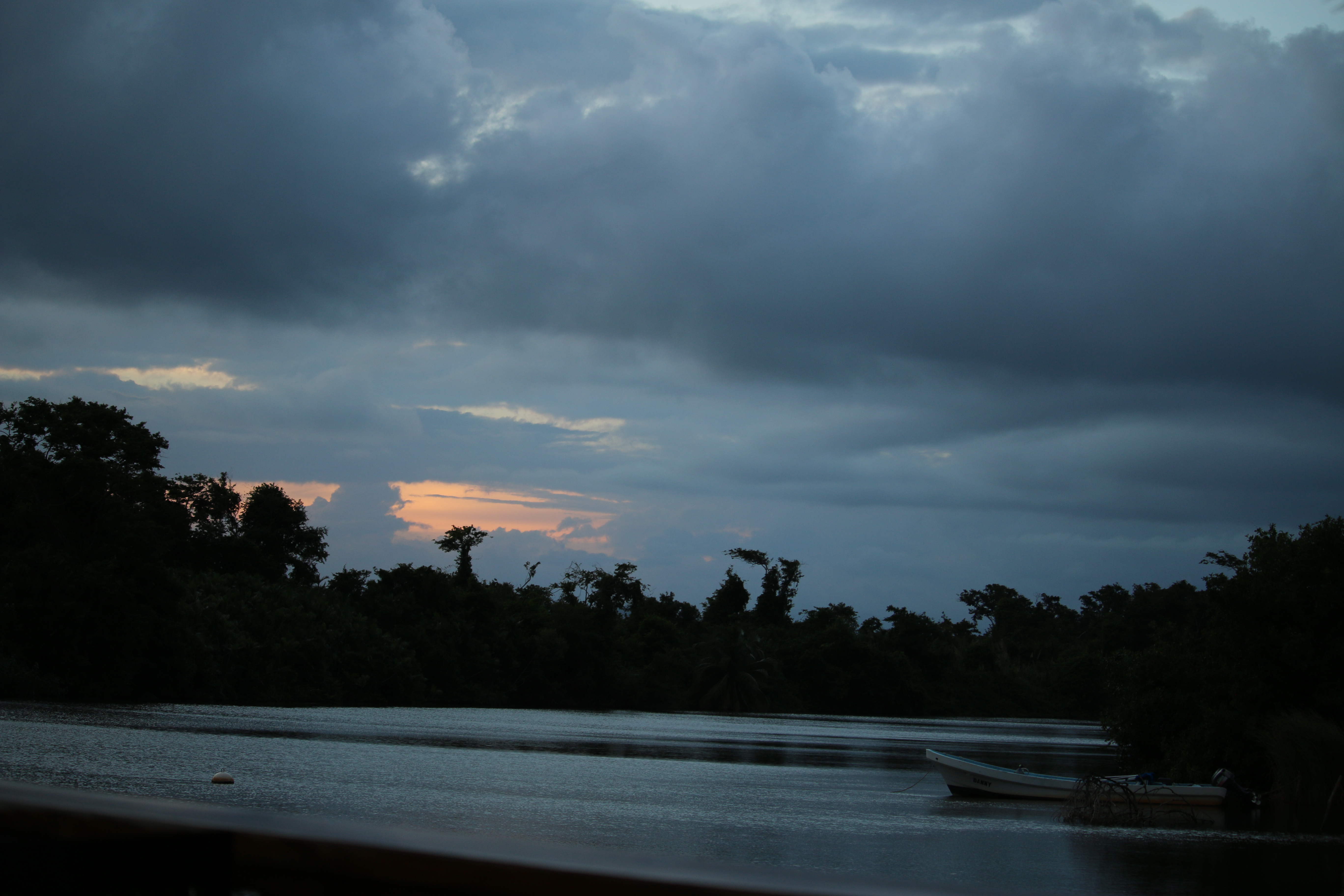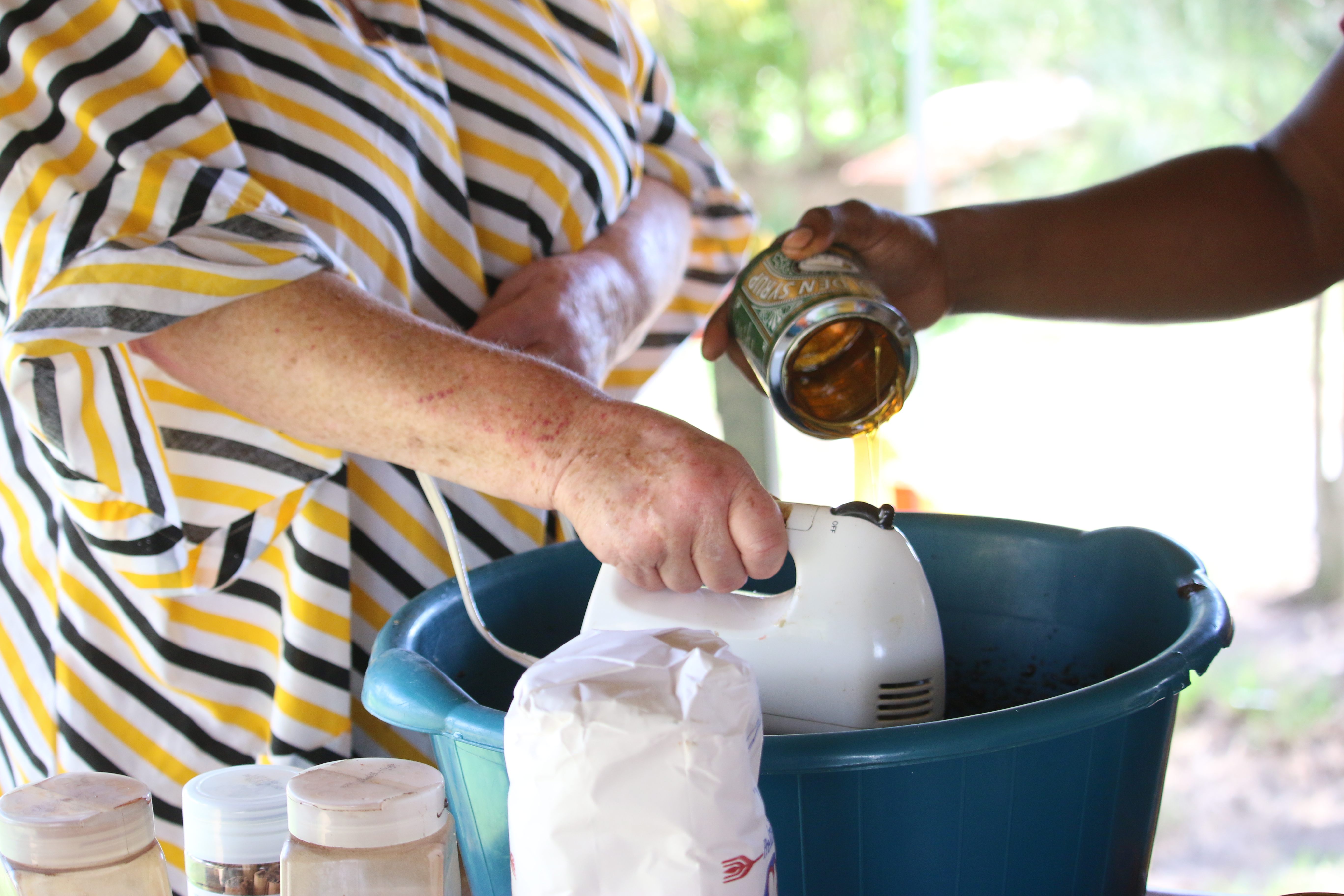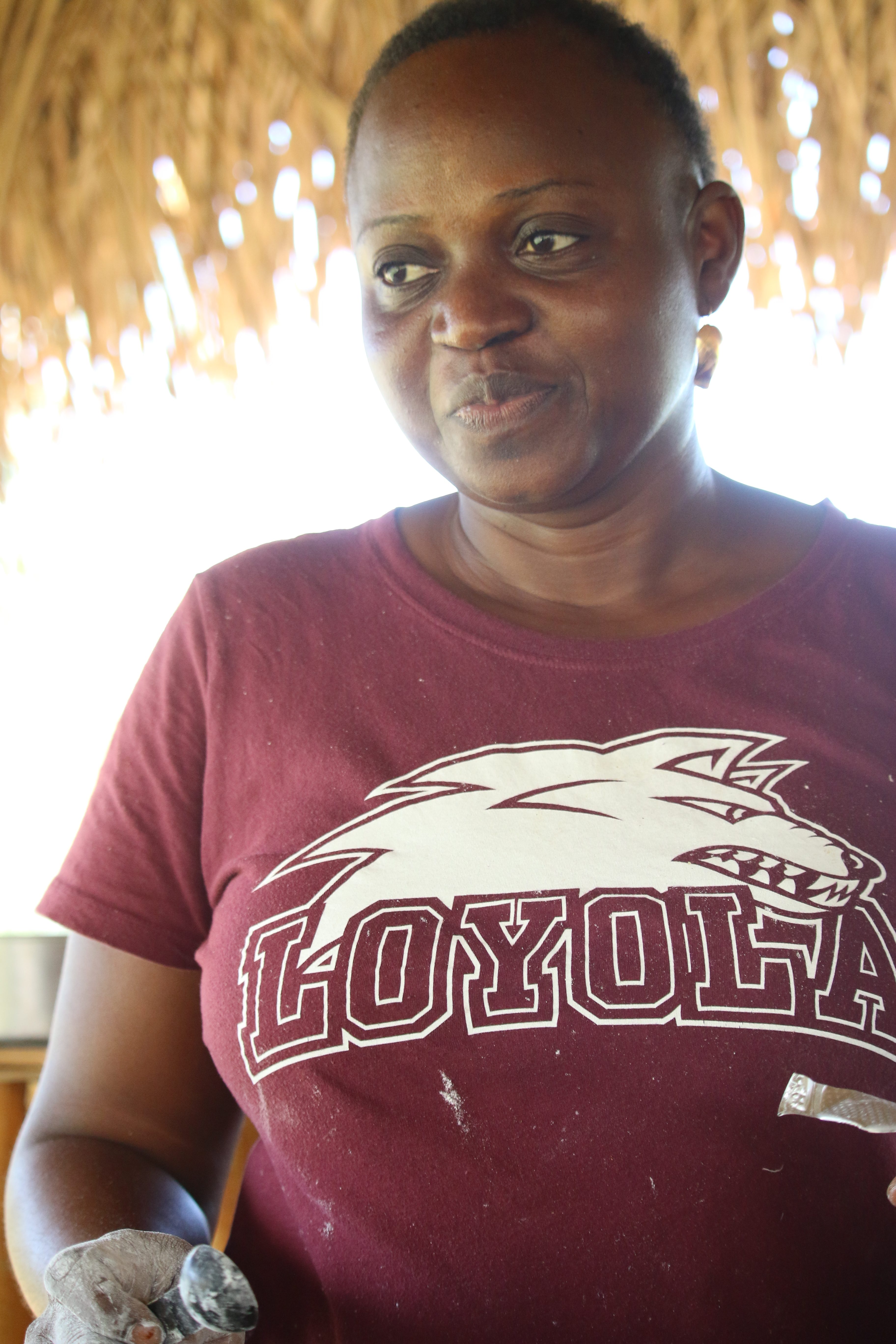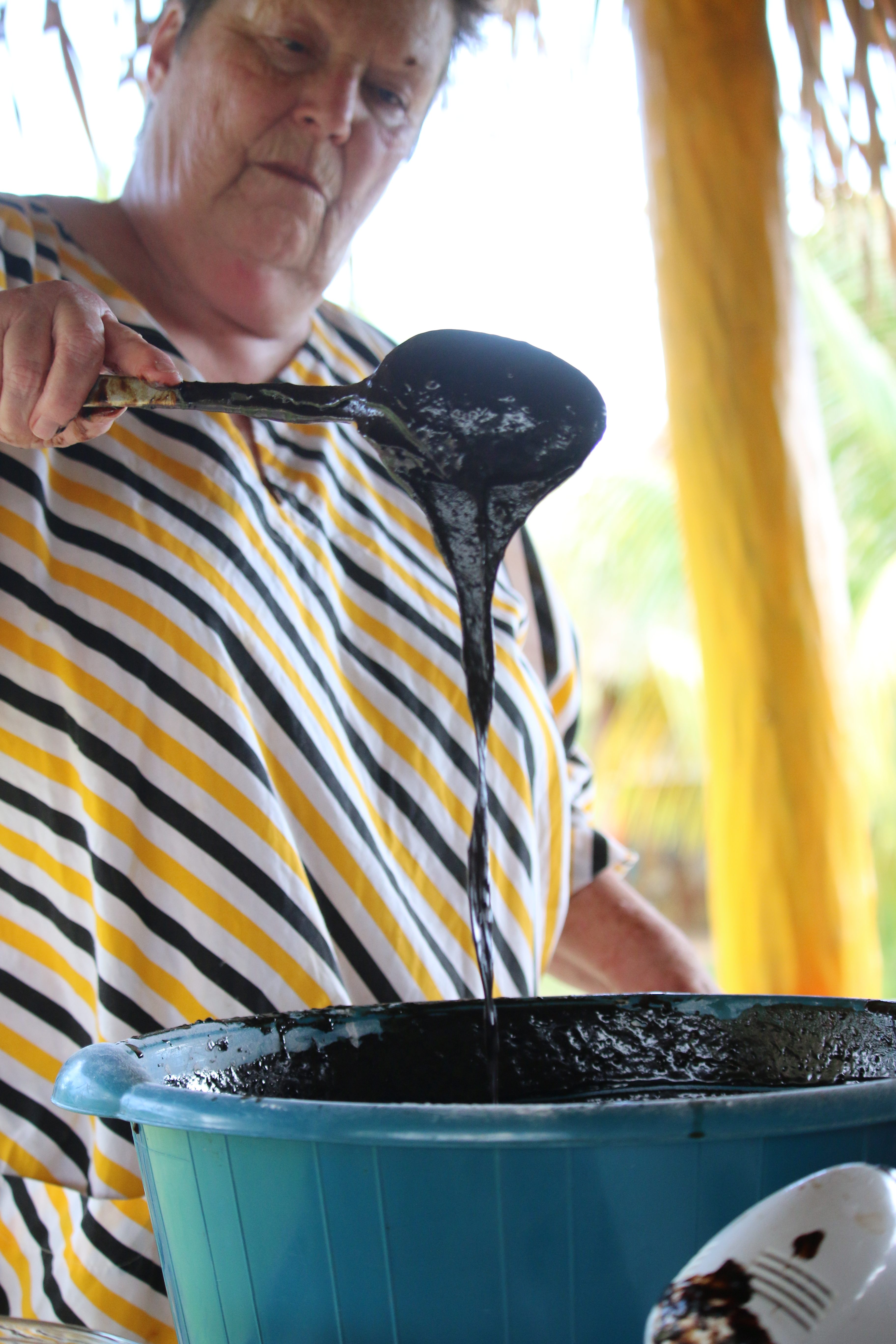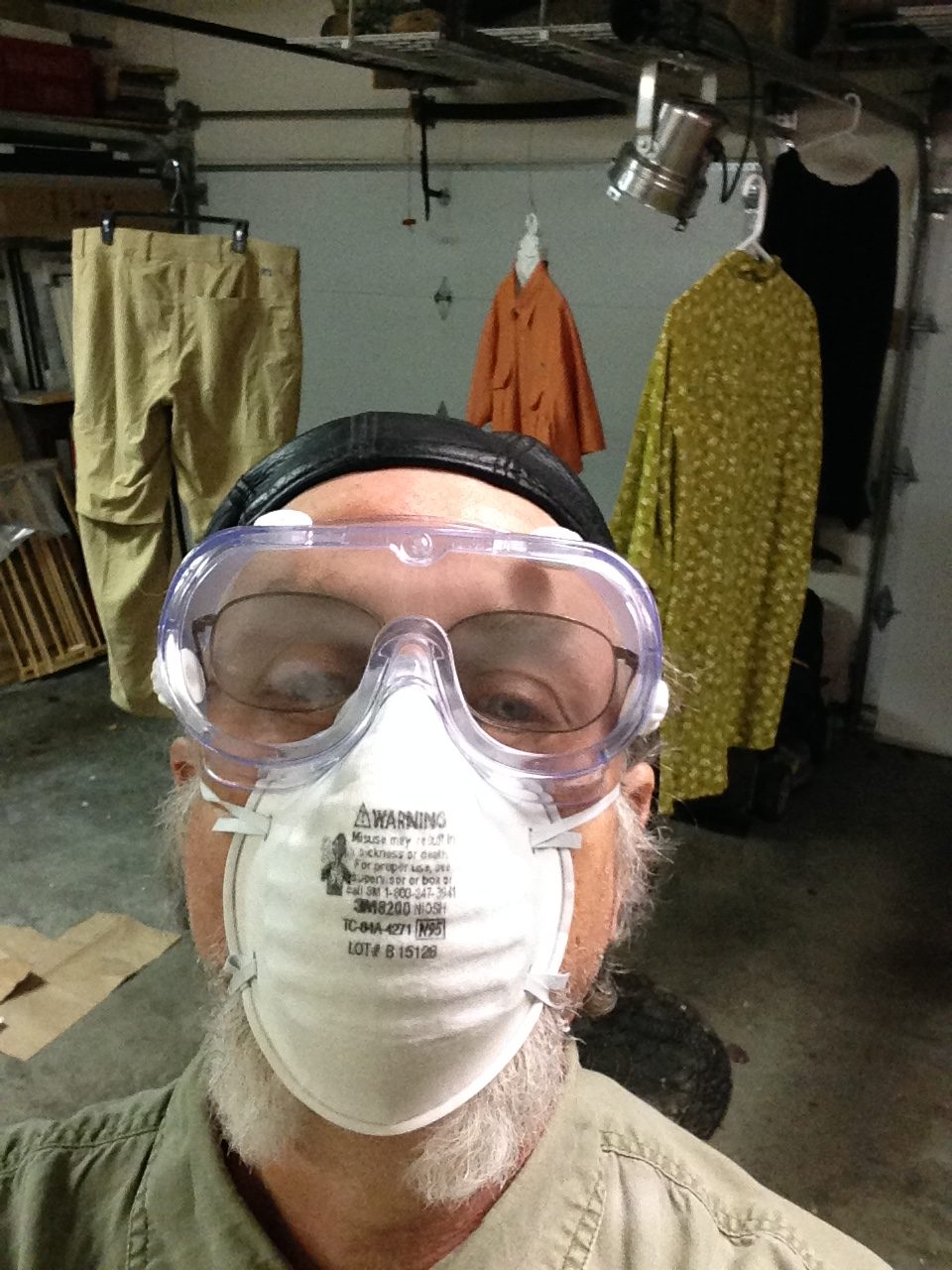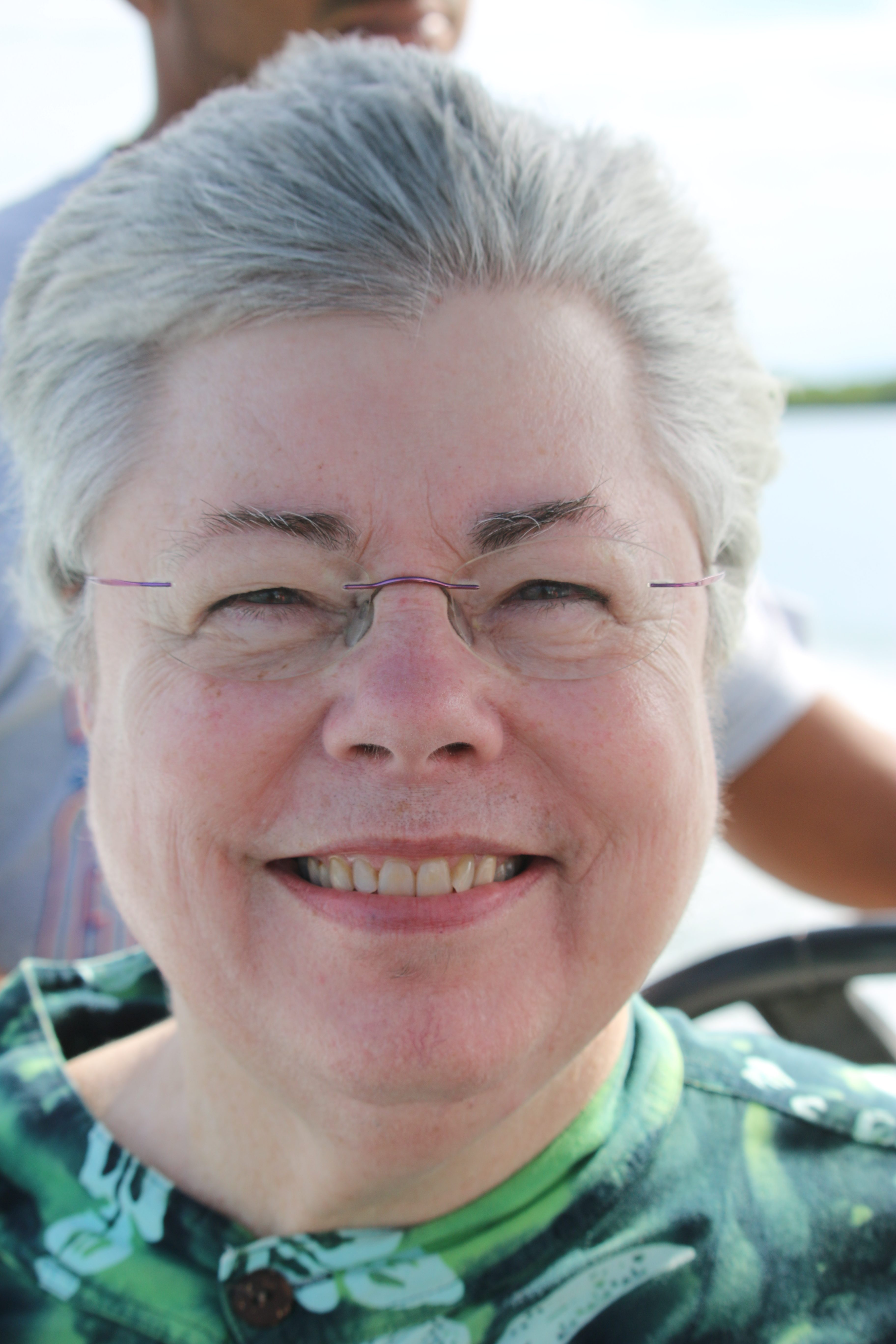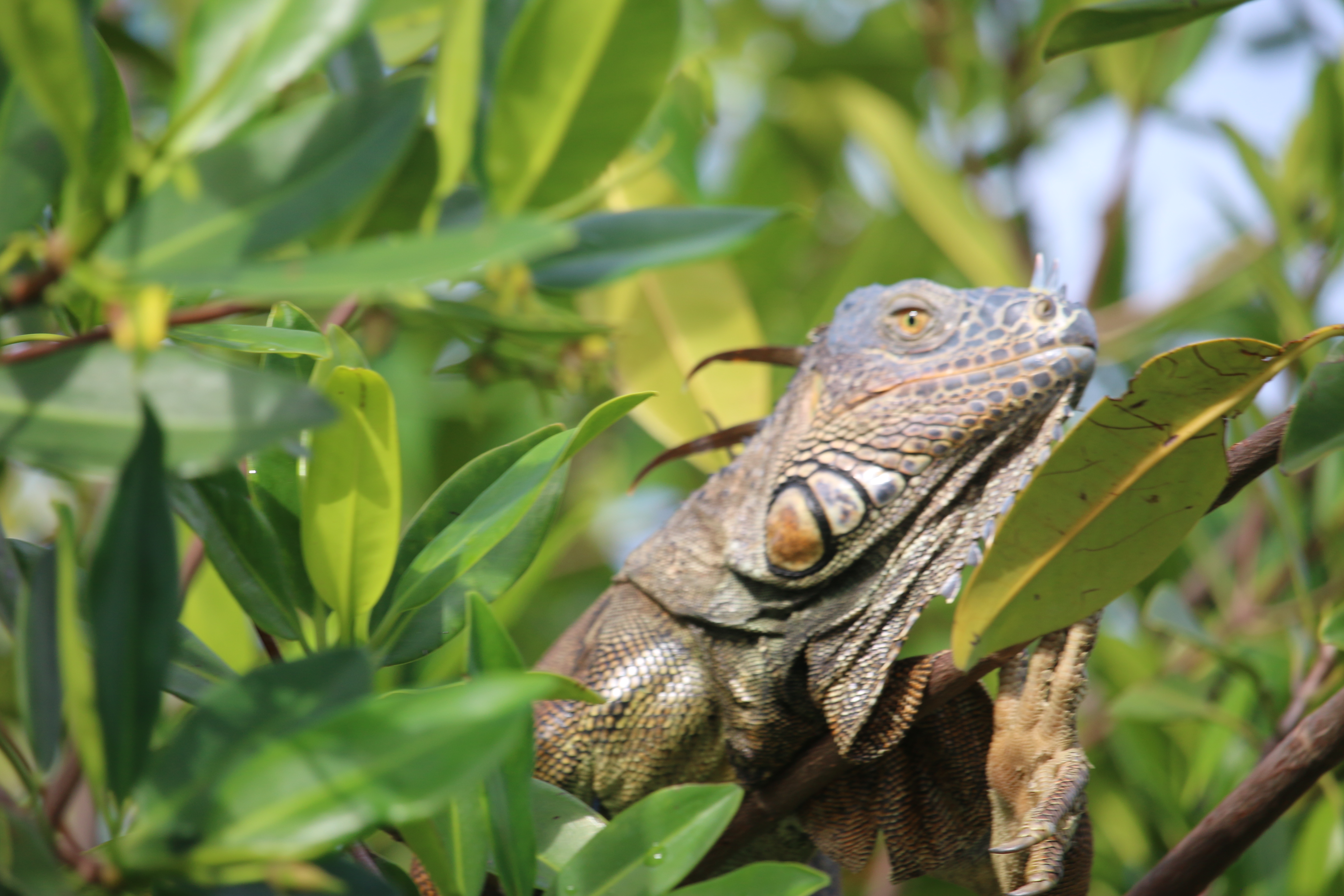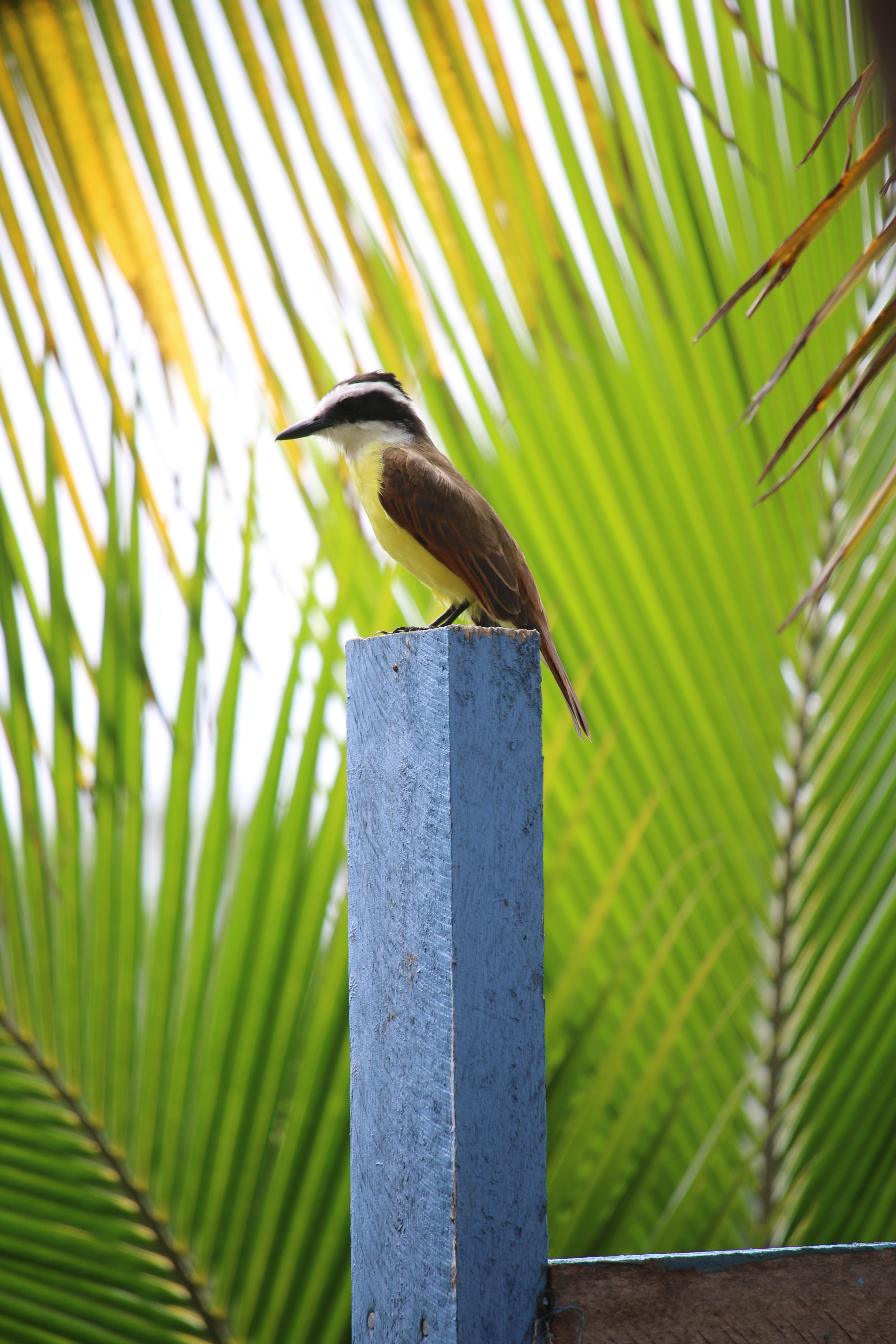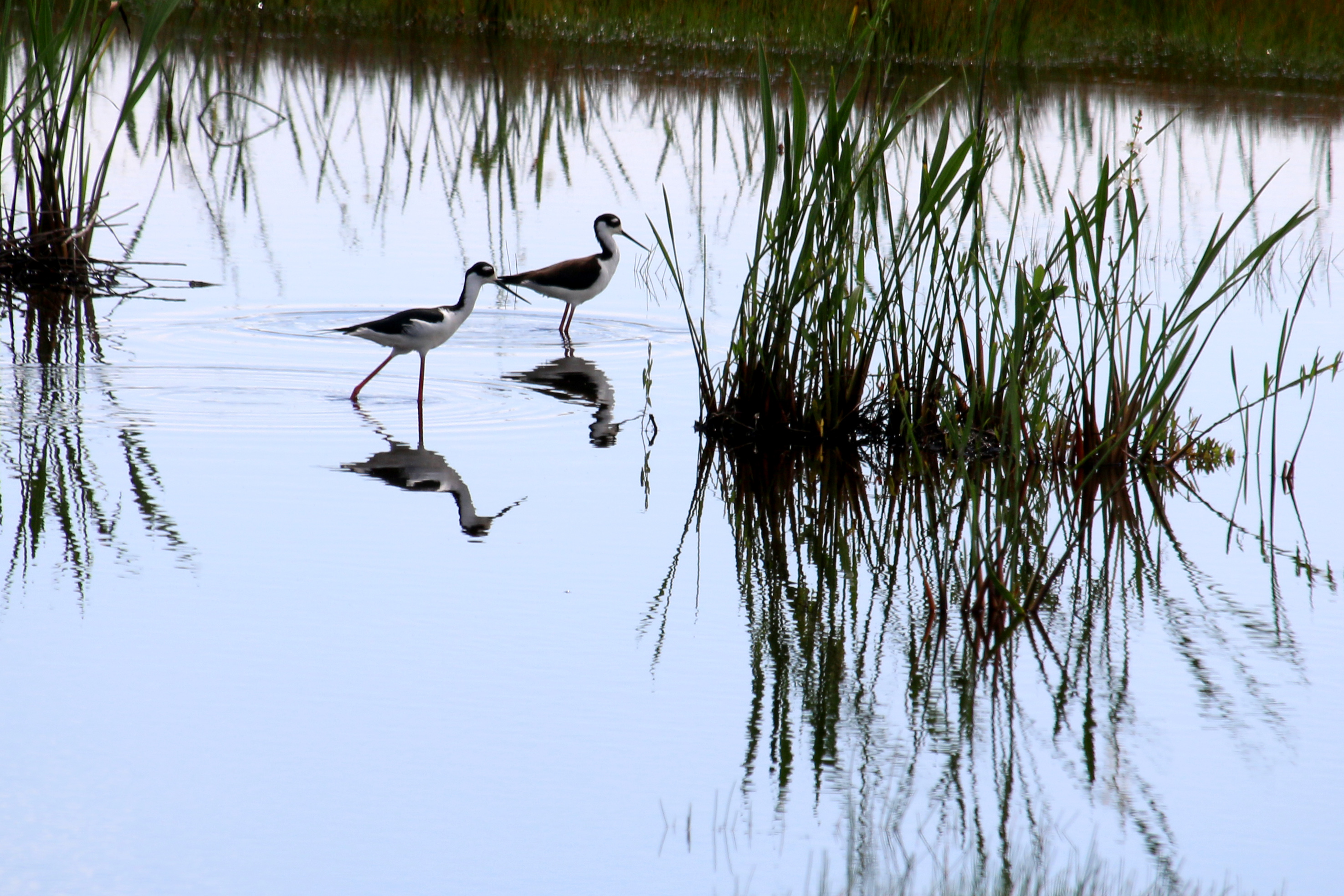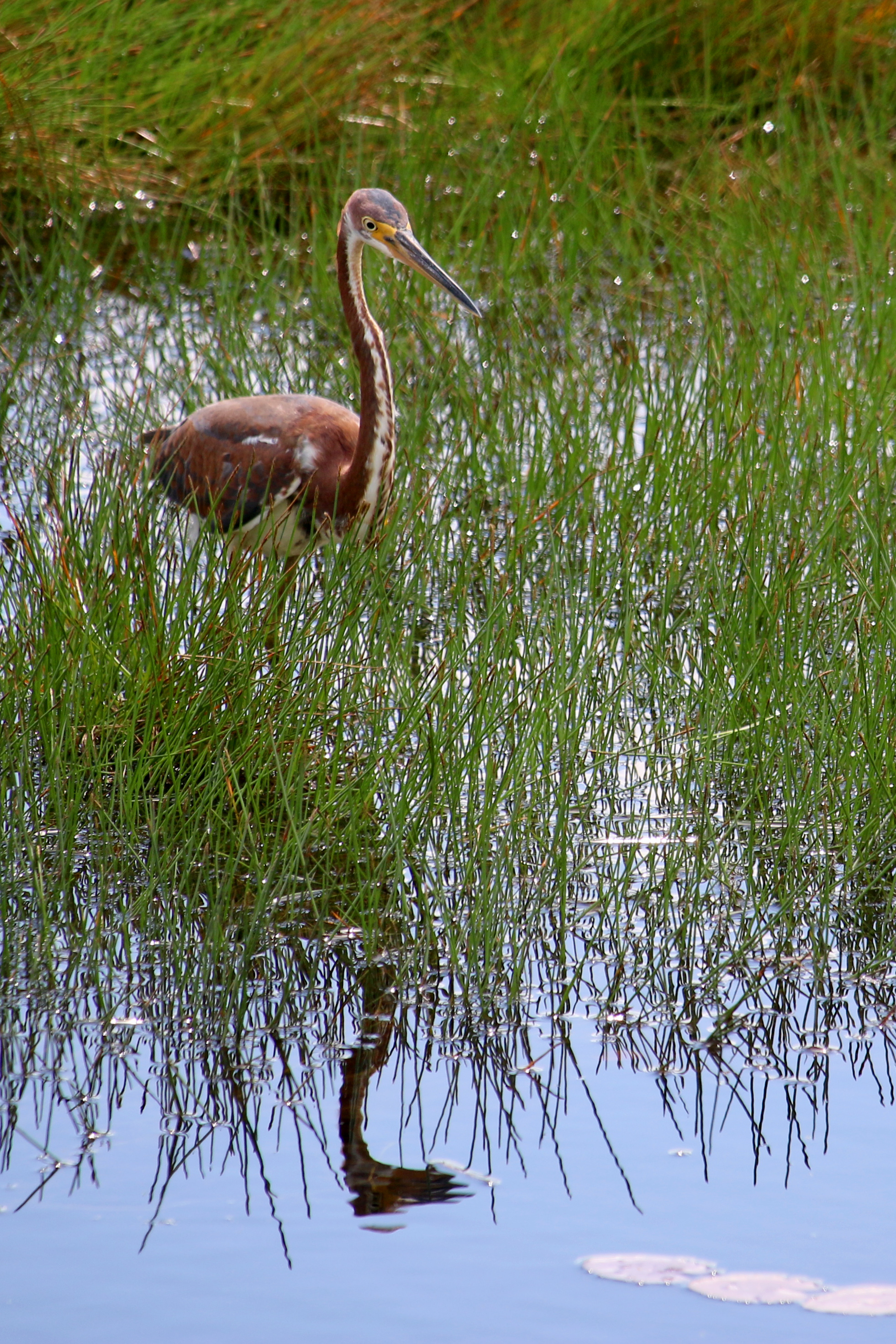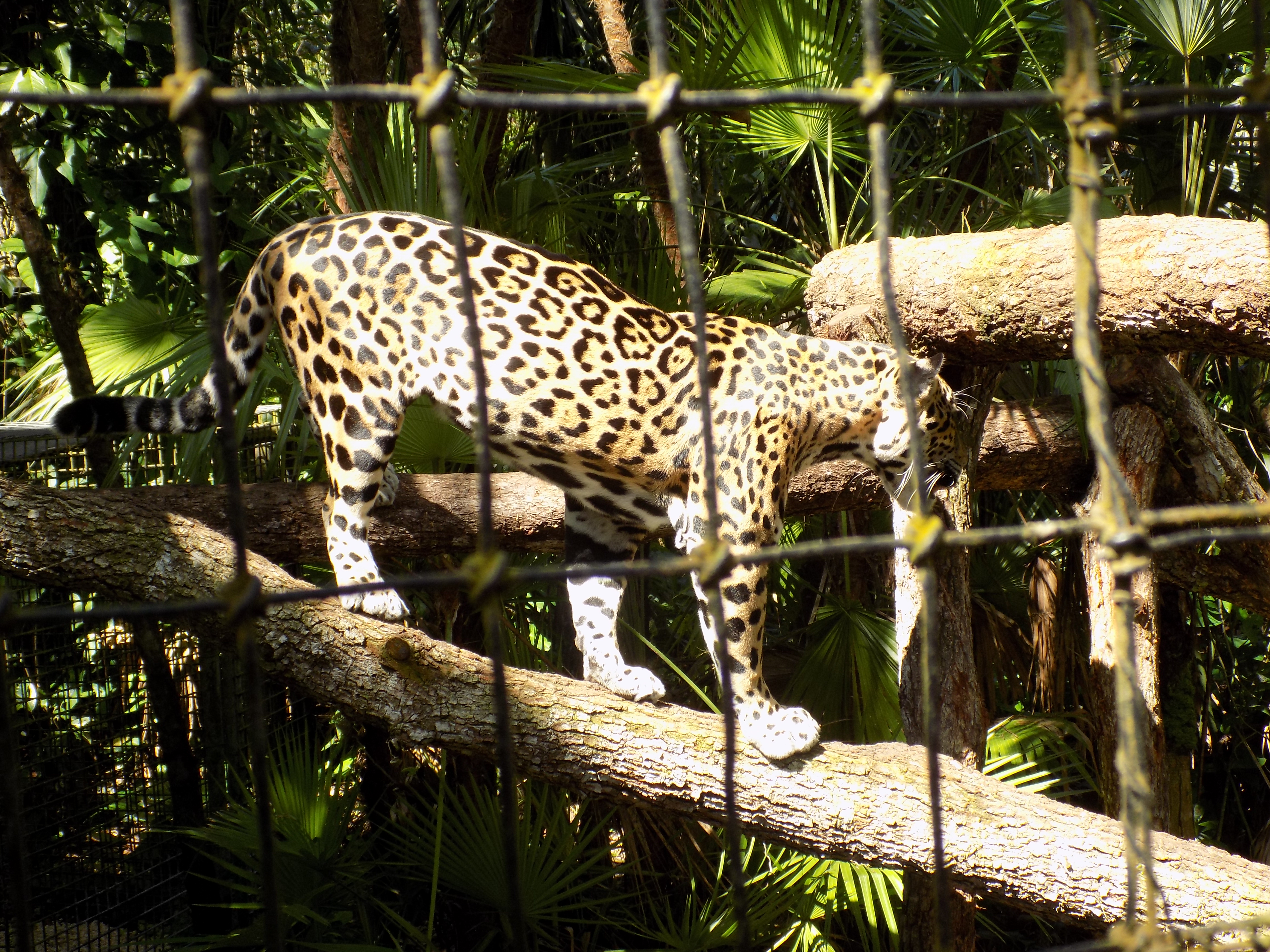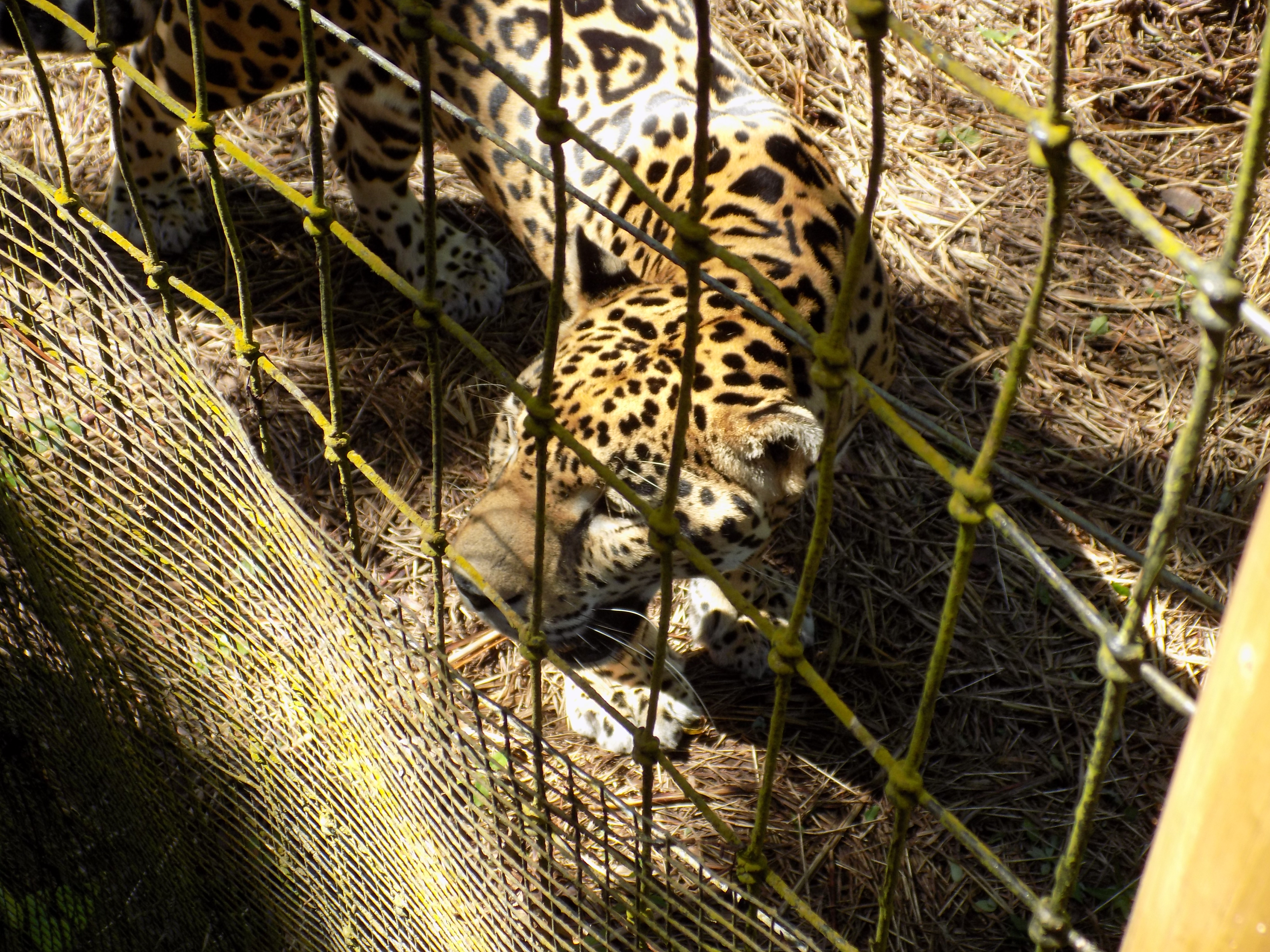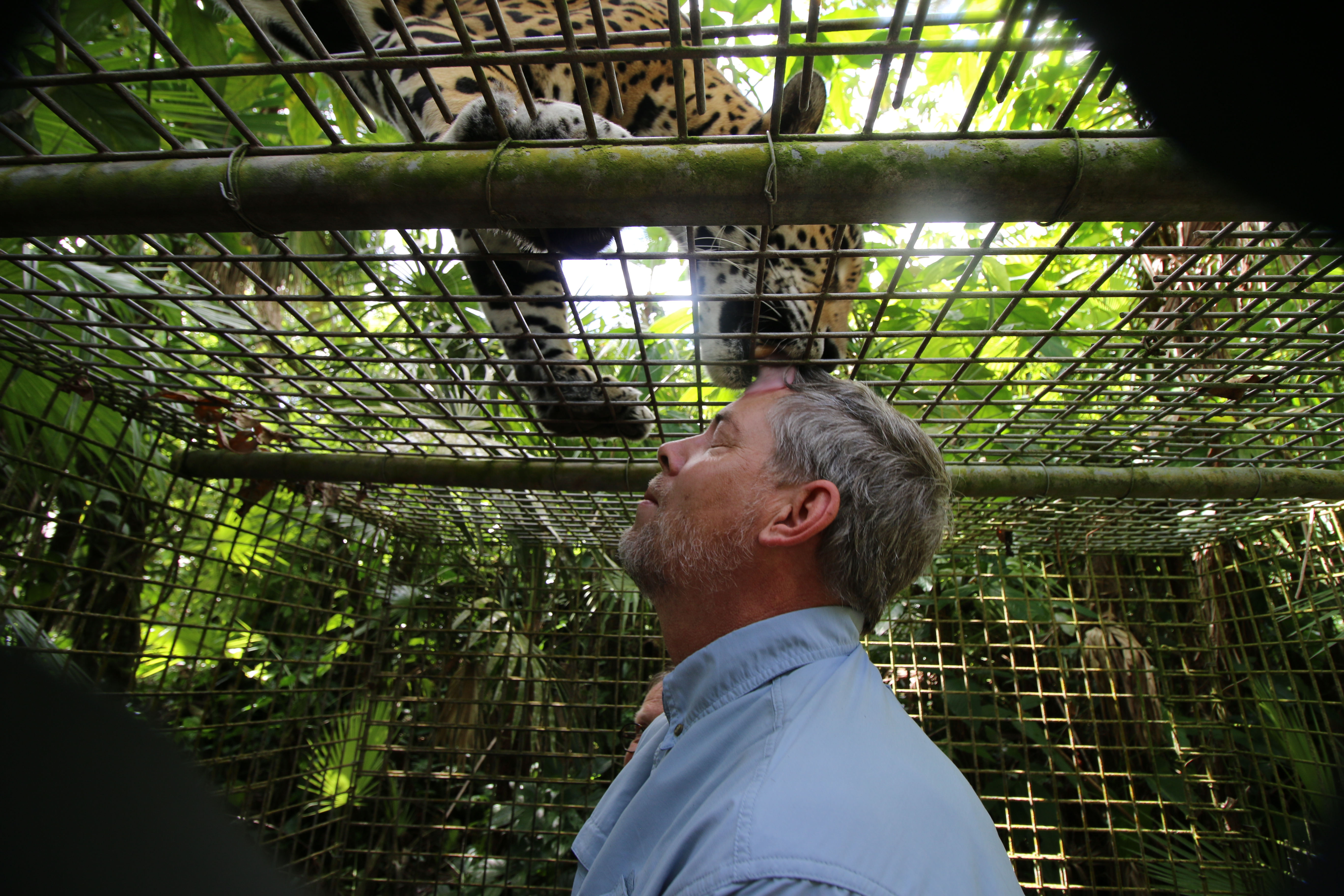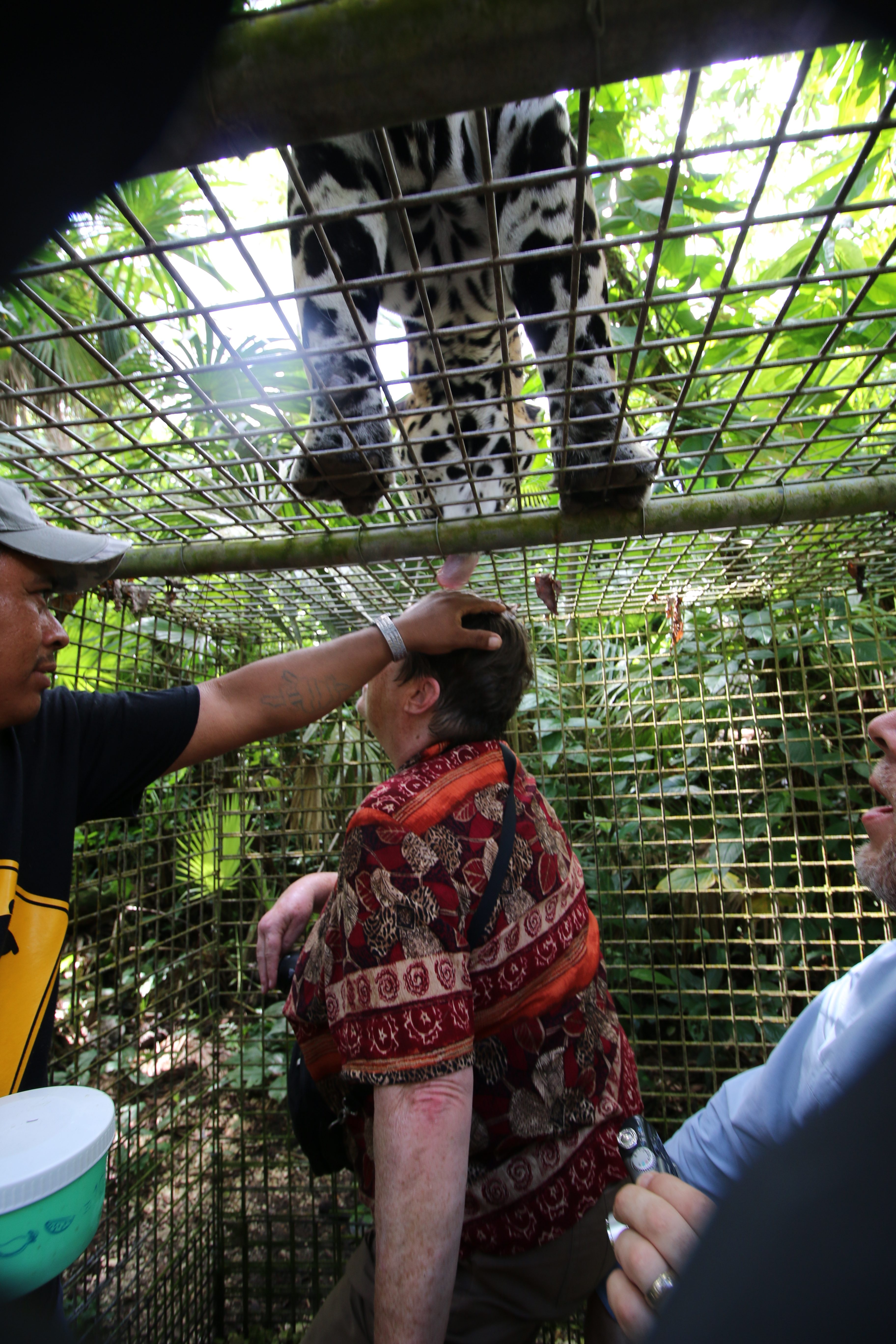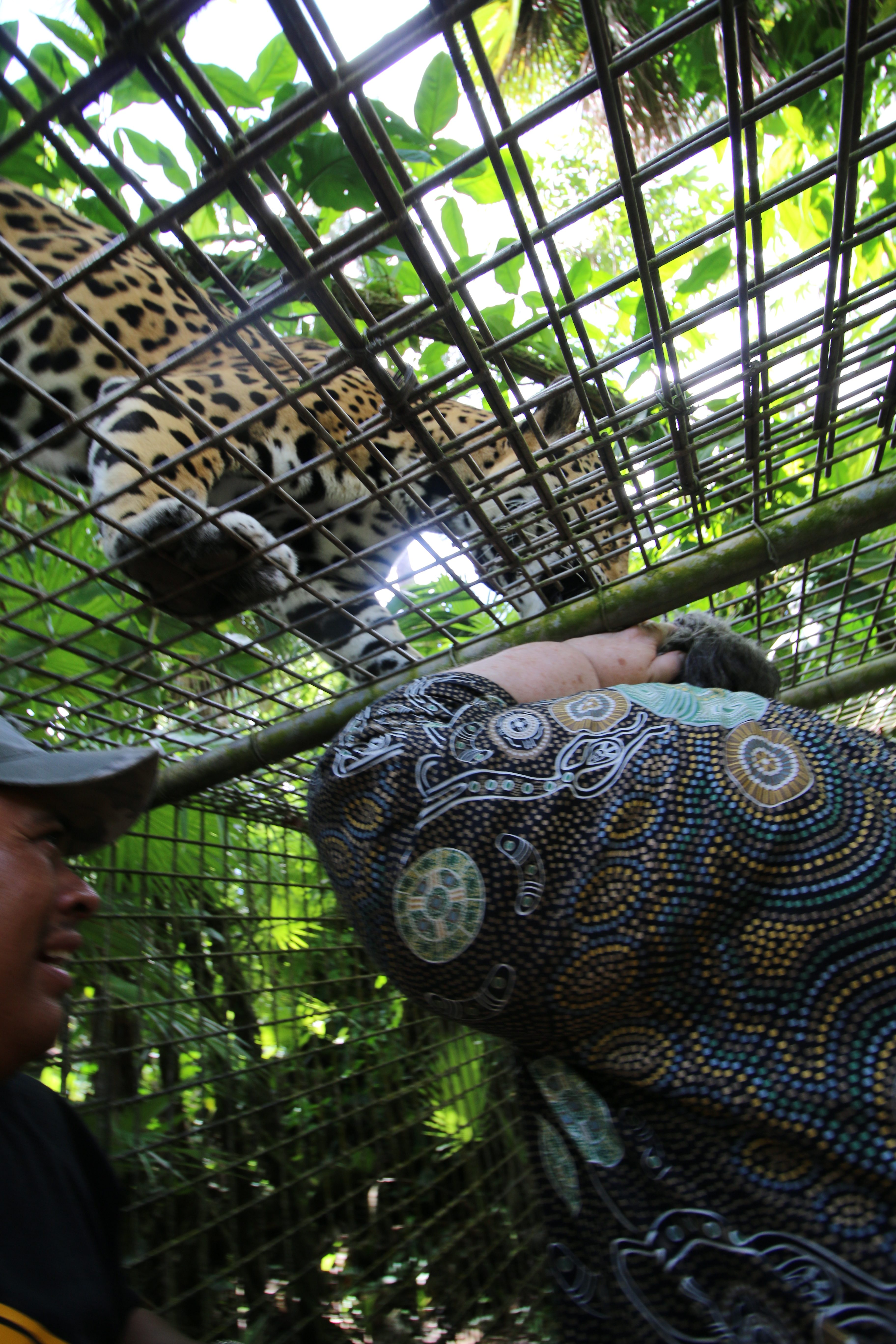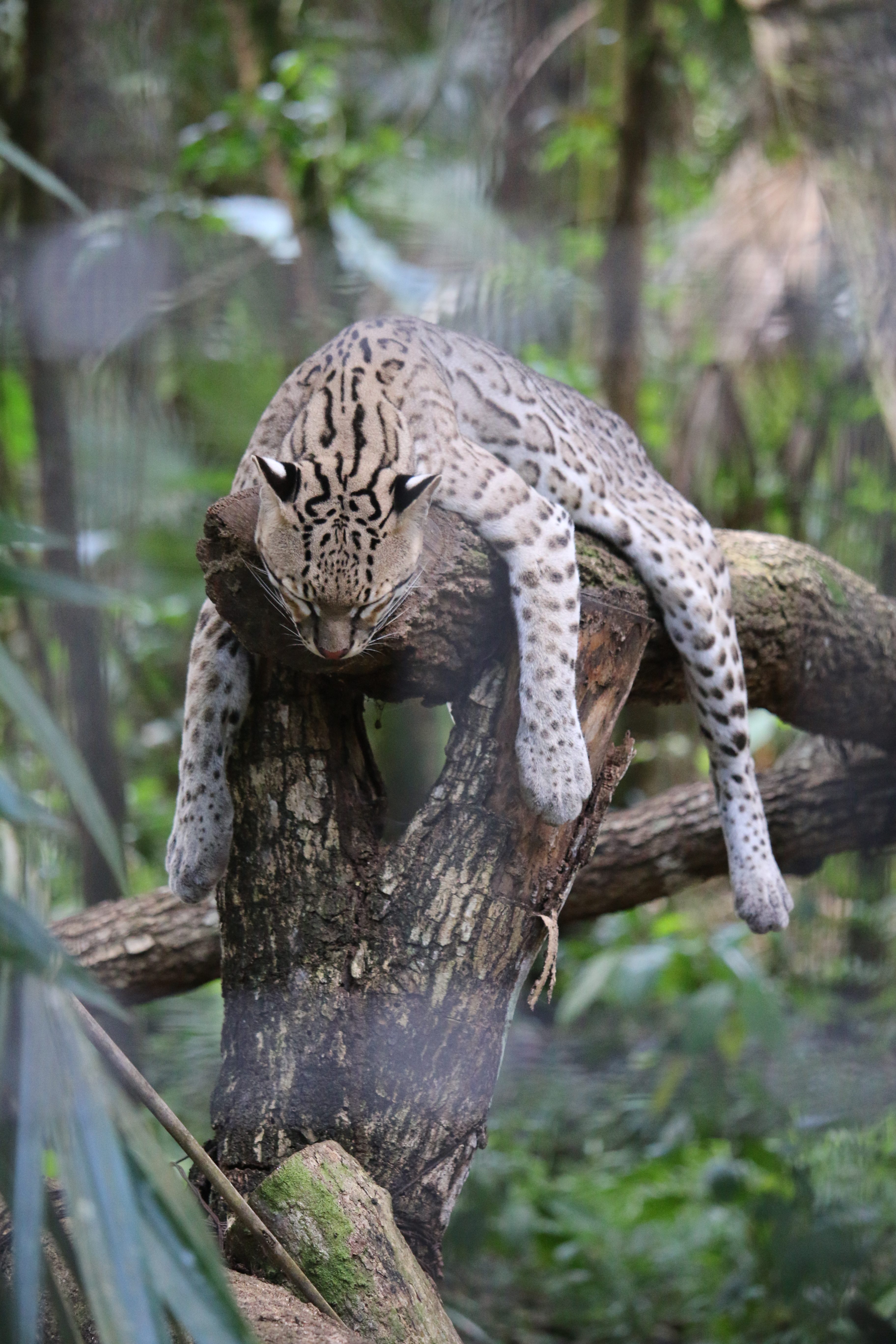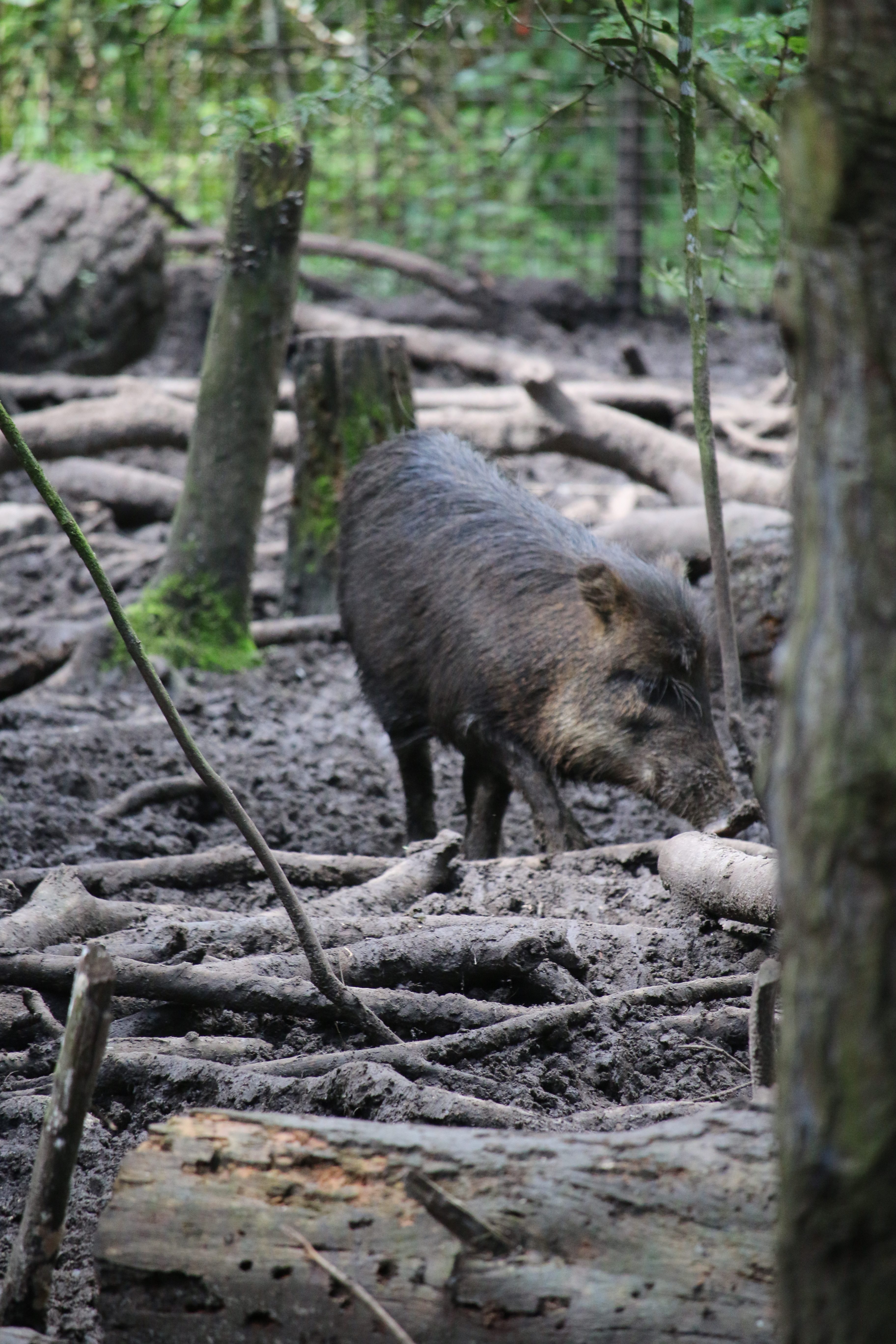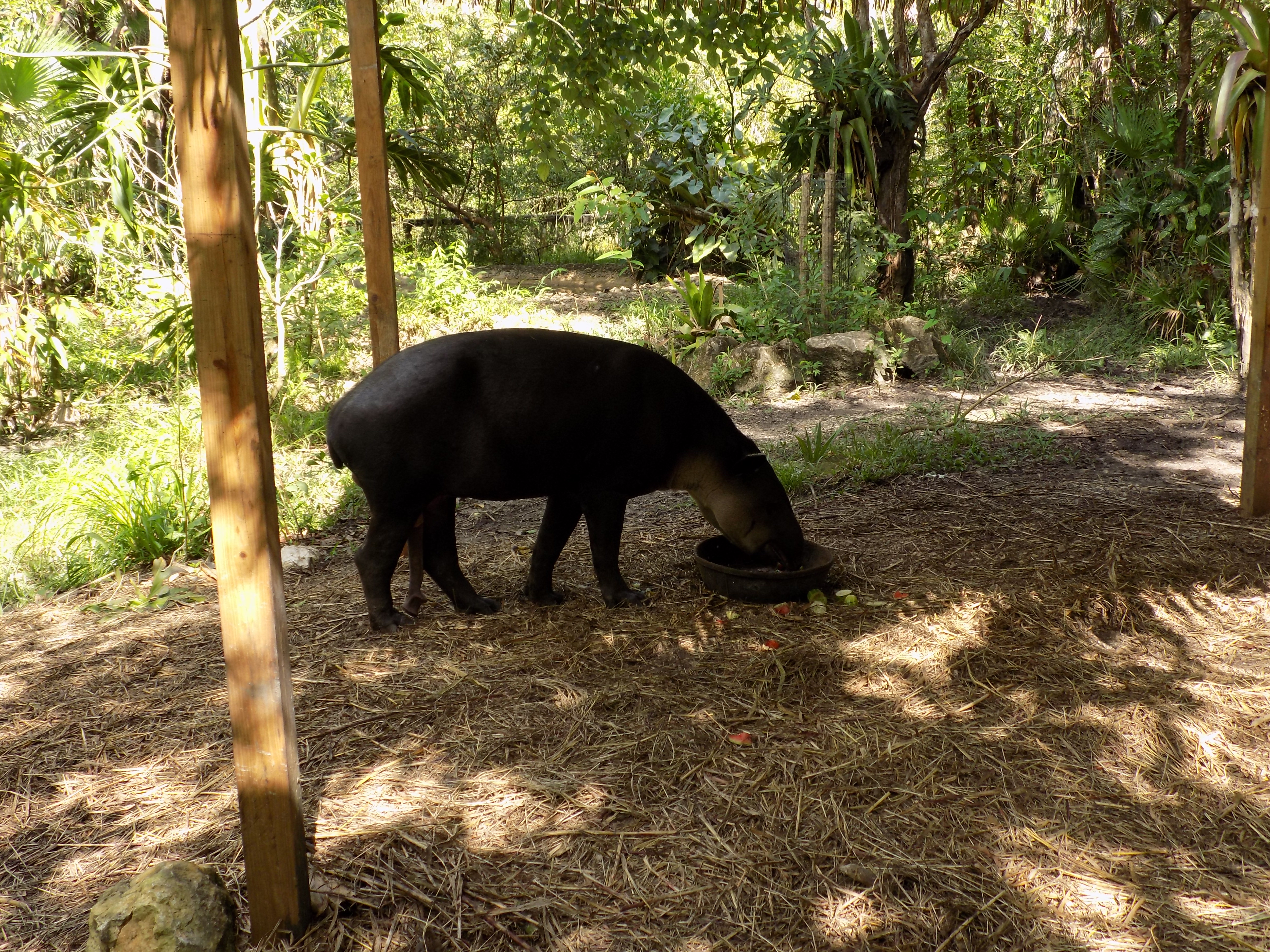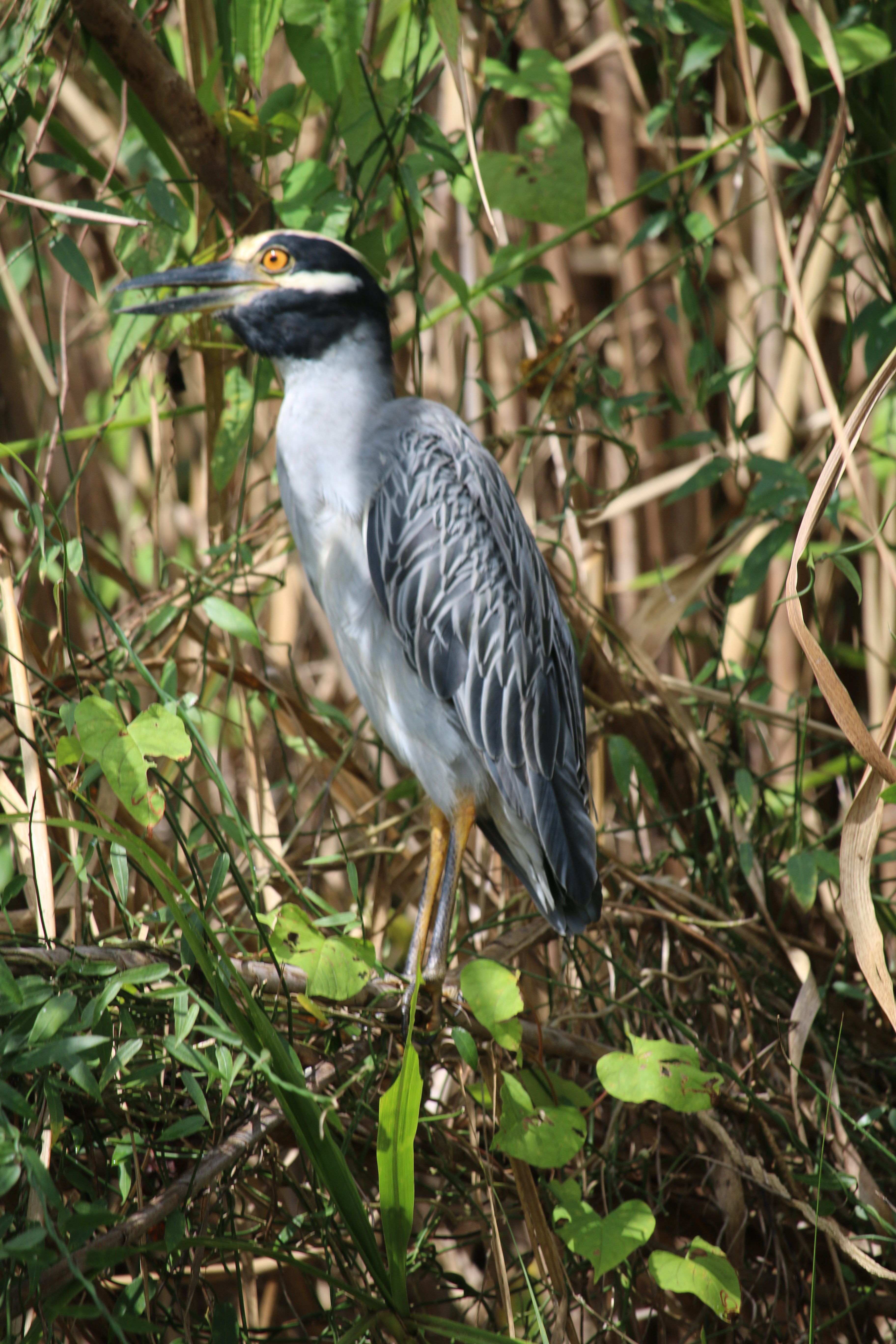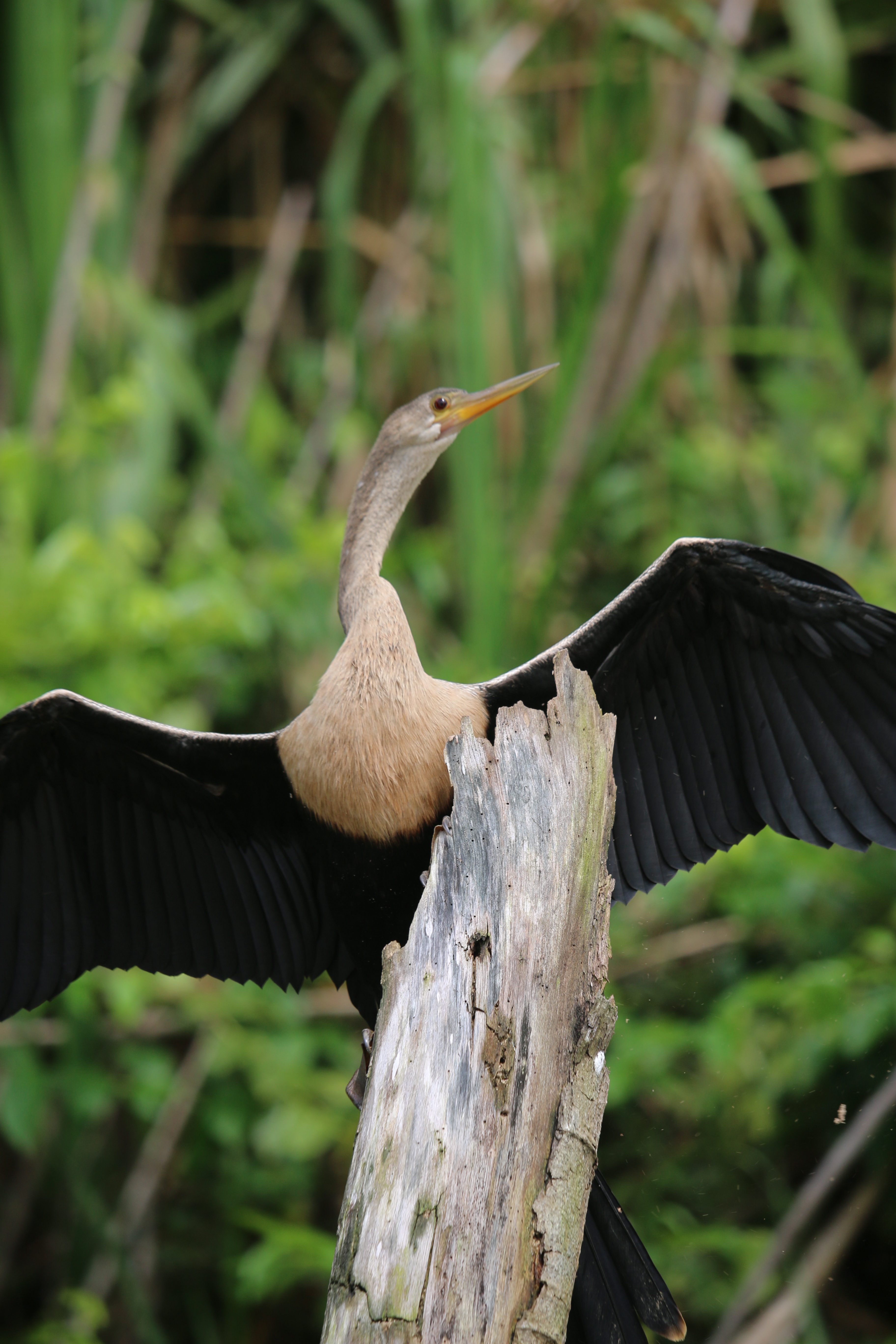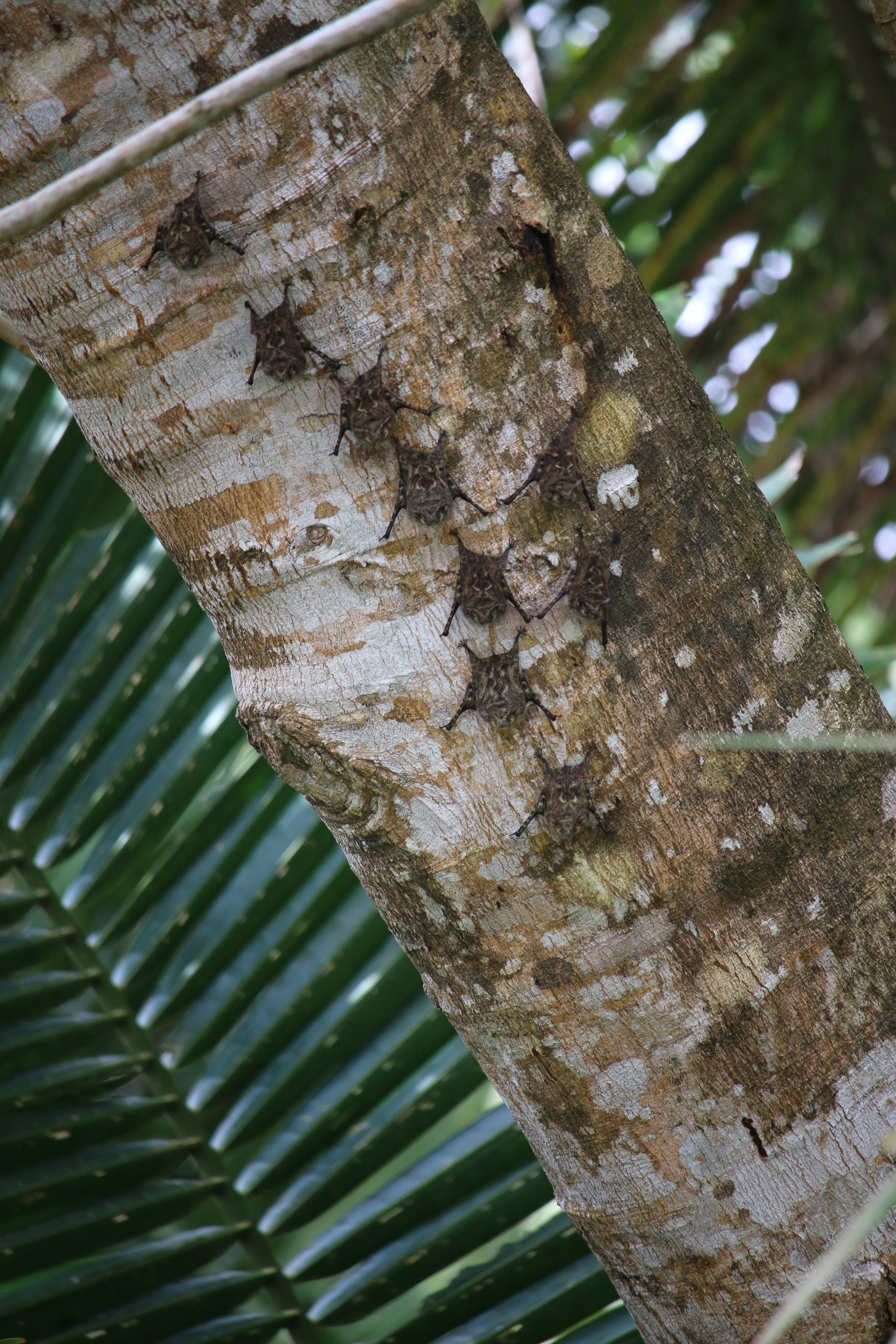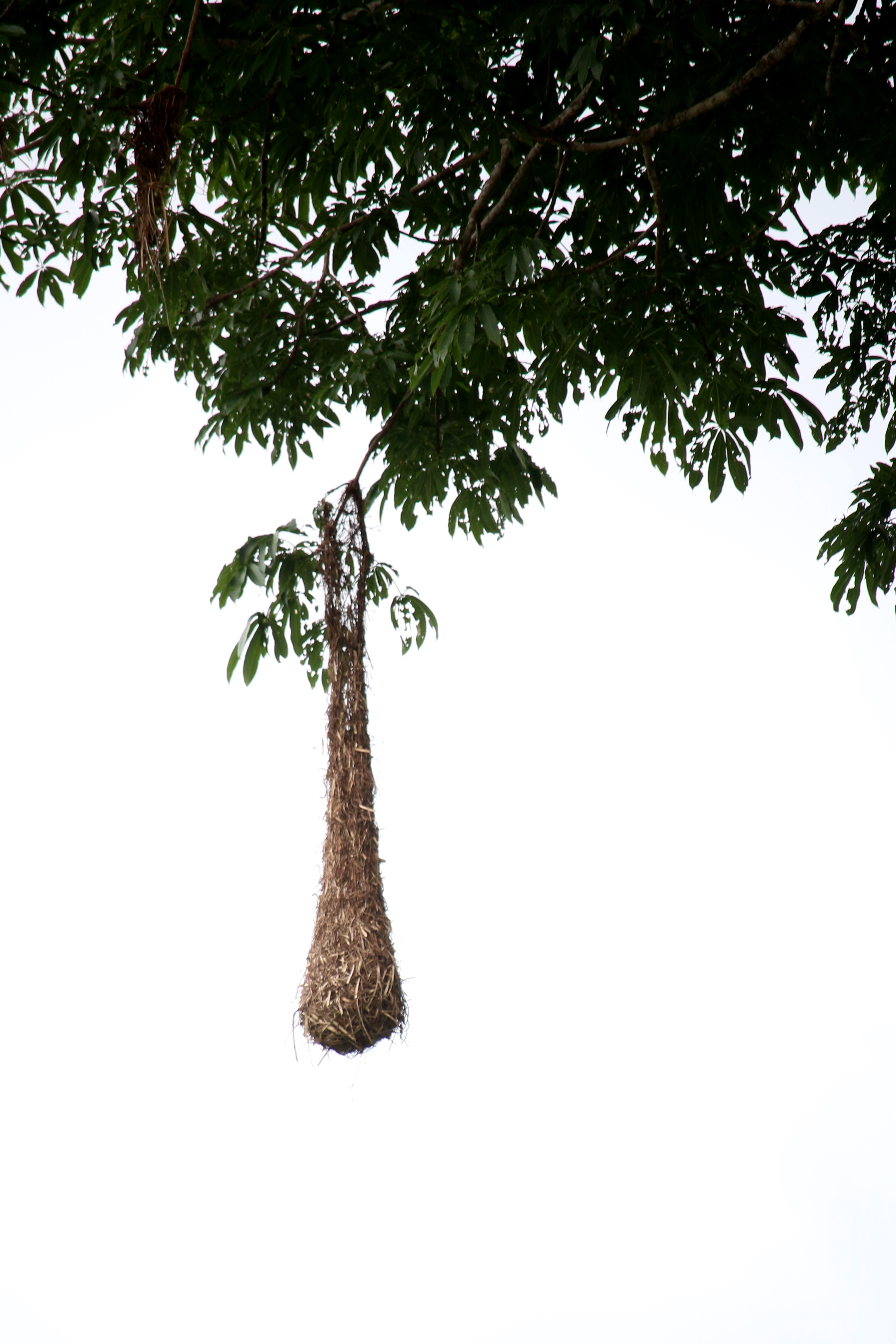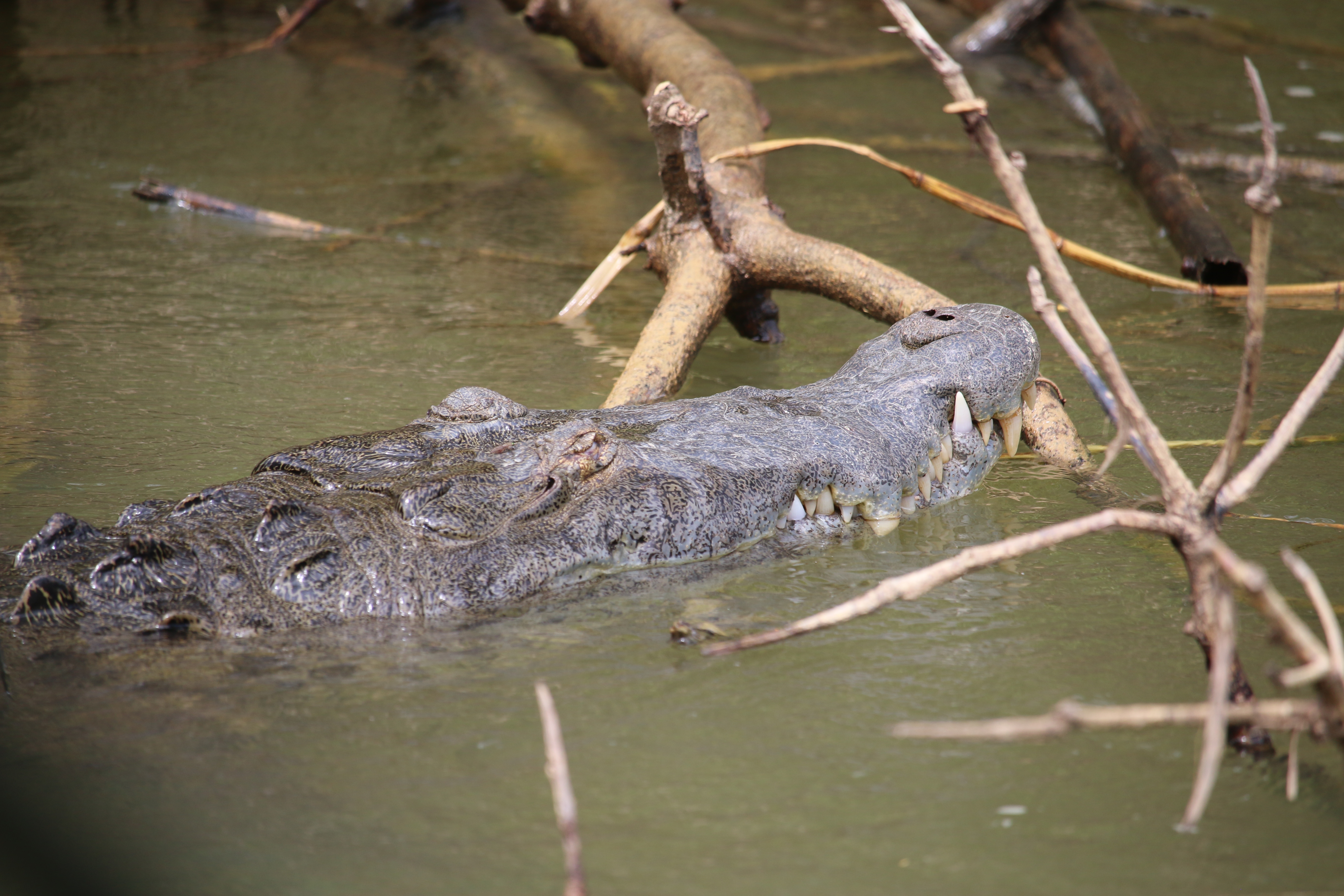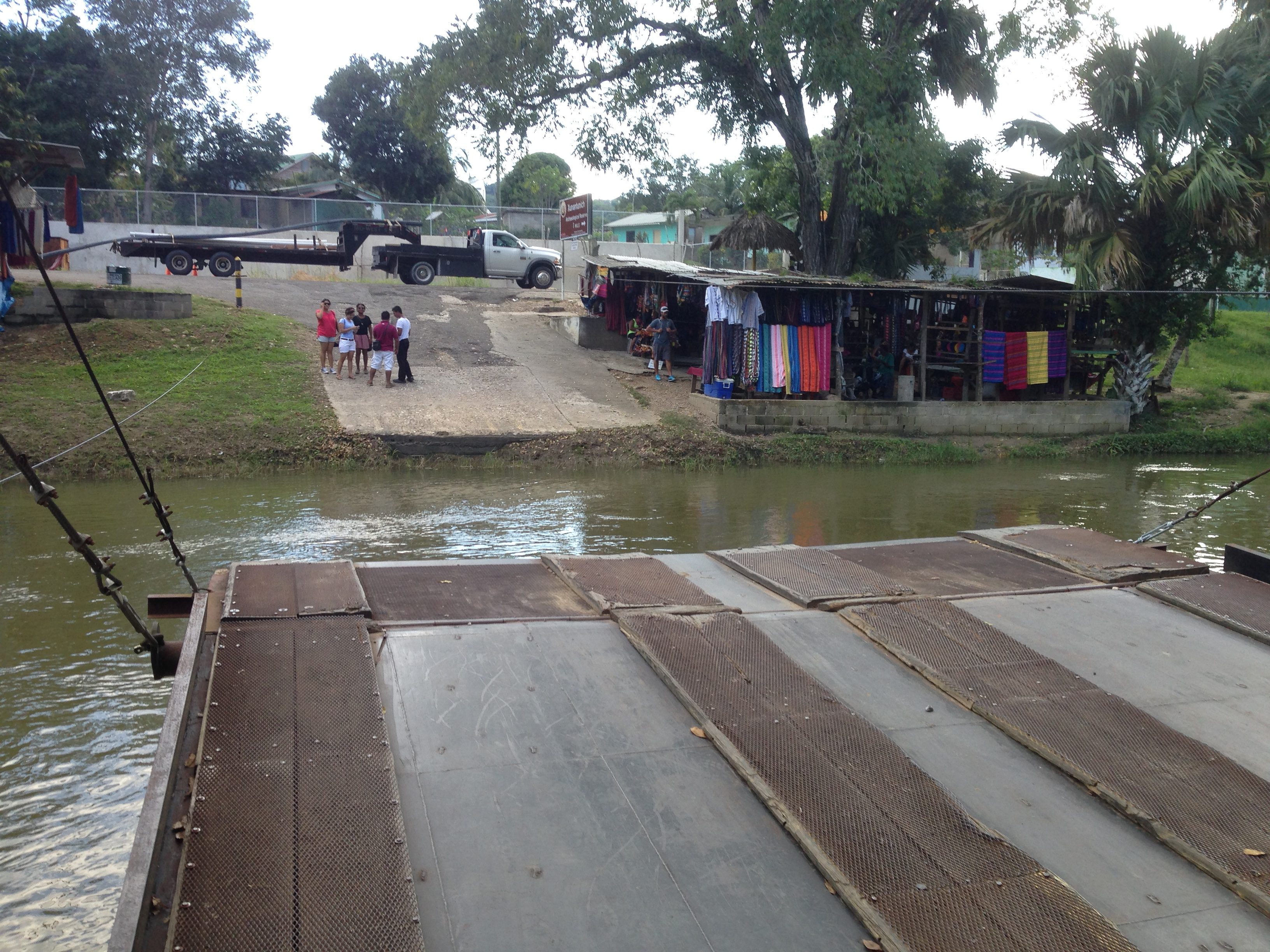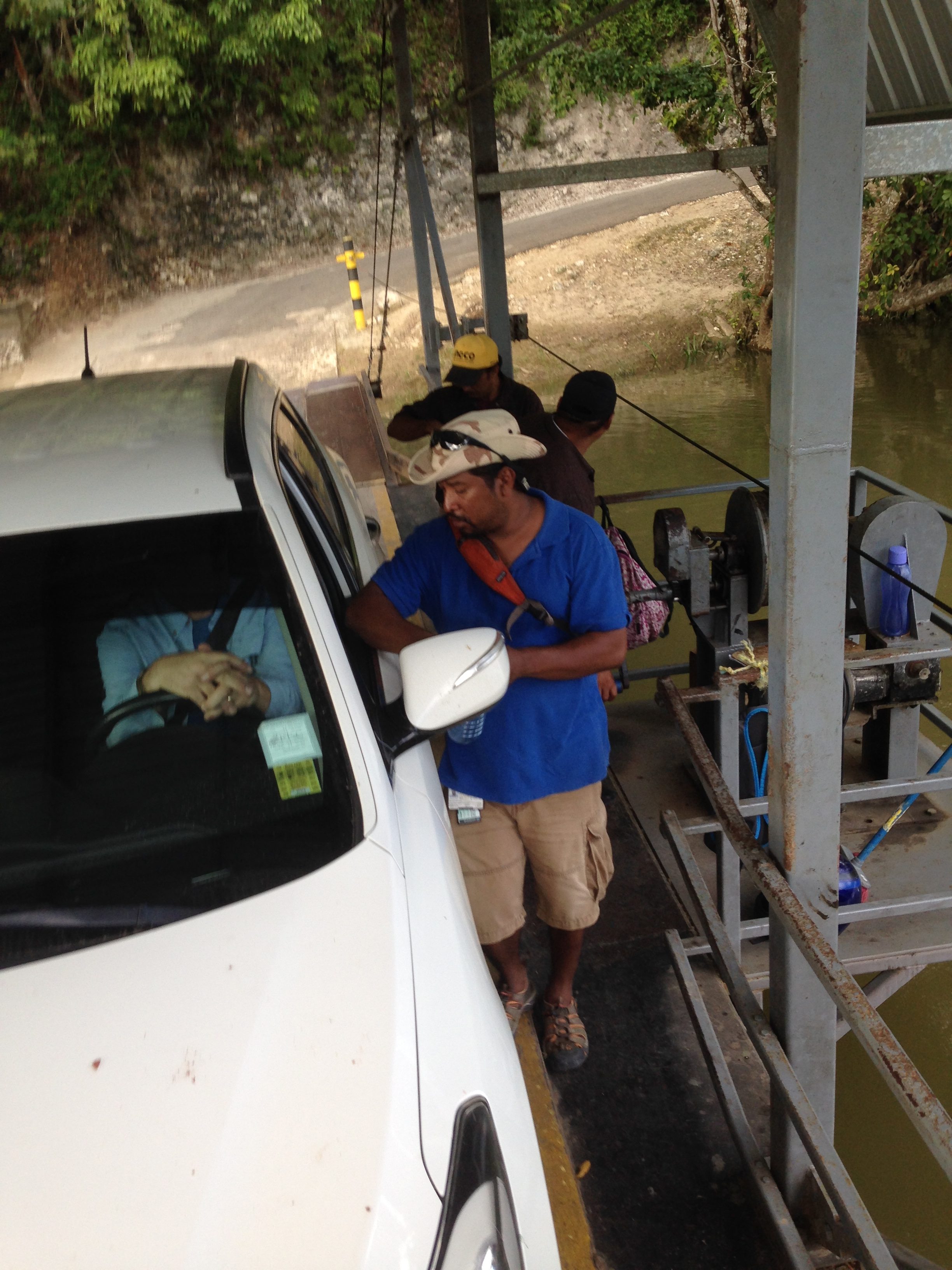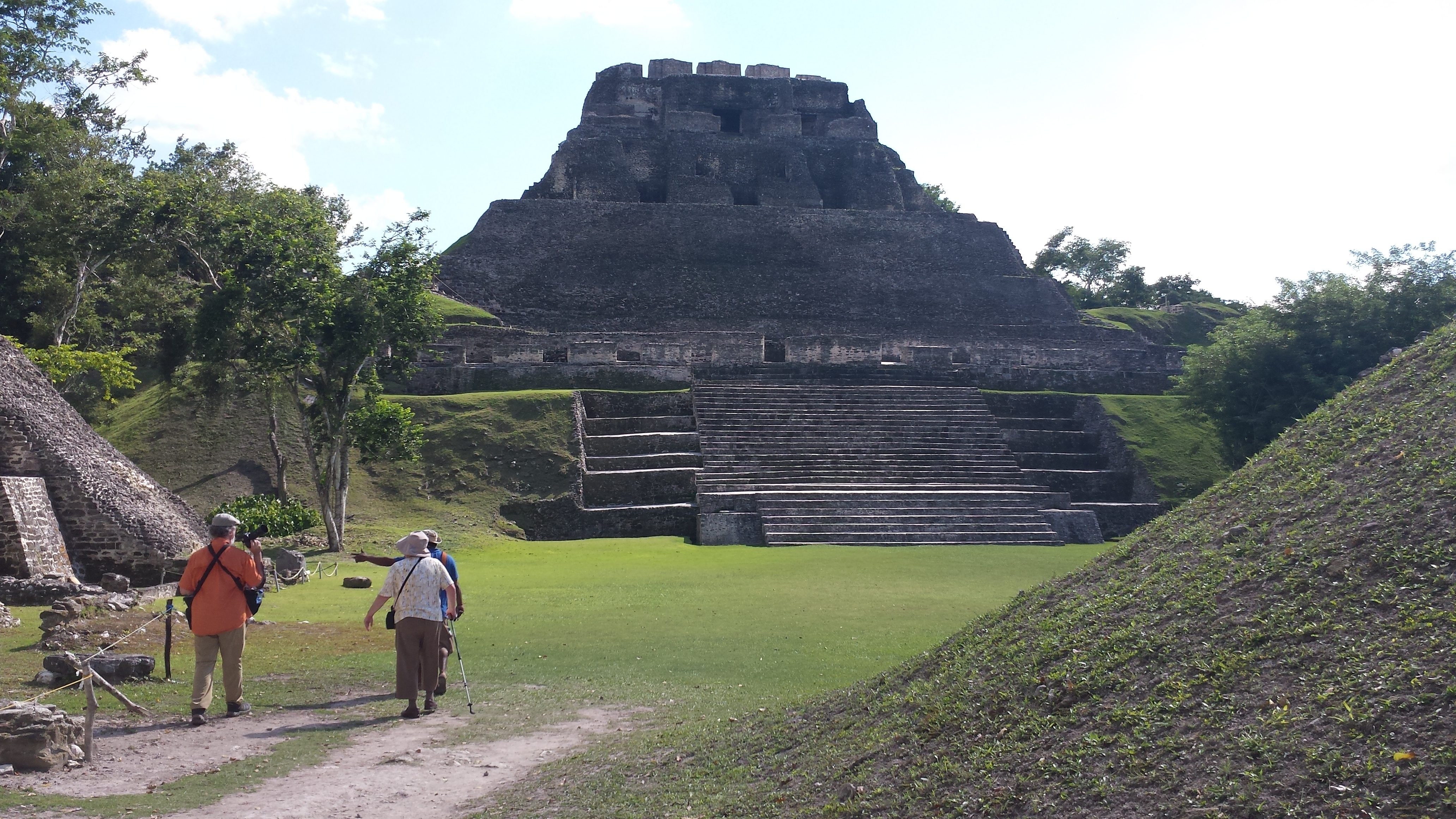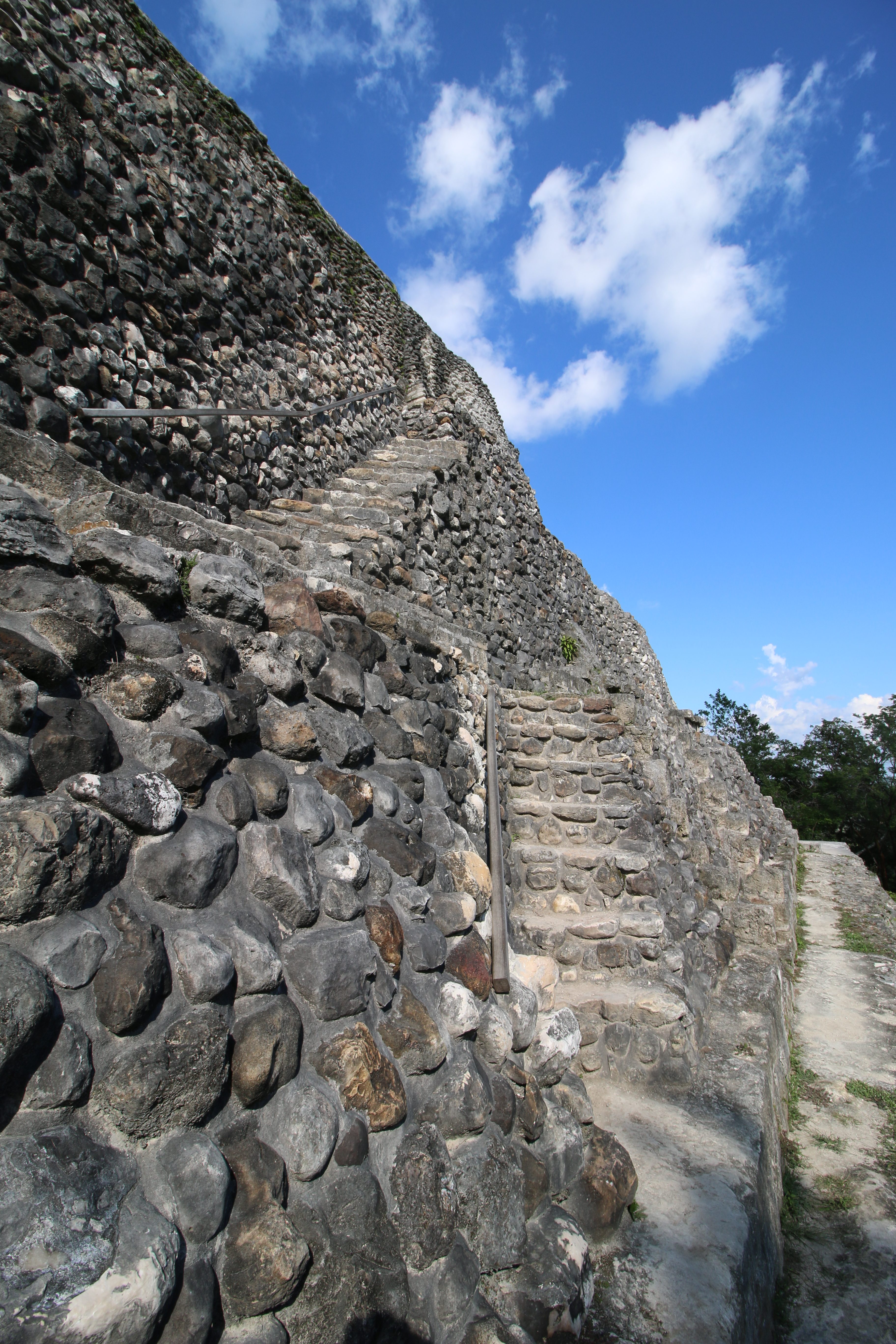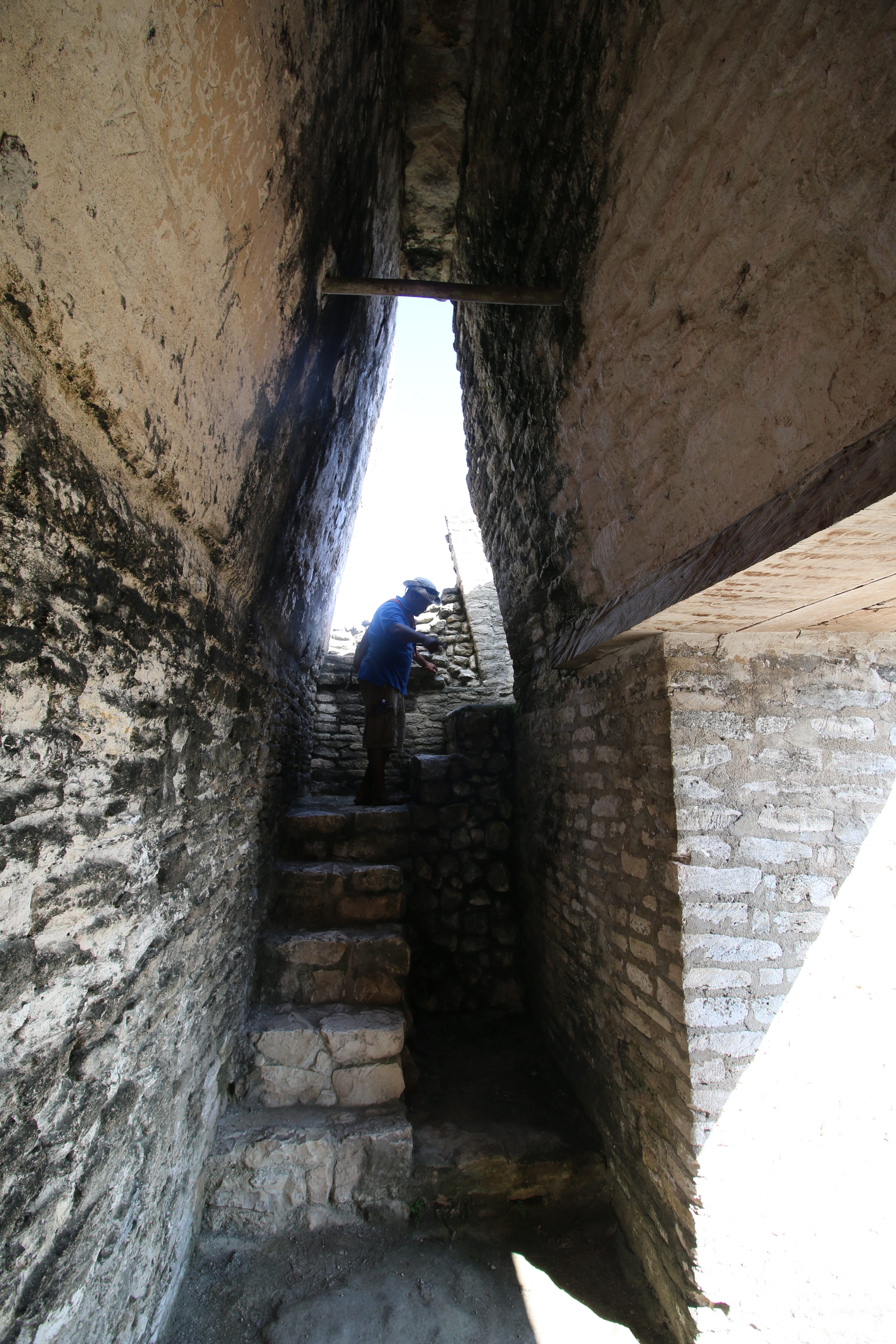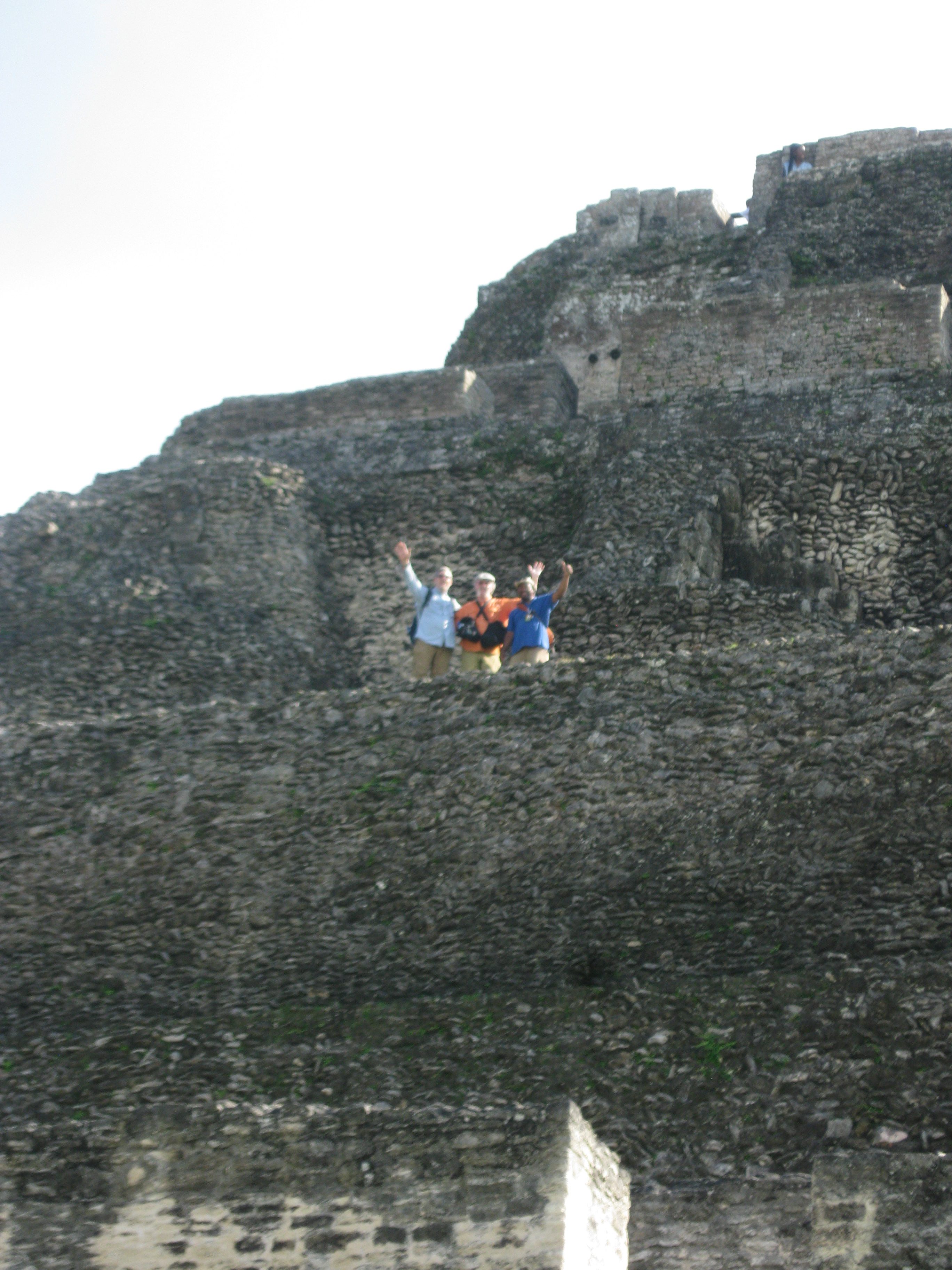Thursday – 11/3/2016
Our traveling companions Mark and Vicki picked us up at 6:45 pm and off we proceeded to the airport. Our flight was scheduled to take off at 11:45 pm so we wanted to allow plenty of time to park the car, catch the car park shuttle, and arrive the required 2 hours ahead of time for check-in. And of course, because we had left home with time to spare, we made it to the airport with nary a traffic problem, car-park hiccup, or security hassle. In fact we were at our gate by 9:00 pm, way too early. So off we went in search of a drink and a nosh.
We were seated on the airplane and ready to take off at 11:45 pm when the captain announced that takeoff would be delayed because of a medical emergency. So we were 25 minutes late getting off the ground. Then after spending 3 or so hours in the Houston airport, we left an hour late due to a problem with a fuel pump. (I can forgive safety concern delays. It’s the delays caused by someone trying to board the plane who is “sick” (aka medical emergency) because of an obvious hangover that brings out the “throw the turkey in jail” response in me!) But after 2 hours and a semi-rough flight, we landed safely at the Belize airport
Unless you have experienced high humidity, you really can’t appreciate all the stories you hear and read about it until you step off a plane and into a sauna. And what was it doing outside? Well, of course, it was raining! (Wait a minute – we came here for the sun, or so I thought at the time. I later discovered that clouds were my friend, but that’s a story for later in the narrative!) So after buying gin for Mark and me and 12 year old Scotch for Mr. C. and Vicki at the duty free store, we headed outside to find that Mark had already collected our rental car. So off we headed to our destination – Hopkins. Mark in the driver’s seat and Mr. C. as shotgun/navigator.
Before I go any further, I must tell you about the roads. There are only 4 paved highways in all of Belize and we were lucky enough to hit them all! The Northern, Western, Southern, and Hummingbird highways. And just so you’ll know what we got ourselves into by renting a car, let me describe a Belizean highway for you. Two lanes, most of the time, unless the road narrows to a one lane decaying cement bridge basically designed for a Smart Car or Mennonite horse drawn wagon.
And traffic control bumps, signed (if the sign is still in place that is) as pedestrian ramps, speed bumps, or speed humps.
These bumps appeared at every approach to or retreat from settlements along the highway, in front of every school (mostly private Christian schools BTW), as well as shortly before bus stops. Sometimes the bumps were rather benign. Sometimes they took on huge proportion. Sometimes, even though signed, there were no bumps at all. Not nice! So of course, we were never quite sure how slowly we should approach these speed limitation devices because they were craftily constructed at various heights and widths. So throughout our trip, whoever was driving had to constantly hear a litany of “bumps” from the three passengers in the car. Then to make driving even more interesting, once you left the “highway”, you were not only challenged with bumps, you were besieged with potholes. Some of which were large enough to swallow a small manatee. (More about manatees to come.)
On secondary and lesser roads (some paved, some not) after a rain, there were actually puddles that covered the entire roadway. And of course because we couldn’t see through the water, we never knew whether or not we were not only fording a small pond, but crossing an area with multiple potholes. Never a dull moment for the lucky person behind the wheel.
I should also say a few words about road lines while I’m on the subject of roads. You know, those white and yellow painted areas that help you safely navigate the treachery of ditches, not running into power and light poles, or meeting a vehicle head on, etc. etc. Actually only one word is necessary to describe the whole road line situation – rare! We didn’t really realize how rare until our last evening in Belize as we were returning from our visit to Xunantunich. (Read all about Xunantunich on the entry for Tuesday, November 15th) Before that evening, we had either been back in our room before dark, walked back to our room from a nearby restaurant, or driven through Hopkins where street lights were prevalent.
So here we are, driving home from an exciting but tiring day, its late afternoon/early evening, and we are suddenly driving at dusk amid pedestrians, bicycles, cars, buses, trucks, horse drawn wagons, etc. with no lines to tell us if we are about to veer off the road or into the oncoming lane. And to make things even more hazardous, there was a thin mist or fog to further obscure the driver and white-knuckled passenger’s vision. So crawling up the back of a dump truck or horse-drawn wagon, or colliding with a pedestrian or bicycle driver was an ever present possibility. Plus, and this too was unexpected, the low beams on our rental vehicle were damn near worthless. The high beams were fine, but there were way too many oncoming vehicles to reap any real benefit.
I would like to say that our drive home from the Mayan ruins was pleasant, but it definitely was not! I would have kissed the sandy ground when we arrived safe and sound at the Carrie Bow suite at Buttonwood Guest House in Hopkins, but I was afraid of getting sand fly bites on my lips! (These darling little critters are known as sand fleas to us, but in Belize they are referred to as sand flies. Regardless of what they are called, they are nasty little beasties and their bite itches for days!)
I already mentioned that our first destination upon arrival was the small village of Hopkins.
We decided to stay in Hopkins because this rural and not too touristy village was comprised of both the Garifuna and Mayan people. And we had all agreed ahead of time that we wanted to stay as close to a cultural center as possible.
The Garifuna, a people of mixed indigenous Caribbean and African descent, who make up about 11% of the country’s population, trace their history back to the island of St. Vincent, one of the Windward Islands in the eastern Caribbean.
At the time of Columbus’s landing in the Americas, the island of St. Vincent in the Lesser Antilles had recently been settled by people from the South American mainland who had subdued the previous inhabitants, the Arawaks. Then in 1635, two Spanish ships carrying slaves from Nigeria to Spanish colonies in America were wrecked off St. Vincent and the survivors took refuge on the island. The Caribs and Africans instantly clashed, but over the centuries, the descendants figured out how to live together peacefully, married, raised children and became jointly known as Garifuna. According to tradition, the first Garifuna arrived in Belize, then British Honduras, on November 19th, 1802. This day is now a national holiday in Belize celebrated with drumming, dancing and pageantry. The Garifuna people still embrace their own language, but it is the rare villager who doesn’t speak English. The village of Hopkins and surrounding towns are also home to many Mayans. All the inhabitants of this region seem to have adapted well to living with each other and we witnessed no discrimination. Everyone seemed happy, healthy, and eager to make our visit as pleasant as possible.
A little about our accommodations in Hopkins. Vicki had done a lot or reading beforehand and suggested that we book only one accommodation for our entire stay. We all agreed on Hopkins because the places and things we were most interested in seeing and doing were fairly close. None of us were scuba divers or had any desire to spend all our time lying on a beach applying sun screen every 30 minutes. So staying on one of the tourist islands in the barrier reef was totally out of the question. As I stated above, we wanted to expose ourselves to the culture of the country. So Hopkins, with its central location and cultural heritage was the perfect place for us. So we rented a 2 bedroom suite with a full kitchen.
The kitchen was actually quite well appointed. Our only surprise in our rented unit was the air conditioning situation. The air conditioning units were operated automatically, and only offered us relief from the oppressive humidity from 6:30 pm to 6:30 am. Apparently electricity is very costly in Belize. If we had known better, we would have paid the additional $10 a day to run the air conditioners continuously (or at least when we were in the suite). But none of us had enough experience with heat and humidity and were too tired when we checked in to make the decision to pay the extra charge. Knowing what I know now, I would have paid the additional charge in the time it took to swat a sand fly. Just as an example of how hot and muggy it was; when we got out of our nice air conditioned car, our glasses would steam up!
A note about the bumps labeled “Pedestrian Ramps” mentioned above. Since these bumps were everywhere along the road and every vehicle had to approach and cross the bumps at low speed, small merchandise stands set up right next to the bumps festooned the countryside. At these stands you could buy everything from coconut water and fresh corn, to fresh fruit and homemade tamales. Talk about curbside service!
Also, it was not at all uncommon to see men walking along the roads with machetes in their hands or hanging from their belts. Or to see the men using their machetes out in the fields or even just in their front yards. And even though machetes can be used as lethal weapons, I felt no fear seeing them being carried about. In Belize they were merely a necessary tool, not an overt weapon.
Note to self: add extra air to your list of lessons learned for the next time you visit a tropical country!
Friday – 11/4/2016
Lest you haven’t already ascertained that the roads in Belize were in very poor condition, let me further inform you that even the “main” roads sometimes had potholes. And on many of the secondary roads, pavement was apparently forbidden, while huge numbers of potholes were obviously encouraged. And on every road, lots of pedestrians who appeared to suffer from late stage death wishes, truck drivers with gambling inclinations (they loved to pass on curves), suicidal bus drivers, and as already stated, speed bumps designed to insure that shock absorber shop owners could easily send their children to college!
And every contrivance known to man was to be found on the motorways, including horse drawn wagons belonging to the Mennonites. We never saw a dog cart, but it wouldn’t have surprised me a bit!
Now at this point, I must defend our choice of renting a car, regardless of all the trials and tribulations associated with said action. We were free to go anywhere we chose. We could visit areas of the country we would never have been able to visit without our own four wheels, and we got to enjoy some terrific rhetoric mainly at the driver’s expense. (Life just doesn’t get much better than that, right?!?!) We estimate that we drove about 850 miles while we were in Belize. And this doesn’t even count the time our car spent in the air from being driven over speed bumps at a high rate of speed! (Not on purpose I assure you!)
We arrived at our guesthouse after first taking a couple of turns through the town (and I use the term “town” lightly). Not really a town as much as a village. Real people living in real homes. Lots of kids and everyone smiling and saying hello. Restaurants which, in many cases, were nothing more than converted home porches remodeled into service kitchens. The dining areas were often just an extension with open sides and a thatch roof.
Very casual, but serving fresh food in a very inviting environment. And no such thing as “fast” food! Every dish was prepared as needed. And always fresh juices on the menu – orange, lime, watermelon, pineapple, and even sorrel at one restaurant. (Sorrel juice is made from the flowers of a member of the hibiscus family. The taste is best described as a unique sweet-sour, mellow pleasant, cranberry-like.)
Our first evening in Hopkins we decided to dine at a small restaurant (The Gecko), owned and operated by a Canadian couple from Toronto. There were only 5 tables outdoors, and the small indoor area was comprised of just a tiny bar with a few bar stools. The outdoor area patrons were all tourists or ex-pats, eating quietly and displaying their best manners. The real fun seemed to be coming from the bar! That’s where the regulars hung out. And they were obviously having a great time. Much laughter was heard. The highlight of the dinner was an appetizer called “Gecko Balls”. And on the menu, in good sized print, appeared a statement to the effect that “no Geckos were harmed in the making of these balls”. The balls were deep fried coconut rice balls served with a BBQ sauce. Absolutely delicious. Very much like an Italian Arancini only with coconut as one of the ingredients.
Then it was home to an early bedtime since none of us had been able to get any quality sleep on the flights down. So after a good 10-12 hour sleep, we began our first full day in Belize – 11/5/2016
Saturday – 11/5/2016
Woke up around 9:00 am desperately needing a cup of coffee. OK, every morning I awaken desperately needing a cup of coffee, but I was especially in need this morning. While all of us were drinking our coffee on our own private lanai, Matthew, one of the resort workers came by to offer us each our own fresh coconut. Well, when in Rome, or in Belize, of course we said yes. So we watched while he climbed a coconut tree (yes climbed the tree, bare feet and all) in the back yard of the guest house.
He harvested several immature coconuts while he was at it, and one “ripe” coconut.
Then back down on the ground he explained about the different uses of immature and mature coconuts as he was using his machete to lop off the top and bottom of 4 immature coconuts.
Immature coconuts are a light caramel color, whereas mature coconuts are a dark brown and smaller. Mature coconuts are used in cooking, while the immature coconuts are cut for the water.
So each of us received our own fresh coconut, served with a straw, accompanied by Matthew’s invitation to add a splash or two of coconut rum if so desired.
Mr. C. of course had to try his “water” adequately laced with coconut rum. (Well it’s traditional to drink your coconut water with rum. And Mr. C., ever the polite tourist, was not going to fly in the face of a well-established Belizean tradition! In other words, he took one for the team!)
The “water” was not real sweet, nor did it taste very much like coconut. I, in all my naivety, thought the coconut would be filled with coconut milk. Wrong! Coconut milk comes from combining water with grated coconut, then pressing it together with your hands, wringing out the liquid, then placing the grated coconut meat in a colander and letting the “milk” drain into a container. What’s left is merely fiber, which is lovingly referred to in Belize as “trash”. (Gives new meaning to “please take out the trash dear”, that’s for sure!) Apparently all the oils and flavor are removed in the making of coconut “milk”. The “trash” is then either fed to farm animals or used as compost. (The grated coconut that we buy in stores has not been used to make coconut milk, so therefore it still retains its flavor and oil.)
After our coconut water experience and way past time for food, Tina the owner and chef of Tina’s Restaurant was busily making coconut milk when we arrived at 11:00 am. So we had a chance to witness this process in person. (Little did we know we’d be making our own coconut milk just a few days later.)
Tina’s restaurant was only a block and a half from our guest house. The close proximity to our lodging and the fact that the sign board outside the restaurant advertised Fry Jack were both compelling reasons to let this lovely Garifuna woman cook for us. We had read about Fry Jack in our Rough Guide to Belize and on the internet. It was highly touted as one of the food items we simply had to try while we were in Belize. So of course, we really wanted to experience Fry Jack. Fry Jack is basically fried bread dough, not unlike Navaho fry bread, and every bit as delicious. And even though the breakfast hour was officially over when we arrived at the restaurant, Tina fixed us breakfast regardless. And it was absolutely delicious. I ordered one of the standard items off the breakfast menu – 4 pieces of Fry Jack, fried fresh barracuda fillets with salsa, and refried beans. OMG, I could happily eat one of Tina’s breakfasts every other morning for the rest of my life! And all for the whopping sum of $10 US. (BTW – US dollars were gladly accepted everywhere we went. The exchange rate was 2 to 1. So if the menu stated breakfast was $14, we were actually paying 7 dollars US. And worth every penny I might add.
While we were finishing our breakfast a pickup truck stopped in front of the restaurant. The two gentlemen who got out of the truck were selling fresh fish. We watched as Tina sorted through the entire catch, choosing only the fish she felt were worthy of her cooking expertise. And as we were finishing our breakfast, we were entertained by Tina’s daughter as she used a large sharp knife to scrape the scales off the newly purchased fish. (I must say, I would not have even let my children near an implement of destruction like that knife when they were this little girl’s age, much less use it! Different cultures, different circumstances, different expectations, different necessities!)
A bit about the food we enjoyed while in Belize. Beans and rice are a staple of the Garifuna and Mayan peoples.
The beans, red kidney beans, are grown locally on cleared jungle slopes mainly on large farms owned and farmed by the Mennonites. (Often referred to by the locals as “Moneynites). The rice (white) is grown in the northern part of Belize. Rice and beans are served in combination, or as separate dishes. I personally loved the beans served like Mexican refried beans. They were absolutely delicious.
We also ate a lot of Barracuda and other types of fish. Mainly I would categorize the food in the area we visited as Mexican influenced with fresh fish (including lobster), fruit, and vegetables (often in the form of coleslaw or pico de gallo) with a smattering of Jamaican in the form of jerk chicken and pork thrown in for good measure. Tortillas, both corn and flour were usually available breakfast, lunch, and dinner. And of course – Fry Jack.
After breakfast/brunch we decided to visit a couple of places on our “must see” list. But first, a visit to our local grocery store for a few provisions. Breakfast supplies, paper towels, cookies, and of course the obligatory vacation treat – Cheetos!
So with a refrigerator and larder full of supplies, off we proceeded to a chocolate centre. We wanted to take a tour of a cocoa plantation and a class to learn how to make our own chocolate bars. Well, tours were not offered on weekends, so we made a reservation to take a tour and make a chocolate bar on Monday.
Next we drove to Marie Sharpe’s hot sauce facility for a tour of her factory. As it was explained to us by Mariano, our unofficial waiter and provider of valuable information at Tina’s restaurant, Marie was recently inducted into the International (actually intergalactic) Hot Sauce hall of fame. Belize invest.net or Marie Sharpe for more info.
Anyway, Marie’s facility wasn’t open either! So we are now at 2 strikes. So next we decided to visit the Sittee River area because the area is known for having Toucans in every tree. Not a Toucan in sight! But what we did find was a great bar right on the river.
So after 3 strikes on places and things we wanted to see, we commiserated over drinks and an appetizer before we headed home to lick our wounds and assuage our dashed hopes with liquor and more food.
When we arrived home, we spent a nice hour or so catching up on our reading, internet surfing and generally enjoying each other’s company. For dinner we headed out to the resort where Mariano (unofficial waiter at Tina’s) was the bartender. The fanciest place we had seen so far. The food was only adequate, then it was home again to do some more reading and partake of a little night cap. When we walked in our door, a small gecko was on one of the walls in our suite. Upon seeing us he hid under a brightly colored hammock that was being used as a wall decoration. He took one look at us, thought tourists, and to the best of my knowledge is still under the decorative hammock wondering if life was really worth living if all you had to look forward to was the company of foreigners!
Sunday – 11/6/2016
It being Sunday, and not knowing whether or not restaurants were open, we decided to fix breakfast in our suite. So I got out the frying pan, slapped some bacon in it, and about 10 minutes later the bacon was happily draining on a paper towel lined dinner plate. Next raisin bagels into the toaster and strangled eggs (some people refer to them as scrambled eggs) on the stove. Nice homemade breakfast. After breakfast we decided to head for the town of Placencia to while away our Sunday afternoon. But to get there, we must first drive over the Maya Beach Isthmus aka Merry Isthmus (I kid you not) to reach our destination.

“Moat” around the housing development – OK, maybe just a way to bring boats to the individual homes, but it sure looked like a moat to us!
The town of Placencia is perched at the end of a peninsula. The town is charming. It is shaded by palm trees, cooled by sea breezes, and the day we visited, drenched by a torrential rain storm! So we did what every other Northwest Washington foursome would do in our place. We turned around without even getting out of the car!

This dead boat was tied to a dock in Placencia, the same town where later in the trip we would book a water tour. This proves we are a) dumber than stumps, b) crazy, c) adventurous, d) all of the above
At this point in our travels we had as yet to experience a sunny day. But that was just fine as it turned out. Because when the sun does show its face, it’s hotter than a hibiscus. Consequently, every cloud that shields a person from the blazing sun on a super-hot and humid day becomes a blessing rather than a curse. Speaking of hibiscus, they were absolutely beautiful. (Some of the other flowers weren’t so bad either!)
Now of course, we are all avid eaters. So on our way to the Placencia, but still at the southern end of the isthmus, we passed an Indian restaurant. All of us being East Indian food lovers, we decided we could easily enjoy a lovely bit of Indian food for lunch. So on our return trip back down the peninsula, we stopped at Tiger’s Restaurant (self-proclaimed – best Indian food ever!). Unfortunately, Tiger’s Restaurant was under renovation to become a “Mexican street-food eatery”. But Tiger himself recommended that when we reached the village of Maya Beach, we should eat at the Maya Beach Hotel and Bistro. According to Tiger, this restaurant had the best food in Belize! He told us to tell the staff – Tiger sent us. So, based on his recommendation and following his instructions, we drove through Maya Beach, and after passing the Chinese restaurant on the left, we were to look for lots of cars parked along the road on the right. We easily found our destination, parked our car, and headed into the restaurant. As we were being seated, we told the waitress that Tiger sent us. Her response was – which one? So there is more than one “Tiger” in this tiny community? Anyway – it was a lovely restaurant right on the beach, with a menu that set our taste buds on high alert. Everything was delicious, but the winning dish was ordered by Vicki. It was a lobster and cheese grilled sandwich with a not too spicy pumpkin dip. OMG – amazing! No idea what the cheese was. Not like cheddar, just extremely melty. Not stringy or greasy either. Just delectable. And to top off the sandwich, very thinly sliced grilled onions. Absolutely over the top delicious.
After our wonderful and filling late lunch, we came upon a stand near the turn off to Hopkins selling homemade tamales. We purchased 4 for our dinner. We knew we would not be hungry for a large dinner, so something small like a tamale would be just perfect. I would love to say the tamales were fantastic. We ate them, but they were a bit scary. The orange filling was strange, especially at the center where there were small pieces of chicken complete with bones. The outside, which we assumed would be like the masa we all knew and loved, had kind of a gelatinous consistency with very little flavor. For dessert each couple shared a coconut muffin. These were very dense, with mashed banana in the middle. Not much flavor, but a gut bomb if I ever ate one. Again, quite unusual. We all toddled off to bed that night hoping that we wouldn’t be racing for the shared bathroom at 2:00 am in the morning. But we all survived, but decided not to buy any more tamales from street vendors.
Monday – 11/7/2016
After living through the night and all intestinal problem free in the morning, we enjoyed our morning cup of coffee then headed out to Tina’s for breakfast. I was ready for some more fish and Fry Jack. But Tina’s was closed so we continued through town to find an open dining establishment. We decided on Virge’s Kitchen. Not a swanky place, just a covered area with a kitchen in the back. The entire time we were waiting for our food we were entertained by the owner/cook’s two little girls, ages roughly 3 and 4. Both girls were endearing and a pain in the bucket at the same time. After about 30 minutes, included in which the father of the chef had to make two short bike trips to the local grocery store for ingredients, we had our food. FYI: There is no such thing as a speedy meal in Belize, or at least in the area of Belize that we visited. Believe me, I am not complaining. You just have to plan your time commitments accordingly. So, breakfast accomplished, we set off for our 11:00 am appointment to tour a cocoa plantation and make a chocolate bar.
Narciso, our guide at the plantation was a very friendly and knowledgeable Mayan gentleman.
He showed us young cacao trees that were only a year old, and older trees that were bearing fruit. The young trees were interspersed in an orchard with blighted orange trees. Narciso explained that he had grown oranges on his land for decades before the orange blight hit. He felt his only choice since his orange trees had been devastated, was to grow cacao trees even though farming cacao was a much more labor intensive process. But as he further explained, one has to make a living. And being a small two-man (he and his son) operation, he felt growing cocoa for chocolate was his best alternative. But back to our tour.
Cacao pods grow on the trunk of the tree.
And they never fall off of their own accord. When the pods are mature, if the squirrels, bush dogs, and woodpeckers have not already broached the pods for the beans/seeds, farm workers have to cut the pods off the tree trunk individually. The people who harvest the pods have to be extremely careful because if the pods are cut off too close to the trunk, that spot will never again bear fruit.
The harvested pods are then cracked open, typically with a machete, to expose the beans.
I think I was most surprised by what was inside the pod. A cacao pod (fruit) has a rough, leathery rind about ¾ to 1-inch thick and is filled with a sweet, thick, gluey pulp enclosing 30 to 50 large beans/seeds that are fairly soft and a pale lavender to dark brownish purple in color. The pulp and cacao seeds are removed and the outer rind discarded. The pulp and seeds are then heaped in piles, placed in bins, or laid out on grates for several days. During this time, the seeds and pulp undergo “sweating” where the thick pulp liquefies as it ferments. The fermented pulp trickles away, leaving cocoa seeds behind to be collected. Sweating is important for the quality of the beans. If sweating is interrupted, the resulting cocoa may be ruined; if underdone, the cocoa seed maintains a flavor similar to raw potatoes and becomes susceptible to mildew. Due to heat buildup in the fermentation process, cacao beans lose most of the purplish hue and become mostly brown in color, with an adhered skin which includes the dried remains of the fruity pulp. This skin is released easily after roasting. About 400 dried beans are required to make one pound of chocolate. (No wonder good chocolate is so darned expensive!)
Please note: cocoa and cacao seem to be used interchangeably; as are seeds and beans.
After leaving the plantation we went to a one room production room to make our own chocolate bars. Julio, the owner of the chocolate business encouraged us to help grind the nibs and take part in actually making our candy bars.
So using a mortar and pestle to grind the nibs (roasted cocoa beans broken into small pieces), then adding sugar and cocoa butter, we each made our own chocolate bar. We all found the texture of the chocolate to be a bit grainy, but the flavor – excellent!
It was a lot of fun making our own chocolate bars mainly because Julio was quite the guy. He was a Mayan miniature version of Danny DeVito, but with dark skin, hair, a fabulous sense of humor, and a smile that lit up the room. In addition to being a chocolatier, Julio was an inventor. He was very candid about not having enough money to buy expensive equipment for making chocolate on any kind of grand scale. So when in need, he built his own equipment. For example, his cocoa bean grinder was powered by both motors from a disassembled washing machine. Very entertaining man was our Julio, and amazingly ingenious! Truly a renaissance man.
As amazing as Julio appeared, he was not that uncommon. Most of the people we had the good fortune to spend any amount of time with, were clever, smart, well educated (maybe not formally, but never-the-less well informed), and resourceful. And everyone we met shared the one attribute I consider necessary to live in today’s world, be it first world, or third world as in Belize. A good sense of humor. Everyone we met laughed a great deal, and showed no hesitation in bantering back and forth with us in a joking and playful manner. Absolutely delightful. The citizens of Belize made us feel welcome, and even more important, valued as fellow human beings. If only we Americans could feel and treat other ethnicities with as much grace and humanity. When people ask me why I love to travel, it’s hard for me to explain that mostly it’s to feel, for even a short time, like I’m a part of another culture. That I am more than just a US citizen, but rather a citizen of the world. I have learned more about gracious living and the true meaning of happiness from the people in some of the countries I have visited, than I would ever have imagined. As a result, I feel truly blessed to have had the opportunity to grow in my awareness of what constitutes true happiness. And from what I have witnessed, it has nothing to do with money or worldly goods. It seems to stem mainly from the relationships we humans make with those around us. And when you meet someone, as we did from the remote village of Monkey River, who told us how much he wanted his child to have the same advantages he had as a child, you know that money has nothing to do with a person’s quality of life. It mainly has to do with how one lives his or her life. And how much one can give to, rather than take from his fellow man, even if all that can be offered is friendship and civility. But back to our adventure with chocolate.
While we were at the chocolate facility, we also sampled cocoa wine (tasted more like vinegar to me if truth be told). Would have been delicious as an ingredient in a salad dressing along with some olive oil, a little Dijon mustard, clove or two of garlic, salt, and pepper. Just sayin’. So after experiencing chocolate making (and eating) and saying good-bye and thank-you to our new friend, we decided some “real” food was in order. So we headed for Dangriga.
Dangriga is the largest town in southern Belize. It is also the main cultural center of the Garifuna. We drove around the town for a short time, but what we really needed was nourishment! What we found was a fairly modern restaurant with everything on the menu from pork chops to lo mein. Fairly decent food, but not at all what we were expecting. We were still wanting more traditional Garifuna cuisine. But when you’re really hungry, you pretty much eat anything that doesn’t eat you first!
After lunch we stopped at a vegetable and fruit stand. We decided we needed fruit. So we bought a large cantaloupe, some sliced pineapple, a couple of bananas, and I can’t remember what else. Then back to Hopkins to chill out on the upper deck of our guest house for the rest of the afternoon. Met the owners, Tony and Tracy from Atlanta, and spent a lovely hour or so watching the Frigate birds drift over our heads and the alpenglow on the clouds over the barrier reef turn lovely shades of pink.
When you are as close to the equator as we were, it gets dark very quickly when the sun goes down. So 2½ minutes after the sun set it was dark. (OK, 2½ minutes may be a slight exaggeration, but it really does get quite dark in a very short time. Has something to do with the sun setting perpendicular to the horizon at low latitudes.) Then down to our apartment, a before dinner drink, and a long arduous 2 minute walk to our dining destination.
Dinner was at The Gecko restaurant again. And as before, our food was wonderful. Mark and Vicki shared what I believe was the house specialty, a 1 lb. Jamaican spiced pork chop. They both raved about the flavor and actually ordered it again the last time we dined at this casual, café style restaurant. After dinner, James the chef and owner came to our table and we had a lovely conversation about life in Belize. He and his wife were both from Toronto although he had a Jamaican accent from his mother’s side. Just a charming, erudite gentleman. Absolutely comfortable in his own skin. Long dreadlocks and a killer smile. We asked him if he missed Canada. Having come from a very sophisticated urban environment, among other things he missed cheese shops, specialty gourmet food shops, and especially good beef. Cattle are not raised for eating in Belize. Even if they are slaughtered, the meat is not aged, so it is tough and very lean. So the main thing James missed was a truly delicious thick marbled medium rare steak.
After talking with James for about 30 minutes, we walked the short block and a half back to our apartment at the Buttonwood. We read and surfed the internet for a short while, then off to bed. Another fun day in Belize. I guess I should mention that there are bugs in Belize. I’m sure you already knew that, but I felt it only fair to speak about the downside of vacationing in a country which is comprised mainly of jungle and rainforest. But more about bugs later on.
Tuesday – November 8, (election day) 2016
After a stay-at-home breakfast of bacon, strangled eggs, raisin bagel, and fresh fruit salad, we headed off to our scheduled Garifuna drumming lesson.
For an hour we went through several drumming patterns on Garaon drums. The patterns we learned were – Punta – versions 1 & 2, Paranda – variations 1 & 2, and Watine, variations 1, 2, & 3. And just because I know you are wondering how we did, let me put it as succinctly as possible. Andy and Mark – like they’d been drumming all their life; Vicki and Patti – we had fun! That pretty much sums it up!
After drumming we did a little shopping at the local market and then off to find Charlie the birdman.
We had been told that Charlie was the man to see for a bird shooting expedition. Now before you get all hot and bothered, we had no intention of using guns in our quest for birds. We would only be armed with cameras so none of our avian brothers and sisters would be harmed in the adventure. Well, I suppose they could get their nose/beak out of joint if we didn’t film them from what they considered to be their “best” side. But that would be the extent of their discomfort.
Next we headed to Palmento Grove to schedule cooking classes for Hudut (Wednesday morning) and (Thursday morning) Belizean Black Fruit Cake.
After setting our appointments, we headed out to take a tour of Marie Sharpe’s hot sauce plant. Unfortunately there were no tours being offered that day, but the tasting room and store were open. So we tasted and we purchased.
At this point we decided to search out some lunch. Food always helps, especially after ones plans have been thwarted! (We were really looking forward to a hot sauce plant tour.) After lunch at Bahay Fiesta we stopped at the Garamaya Gift Shop. Vicki and I had fun at this gift shop! I found my apron! (Always have to buy an apron as a souvenir.) Also found some other lovely items to bring home as gifts and mementos of our trip.
Got back to our room and were accosted by 4 little ones who hung around with us on our lanai until Mark gave them $5.00 to basically “get the hell out of here”. The money was handed over in the guise of a donation to support one of the boys’ soccer team. Of course we knew the money would soon be consumed in the form of candy. But OK. We liked candy when we were little ones too. In addition, Vicki gave the only girl in the mob some colored pencils and paper. The girl looked like she had just won the lottery. After a little drinky-poo out on our lanai, we adjourned to the living room to read, surf the web, write about our experiences, and bask in the glow of our living room air conditioner.
Later, we decided to go down to hear the drumming concert that had been arranged to entertain a group of Canadians who had come down to Belize to volunteer in the local national park. We had been invited by our drumming instructor after our class. But when we got to the Driftwood Bar (the best pizza in town) there was nowhere to sit and after about 3 minutes of hearing the drummers and singers, I was ready to leave anyway. So off we went to Tina’s, our local restaurant for a nice dinner and quiet evening.
Wednesday – 11/9/2016
After sitting around drinking coffee and discussing the election we headed out for breakfast before going to our Hudut class. At 9:30 we arrived at Palmento Grove. At the entrance, a hollowed-out shell of a concrete-block building was festooned with large Iguanas basking in the sun. These were later identified as Ctenosaurs, a.k.a. Spinytail Iguanas.
At first they looked like they were made out of the same material as the derelict building. But our instructor Eugene assured us they were real. And sure enough, as soon as he informed us that they were cold blooded and breathing, they seemed to come to life before our very eyes.
Instead of being just a cooking lesson, our class turned out to be a cultural tour of Garifuna history. After learning a bit about the history of the people of Belize we started our cooking adventure. We thought we would be learning how to make Hudut as it is prepared today. Instead, we were taught the traditional method, which in case you were wondering, is never going to happen in my kitchen! No offence to Eugene, but I don’t happen to have an open fire pit in my kitchen! And God gave me a food processor for a reason, which incidentally, I plan to continue using!
Basically Hudut is a Belizean mashed plantains and fish stew, the base of which is coconut milk. So we hulled and cracked mature coconuts, grated the flesh, made our own coconut milk, and then prepared the coconut broth. Meanwhile we peeled both ripe and green plantains and threw them into boiling water to cook over the open wood fire. We also added fresh okra to the pot towards the end of the plantain cooking time. (Don’t want your okra over cooked, right?)

Two happy ladies about to take a cooking class. My darling outfit was provided as an apron for the class.
Into the coconut milk we added half a head of garlic, half an onion, a small amount of cilantro, and about 4 leaves of basil. (Way not enough.) Also, a bony piece of barracuda for additional flavor. That mixture lightly simmered for about 15 minutes over the wood fire. Finally the cooked plantains were mashed and several fillet of Barracuda were seasoned with a mix of herbs and spices similar to Old Bay Seasoning, granulated garlic, and black pepper, then fried in vegetable oil. (I almost mentioned to Eugene that a purchased seasoning mix and a large container of granulated garlic were probably not traditional ingredients, but why spoil the fun?)
To eat Hudut in the traditional manner, you dip the mashed plantains, cooked okra, and fried fish in the coconut milk broth with your hands. No utensils are sullied in the eating of this meal. Honestly, all in all, very underwhelming dish.
However, Vicki and I both being ladies who love to cook, decided right there and then that we could come up with our own versions. After we each try our hands at reinventing this dish, I will post the recipes on this blog. That is to say, of course, if we can turn out a coconut broth that doesn’t taste like warm dishwater! We plan to call our recipes: Pseudo Hudut or Voodo Hudut or Son of Hudut or Hudut You Think You Are? or something to that effect! Stay tuned!
As I said, all four of us tried the Hudut, but to our sophisticated palates, it was less than desirable. After lunch, Vicki and I were to have taken a drumming lesson included with the total Hudut experience. The guys took our places however, because both of us were tired and my hands were still fatigued from our drumming lesson the day before.
But you know, the whole cooking class was worth learning just this one particular technique for adding flavor to a dish without adding too much heat. When preparing a liquid base calling for a chili pepper such as a jalapeño or habanero, throw the whole pepper in the broth. (No more seeding, de-veining and chopping.) That way the amount of heat can be regulated by however long you allow the chili to bask in the hot liquid. When you feel you have reached the right level of heat, pull the whole darn chili out and discard. Smart, right? And to think I had to go all the way to Belize to learn this trick!
After our Hudut experience, we retired back to our apartment. Vicki enjoyed a 90 minute massage, while Mark, Andy, and I vegged on the thatch covered roof-top deck. Fantastic!
For dinner we headed down to The Curve Bar at Sittee River for fresh lobster. Unfortunately the lobster promised to the restaurant (and to us) did not arrive. But, I ordered lobster fritters anyway. OMG! They were absolutely delicious. There were 7 large fritters chock full of lobster served with a fabulous tartar sauce. In fact all of us were more than pleased with our dinner choices in this lovely river side setting.
Then home to read, surf the net, and read emails from friends all centered on the results of the election. Then off to bed.
FYI: We only ate in one air-conditioned restaurant the entire time we were in Belize. Most of the eating establishments were outdoors, usually with only 4-5 tables and covered with a thatch roof.
Thursday – 11/10/2016 (Mark’s birthday)
After breakfast at Thongs Café run by a Russian (we think) proprietress, Vicki and I arrived at Palmento Grove again for our Caribbean Black Fruit Cake class. It was so hot and humid when we arrived, I thought I would never survive. But our cake preparation lesson was given outdoors on the drumming stage. In comparison to the building where most cooking lessons were given, we were in paradise.
Now black fruitcake has many similarities to the fruitcake we are all familiar with in that the batter has a lot of spices and booze. But there the comparison ends. If you are interested in the recipe for the cake we made, please find it at the bottom of this post. For the edited version with pictures only, please continue.
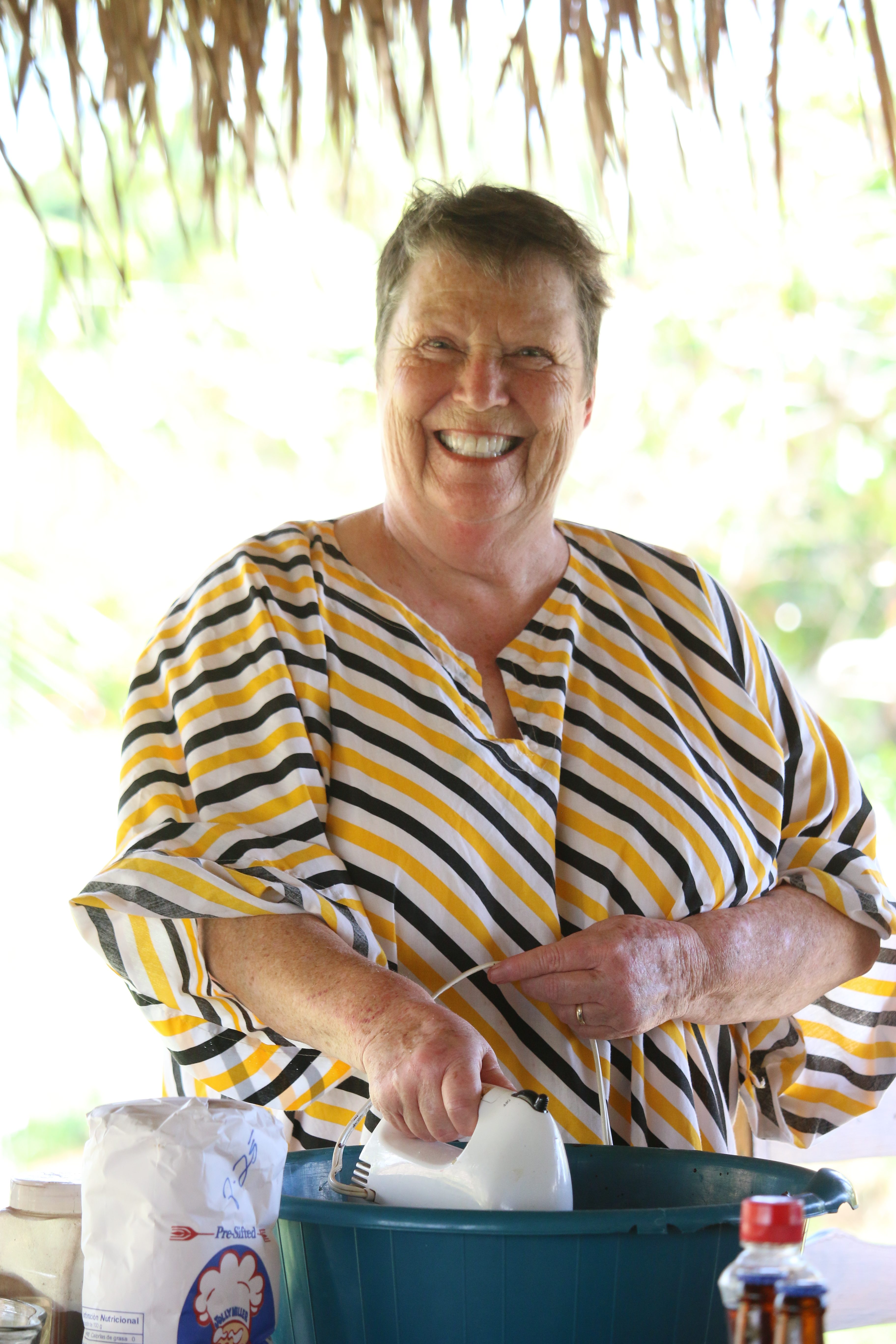
That’s not a smile, it’s really a grimace. I had been beating the batter for about 45 minutes when this picture was taken and my arm was falling off.
While the cakes were baking we went out for lunch, then returned to collect our precious keepsakes. As you may have gathered, the recipe made a lot of fruit cakes. Many more than just the 2 small cakes we took away with us. The rest of the batter was used to make several more cakes that our owner/teacher Owanie would be serving in her restaurant. After we left Palmento Grove, we spent the afternoon just lazing around. Then off to The Gecko for dinner. And for Mark’s birthday cake – you guessed it. We sampled one of the Black Fruit Cakes. And I’m here to tell you, it was one of the best cakes I have ever tasted. And yes I will be making Black Fruit Cake for Christmas gifts this year. Truly out of this world. And yes, I will be scaling the recipe down to a reasonable proportion.
Friday – November 11, 2016
After a leisurely breakfast, we decided this was the day to go for a boating experience. So Kyra, the concierge for our guest house booked us on what she too believed would be a simple boat ride. Well, this simple boat ride turned out to be a boat ride out to the cayes (pronounced keys) to snorkel. This was a complete surprise to all of us. I didn’t have my bathing suit on, but what the heck, I’d gone swimming in my shorts before. So we all got fitted for fins and snorkels and walked down to the boat.
We learned that it would be a 45 minute ride (14 miles) with no cover on the boat. And then when we got there, very little shade for those who didn’t want to snorkel, or snorkel for only a short time. So Vicki and Mark decided this was not for them.
Andy and I decided to go for it, so after 45 minutes of vigorous pounding over the waves we went ashore at South Water Caye where we got our first ever snorkeling lesson. OMG – I loved it! You know the old saying “like a duck takes to water” – that was me. I put the mask and tube thingy on my head as well as flippers on my feet and I was ready to explore the ocean. Mr. C. on the other hand, was, in his own words “a spectacular failure at mastering the basics of breathing through a tube”. I decided then and there that when next I had the opportunity to snorkel (notice I said next time) I was going to make certain that I bought my own snorkel and then practiced beforehand at the local YMCA pool. But after deciding that I had had enough sun and Mr. C. had had enough salt water consumption, we told our instructors that we were ready to head back to the mainland. So back in the boat for another 45 minute back-breaking boat ride. We landed on the shore right in front of our guest house and I headed immediately for the shower. Since I had been wearing my regular clothes, I showered and did laundry all in one fell swoop. We then spent a couple hours reading, then off to dinner. After dinner it was early to bed because we had to be at Charlie the birdman’s place at 6:00 am the next morning.
BTW, my clothes were still wet the next morning. Perhaps the humidity?
Saturday – November 12, 2016
Let’s go birding! So after a quick cup of coffee and half a bagel we arrived at Charlie’s place right on the stroke of 6:00 am. But before leaving our rooms, we decided that since we were basically heading for the jungle, we ought to don our hazmat outfits. Do let me explain.
Before leaving home, all four of us selected a few items of clothing that would be sprayed with Permethrin, a Super Man strength bug repellent. If one can believe the statement on the Permethrin bottle/toxic-waste container, there wouldn’t be a self-respecting mosquito worth its various viruses that would come near us when we were wearing clothes sprayed with this product. Ticks would also be repelled. The scariest part of the entire ordeal was reading the warnings on the label of the Permethrin bottle. For example:
If inhaled,
1) move person to fresh air (this implies that the person wouldn’t be able to move themselves)
2) If person is not breathing, call 911 or an ambulance, then give artificial respiration, preferably mouth-to-mouth, if possible
3) Call a poison control center or doctor for treatment advice
And that was just the warning for inhaling the fumes! After that there were also dire warnings if you swallowed the stuff or got it on your skin or in your eyes. (Refer to number 2 above, and then tell me why I would want to give anyone, even my own dear husband, mouth-to-mouth artificial respiration after readings the warnings about what happens to you if you swallow the stuff or get it on your skin!) But being folks that are not easily daunted (some would say stalwart or more to the point – crazy), we dressed ourselves carefully with gloves, masks, goggles, hats, and full body armor. Mark performed the ritualistic “save yourself from mosquito bites” task for his team and I sprayed the noxious hazmat cocktail on our clothes for team Carr.
Having accomplished this chore, it meant that each of us had a set of long pants, high collar and long sleeved shirts, hats, and socks that were packed separately and at the ready for anytime we suspected that mosquitos or ticks might rear their ugly heads. Or in the case of ticks, bury their ugly heads.
Now you do realize we only needed our hazmat clothing when we were going to the jungle/rainforest. Which BTW, seemed to be about 50% hotter than our balmy, ever present breezy home base. So here we are, in a virtual steam oven wearing clothes appropriate for life aboard the Polar Express! So by the last day that we thought it advisable to protect ourselves, I threw caution to the wind and wore my regular clothes. There simply comes a time when you just have to trust the Gods of good fortune to “watch your back” so to speak. Of course, I did slather my entire body in mosquito repellant before leaving the car. Another case of “trust but verify” which just so happens to be my new mantra. So thus dressed, we arrived at Charlie’s place where we transferred our cameras, binocs, purses etc. to his rented van.
We headed out over roads we had traveled several times before. Then we started inland (West) into the jungle and a much more densely vegetated area. During the course of the next 5 hours we saw many birds, plants, and even some indigenous critters. The Green Iguanas we came across were fantastic. Mature males can actually reach a length of 6 feet. As the male ages and his interests turn to love and procreation, he turns a lovely shade of orange during mating season. The female iguanas, on the other hand, are quite small and remain black.
During our drive, we actually saw 55 types of birds including Toucans, Parrots, Parakeets, Tropical Mockingbirds, and one Baltimore Oriole. (Not kidding here folks, we saw a Baltimore Oriole, and no he did not have a mitt in his hand!)
Some of the birds we saw while in Belize.
Roseate spoonbills, Great Egrets, Jabiru Storks
Tropical Mockingbird
Red-Lored Parrot
Collared Aracari
Cattle Egret (+ cattle)
Northern Jacanas and Great Egrets
After our amazing tour with Charlie, we headed out for breakfast/lunch and then back to the room for afternoon siestas. (No wonder not much gets done here in the afternoon. It’s just “Too Damn Hot”. )
Sunday – November 13, 2016
It’s Zoo day! So after a bacon, eggs, bagel, and yogurt breakfast cooked in our very own kitchen, we headed out on what turned out to be an amazing adventure.
The Belize Zoo is not in Belize City as I would have expected, but rather on its Southern outskirts. The zoo is a 2 hour drive from Hopkins via a circuitous inland route passing Belmopan, which interestingly enough has the smallest population of any capital city in the world.
We drove through the zoo arches and into the parking lot. There were only 7 cars in the lot. This was not at all what I was expecting. So after a cursory glance around the small area, my first thought was that we had yet to come to the official zoo parking lot or that the zoo wasn’t really open. But after determining that yes the zoo was open, and yes this was the parking lot, we parked our car, used the rest rooms and paid our money. Apparently there just weren’t many zoo visitors that day. Now you realize, I was not upset about us being virtually alone at the zoo. But then, anytime a tourist destination parking lot is not overrun with tour buses, I’m a happy camper.
We soon realized that this was a very small zoo, and I was kind of concerned that we had come a long way for nothing. Boy was I wrong! We started walking and after a couple of exhibits, a young man stopped us and told us that if we wanted to see a jaguar being fed, we should hurry along the path. When we arrived, we saw the jaguar immediately. He was in his enclosure, but he was circling a small cage containing 5 people. (My thought at first glance was that there was something mighty wrong with this picture! But I soon realized that the 4 visitors and one game keeper in the cage were there on purpose. Duh!)
The jaguar was performing for the caged people by doing somersaults and walking in circles. Then upon direction from the enclosed game keeper, this absolutely magnificent animal jumped on top of the cage and gladly accepted chicken necks from the hands of the people in the cage. As the jaguar was eating, the incarcerated people were invited to pet him, but warned to stay away from his head. Just watching, we were entranced.
But what caused all of our jaws to drop was when Junior (the jaguar) licked the people’s foreheads through the wire on the top of the cage. The keepers called this raspy tongue gliding over foreheads – jaguar kisses. After Junior was put back in his small pen and the people were released from their cage, Junior was once again released into the large enclosure. At this point, it was a crowd of 5 observing Junior – the four of us and the keeper. We hung around, watched Junior eat some more chicken and asked the poor game keeper a myriad of questions about this beautiful animal. After a bit he got the hint that we were all really enamored. So he offered us the chance to have our own close encounter. We jumped at the chance. (Vicki and I literally jumped at the chance. You would have thought we were 5 year olds jumping up and down excitedly after being told we were about to visit Santa Clause!) After a few minutes, and both of us having composed ourselves as much as possible, we were led into the enclosure. (BTW, this once in a life time adventure cost each of us $12.50 US. Unbelievable!)
Now please understand, while we were walking to our “cage”, the jaguar was safely residing in another cage. But once through the main enclosure fence, first ducking under an electric wire, and safely in our small cage, which is securely padlocked BTW, Junior was released. And of course he headed right for us. He knows the drill. Apparently Junior was born at the zoo and knows the ropes very well. I should mention that this is a rescue zoo. All of the animals, except the ones that were born on the premises, were rescue animals. None had been hunted and brought into captivity. They all had been either hurt, ill, or in some way in need of human assistance to survive. And their enclosures were not cement. They were natural floor to ceiling forest. But back to Junior.
After Junior performed his tricks on the jungle floor, he would always receive a piece of chicken as a reward. Then it was time for him to jump on the cage. If I live to be 105, I hope I never forget the thrill of being so close to such a magnificent animal. Both Mr. C. and Mark fed Junior, and we all got a kiss. You have to be very careful when you receive your “kiss”. If you have long hair, you are discouraged from receiving a kiss because Junior might inadvertently pull out some of your hair. But since the guys and Vicki and I all had short hair, we went for it. It was like being touched by a piece of wet, coarse grade sandpaper. BTW – I still haven’t washed my forehead! I have to mention here that Mark noticed that the chicken neck pieces Junior was so enjoying looked a lot like fingers. A bit unnerving to say the least. Mark mentioned this fact to the zoo keeper, but all he did was laugh. Yikes!
After our time with the jaguar, we continued to go thru the zoo exhibits. We saw the other 4 members of the cat family that live in Belize – Puma, Ocelot, Jaguarundi, and Margay. The other critters we viewed were the King Vultures, White Tailed Deer (not like ours), Central American Tapirs, Toucans, Blue-crowned Mot-mots, Ornate Hawk-Eagle, White-lipped Peccaries (Boars), Black Howler Monkeys, Tayra (Bush Dog), Morelet’s Croc (fresh water), American croc (salt), Coatimundi, Guon, Curassow, Harpy Eagles, Parrots, Frigate bird and one lone Scarlet Macaw. Some pictures of the other animals we encountered:
After leaving the zoo we went to lunch and then home to read and computer. We were so hot and so tired from our adventure that none of us felt like going out to dinner. So the guys went out for pizza and brought it back to our room. Really good pizza. Really good guys! Then early to bed because we had an early date the next morning in Placencia for a cruise up the Monkey River.
Monday – November 14, 2016
Up early for our tour up the Monkey River. We left at about 6:45 am for our drive to Placentia to catch our tour boat. Now let it be known right here and now, there is nothing fancy about the tour boats in Belize. Our tour boat was really just a dory with a less than useful canopy. The canopy didn’t keep the rain out, the sun out, the bugs out, or anything in between! But we survived the boat trip, and I guess you can’t ask for more than that! (I mean what else could we have realistically expected to find in a very unpopulated jungle/rainforest area that routinely receives an annual rainfall of over 200 inches and is the quint essential environment for bugs of every type?) You’re going to get wet, and you’re going to get bit!
Our captain, Jeremy, was great. He knew all about the flora and fauna along our route. But in order to reach the mouth of the river, we had to travel south along the coast for about 45 minutes.
Much of the time we were in and out of small mangrove islands. At one point we had to kill the engine so that Jeremy could listen for a boat heading towards us through a very narrow passage. There was just enough room for one boat, and the last thing Jeremy needed was a head on collision with a boat full of tourists who might possibly keep an attorney on retainer. So we stopped, listened, and proceeded at full throttle. Of course! Why tarry?
After 45 minutes of fairly smooth sailing, we landed in Monkey River Town.
This was really just a small fishing village where our captain lived with his wife and children and where he professed to be related to about 60% of the residents. A bit of a scary thought, but all inhabitants seemed to be perfectly normal. After making our lunch menu selection at, and I kid you not, Alice’s Restaurant, it was back on our boat and up the river.
The cruise was a wonderful inland water trip to a practically untouched area teeming with wildlife. We saw many types of birds, small Sac-winged insect bats sleeping in a row on the bark of a tree, fresh water crocodiles (both large and babies), howler monkeys, and a turtle. At one point we got off the boat and walked a short distance through the jungle until our guide found a troop of howler monkeys and we could hear their growl. Of course to make them growl, our guide had to hit the trees with a stick and make howler like noises, but the monkeys didn’t seem to be too upset. Of course we were safe because the monkeys never set foot on terra firma, or so we were told. I personally didn’t care to stick around too long anyway because I was truly worried about a snake falling off a tree and onto my head. I told Andy if that happened, to just leave me in the jungle. Because I’d be scared to death way before the bite could do any harm, regardless of whether or not the snake was venomous.
Future travelers to Belize, please note: We didn’t see one snake or scorpion the whole time we were in Belize. We did see a couple of tarantulas, but they were just crossing the street in front of our car. I know, we are all aware of the age old question of why did the tarantula cross the road. But, no, it’s not just to get to the other side. Fall is the time of year when male tarantulas seek female companionship. It’s not that they particularly look for roads to cross, but on their quest for the love of their life, they must assume some risk. And believe me when I say that crossing a road or driving on a road in Belize is truly a risky business, be you human or be you tarantula. But back to our river adventure.
After our walk in the jungle, we returned to the boat with muddy feet but big smiles on our faces. My smile was mostly from not seeing a snake, but I have to admit, the jungle walk wasn’t nearly as creepy as I expected. However, I would have hated to try and beat my way through the bush. Navigating the path was hard enough. Trying to actually build a path would have been almost impossible. The flora is not only dense, but sturdy. And it grows on every surface, even other plants.
At the mouth of the river, which BTW is fresh water all the way out to the surf, we stopped and enjoyed our lunch at Alice’s Restaurant. Then back on the boat and up the coast to the landing in Placentia. I need to mention that on our way back we cut the motor for a few minutes in an area just off a small inhabited island to watch for manatees. As you may or may not know, manatees are referred to as sea cows because like cattle, they feed off of grasses. (In the Manatees case, the grass happens to be on the bottom of the sea.) Manatees rarely live in water deeper than 19 feet. When manatees are active (eating), they must surface every 3-4 minutes. If they are resting they can stay submerged for up to 20 minutes. We actually saw a couple manatees breaching, but only their nostrils were visible. Oh well, next time! Then back on our way, getting thoroughly drenched by a short but furious rain squall on the way.
FYI: There are more than 1100 types of bats around the world which together amount to approximately one quarter of all mammal species. They are found everywhere except in Polar Regions and the most extreme desert environments. The majority of bats inhabit tropical forests where they outnumber all other mammals combined.
Tuesday – November 15, 2016
After a lovely breakfast at Tina’s Café, we headed out for our visit to the Mayan site of Xunantunich, pronounced “Shu-NAN-tun-ich”. At breakfast, Mariano who I previously mentioned hangs around and helps Chef Tina whenever he is not working at the resort, thankfully gave us directions to the site. Unlike every other country we have visited, there are very few highway or road signs directing us anywhere, even to this important site. Getting there included maneuvering the streets of two small villages, Santa Elena and San Ignacio. Then thankfully, still following a narrow, business fronted road, we accidentally stumbled on the unsigned, almost obscured, right-hand turn down a short steep ramp-like road which led us to the hand-winched cable ferry we were told would take us across the river to our designation.
This two car plus passengers “modern” piece of technology (circa 1650 or earlier by the looks) allowed us to cross the Mopan River without having to wade. Of course only the driver could remain in the car.
So Mark, Vicki, and I walked on while Mr. C. carefully drove onto the ferry. Not a long ride here folks. We practically arrived at the other side before we knew we were moving at all. Then back in the car and up to the visitor centre. From there, further up the hill and to the ruins themselves.
This Mayan site was built on the top of an artificially flattened hill. Xunantunich incorporates 5 plazas, although the remaining structures are grouped around just 3 of them. The city’s tallest building, at 131 feet, is commonly known as El Castillo and is a prominent symbol of Belize’s national identity. As is often the case with Mayan ruins, the buildings were layered, with the most recent version on top. El Castillo is ringed by an extensively restored stucco frieze decorated with abstract carvings and depicting human faces, jaguar heads, and a king performing rituals associated with authority. (Don’t ask!)
And of course everywhere you look you find the ubiquitous Spinytail Iguana climbing about or simply resting on the walls.
So of course, it was El Castillo that Mark and Mr. C. had to climb. I would have joined them except the riser part of the stairs looked to be about 14-16 inches tall. Much taller steps than I could have managed, that’s for sure! And to think that the Mayan men and women who built and lived in this city were much shorter then men and women are today. And they had to frequently climb these steps? Boggles the mind!
After our visit to the ruins we had lunch before setting off on our 3 hour return trip. (I believe I already mentioned our harrowing road adventure in my 11/4 post.) All in all, an amazing visit to the heart of the Mayan culture.
Wednesday – November 16, 2016
Up early, fast breakfast, drive to airport, drop off rental car, check in, wait, fly, land, buy lunch, wait, fly, land, gather luggage, pick up Mark and Vicki’s car, stop at McDonald’s (we were all starving), arrive home tired, happy, and glad to see our respective kitties.
Final analysis: beautiful country, wonderful sites, terrific experiences, unforgettable birds and animals, delightful and welcoming people, and the perfect place to adventure with dear friends
A huge thank-you to Mark and Vicki for contributing their amazing photos for this post. And to anyone who reads this and finds vocabulary and punctuation errors, they can all be attributed to me. Also, opinions expressed in this post are mine and mine alone. And at this point, I find no compelling reason to justify or change them, so I sincerely hope you don’t find anything I have written offensive.
Respectfully submitted,
Patti Carr – Chez Carr Cuisine
Black Fruit Cake (Owanie’s recipe)
3 lbs. candied fruit including candied papaya in different colors
1 lb. raisins
1 lb. toasted pecans
Rum to cover (Our instructor started with a 1750 ml bottle of rum. When she was done covering the fruit with rum, she used almost the rest of the bottle in the batter. There was only about 3½ inches left in the bottle when she proclaimed that the batter was perfect!) When our instructor makes fruitcake for her family, friends, and restaurant patrons, she marinates the fruit and raisins for a week before preparing the batter.
5 lbs. dark brown sugar (more like demerara sugar than our fine grained brown sugar)
2 c. butter
3½ c. Blue Bonnet margarine
Cream the butter, margarine, and brown sugar until your arm falls off!
Note: Normally it would be prudent to start with butter or margarine that you have allowed to come to room temperature by setting out on your kitchen counter for a few hours. But in Belize, not necessary. As soon as you take butter out of the refrigerator, it’s at room temperature within 10 minutes!
5 orange rinds and 1 lime rind, grated
½ c. whole cloves, toasted and finely ground
½ c. whole allspice, toasted and finely ground
2 large cinnamon sticks, toasted and finely ground (about 2 tablespoons ground)
2 whole nutmeg, ground
15 eggs, separated and whites and yolks each beaten before adding to batter
1 (28 ml) bottle Rose flavoring (Benjamin’s or Rayners)
5 c. (5 containers Bradley’s Caramel Coloring)
1 T. espresso powder
3 c. golden syrup
Add to butter mixture
5 lbs. all-purpose flour
7 T. baking powder
5 T. baking soda
Sift together and add to batter
2 c. sweet sherry
2 c. of rum
1 bottle Negra Modelo
Add to batter
Drain fruit and set aside.
Add leftover rum to batter.
Stir and let sit for several hours.
When ready to bake, butter and flour your pans. Coat the drained fruit with enough flour to prevent it from sinking when spread on top of the cake.
Sprinkle the fruit over top of batter.
Place pan of water on lowest rack in your oven.
Bake cakes in a 350 degree oven 1 hour or until done.
Remove from oven and let cool completely.
Store for several months adding additional rum once in a while. (Can’t hurt, right?)
To serve, pour a little rum over cake and serve with rum flavored whipped cream.

